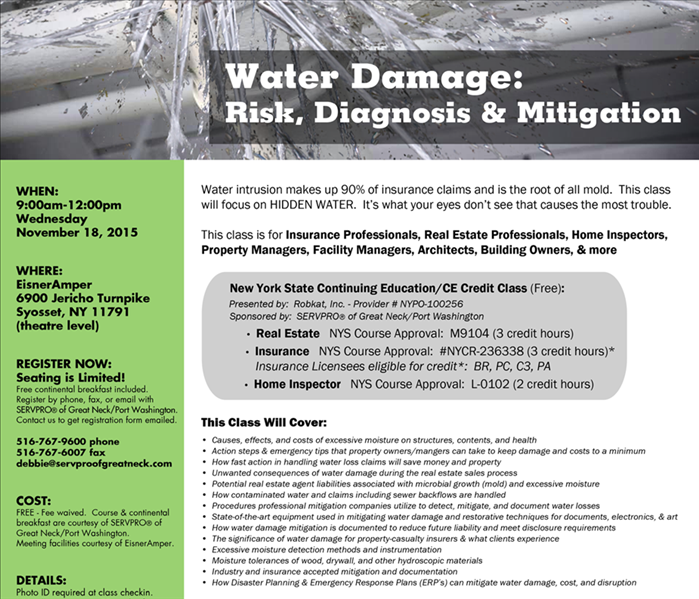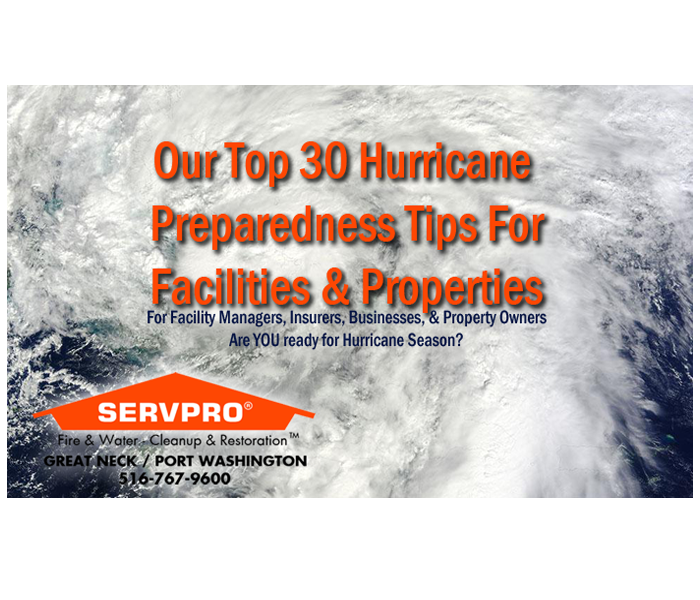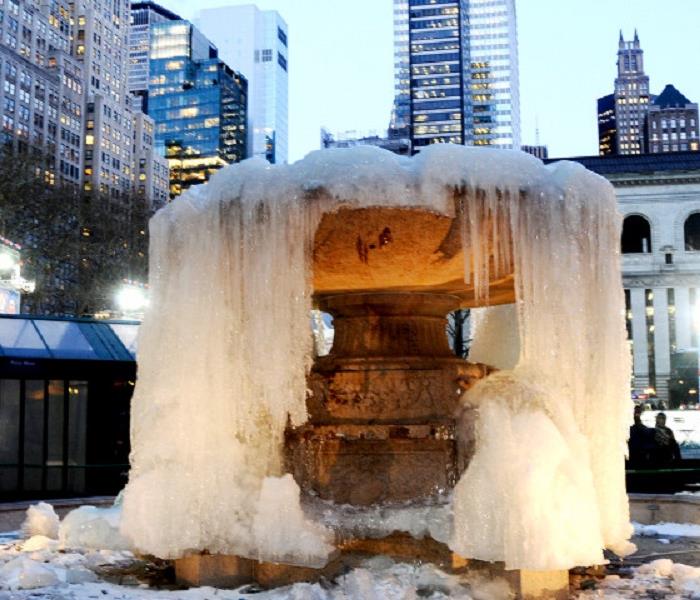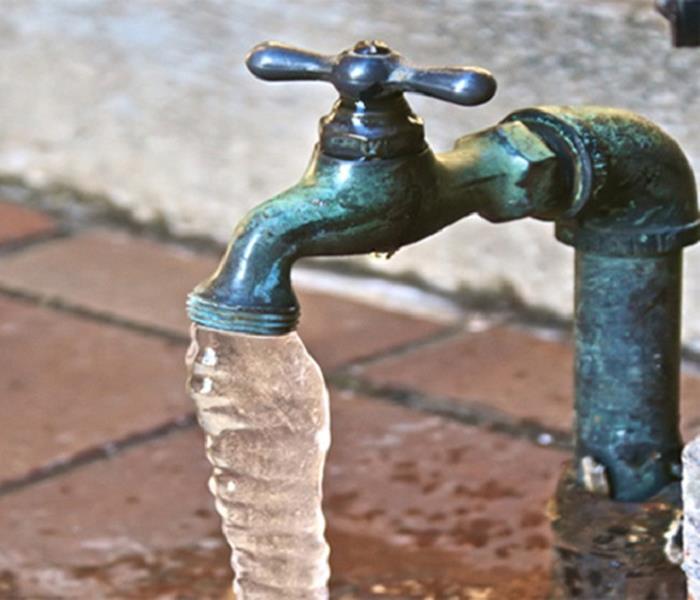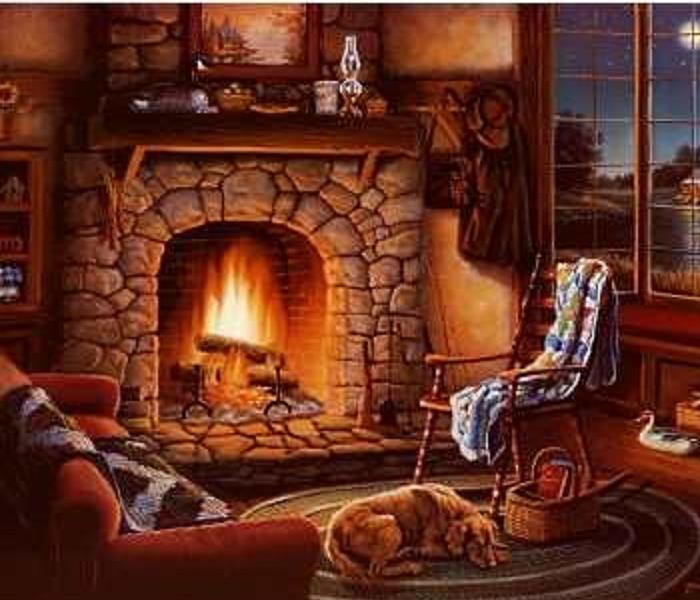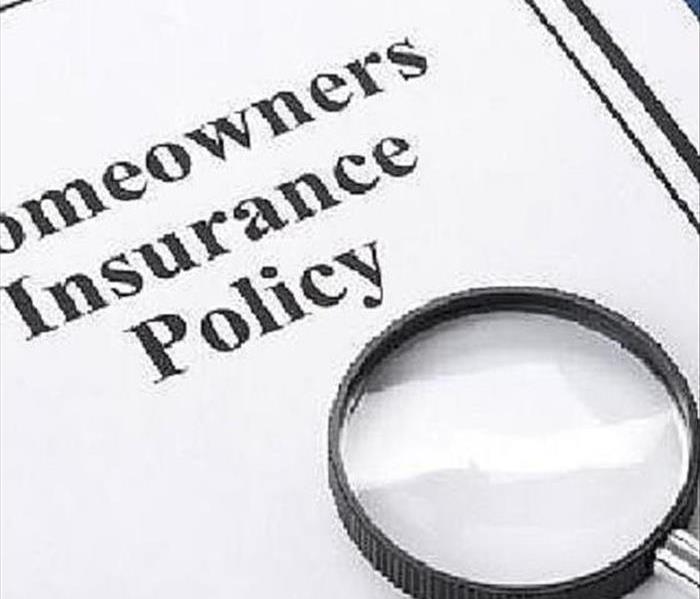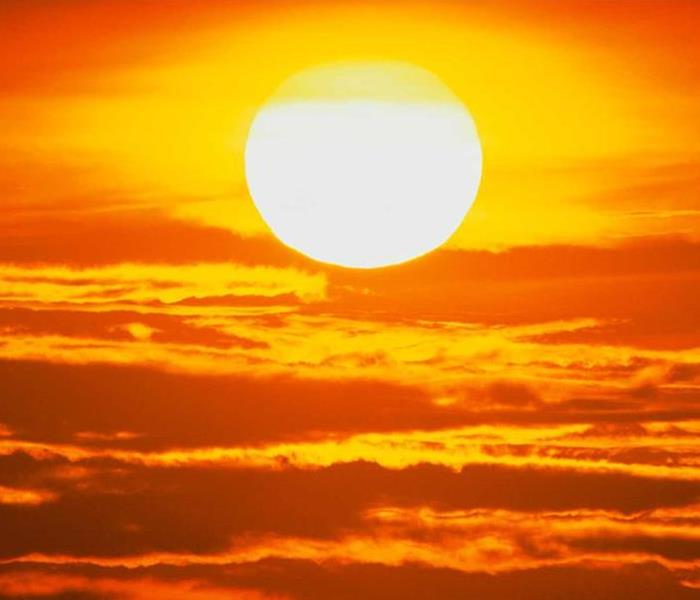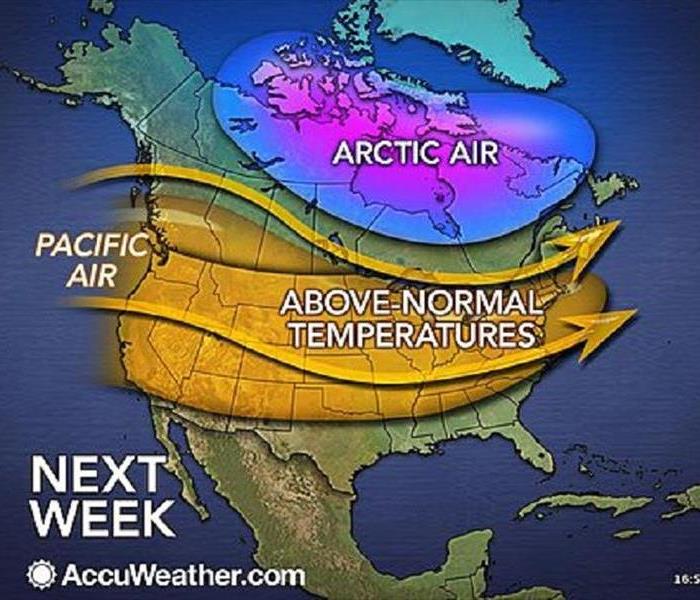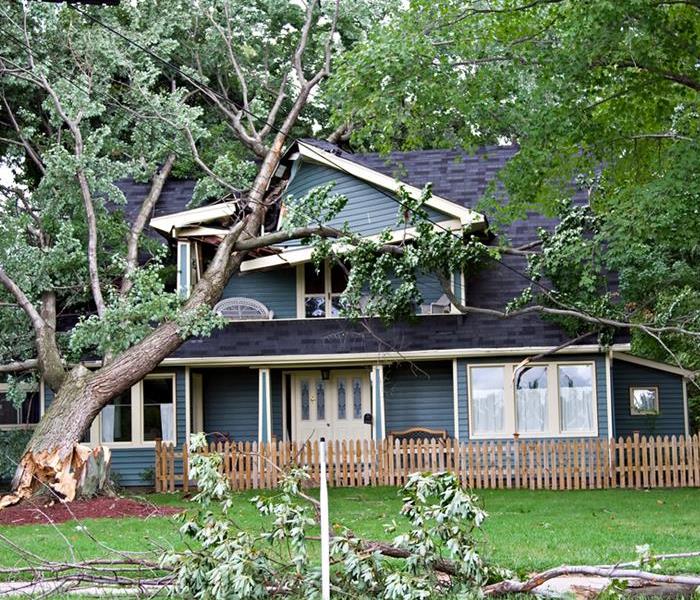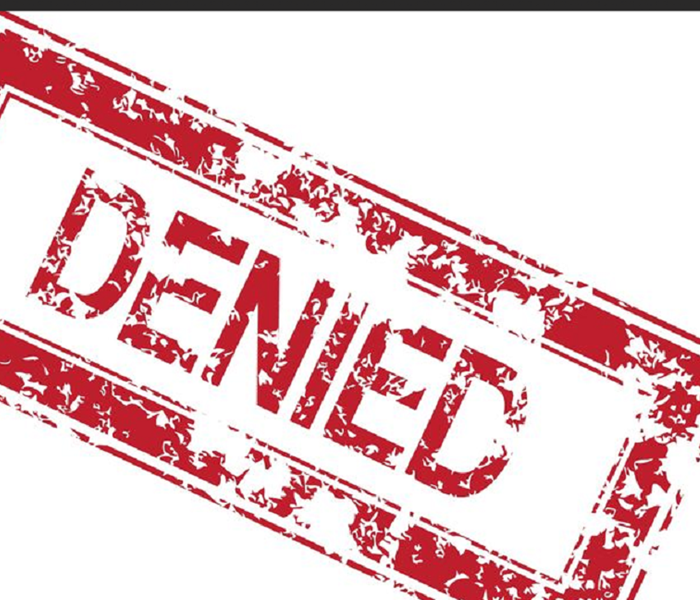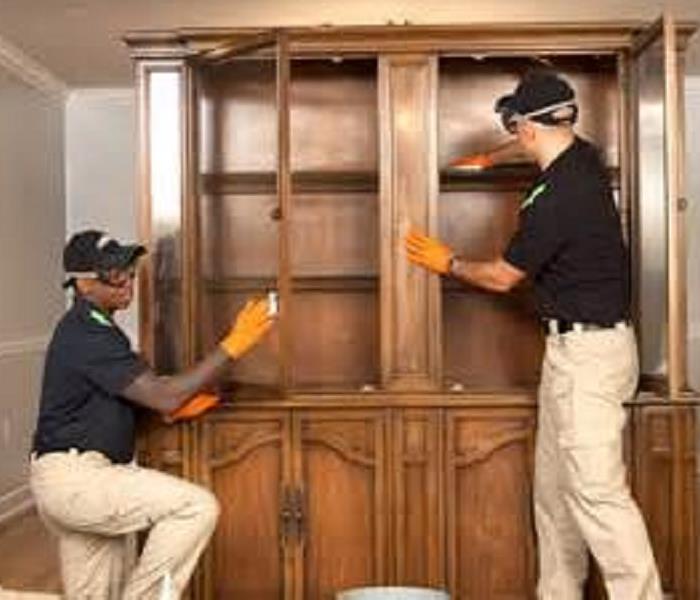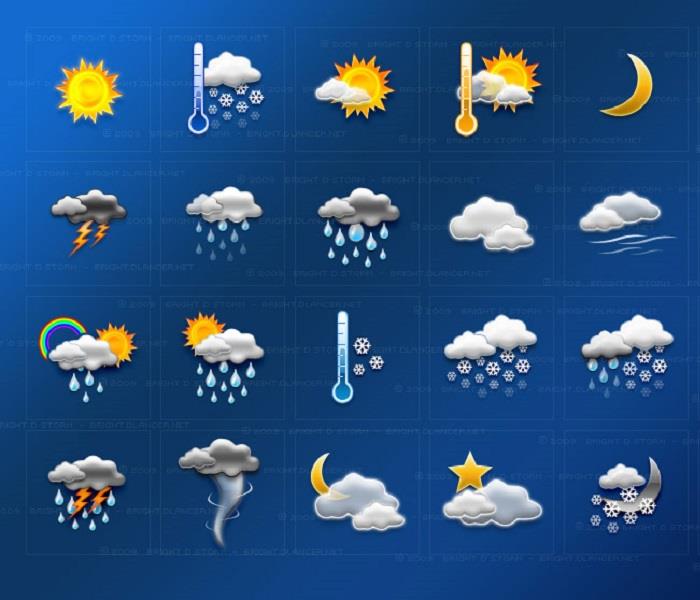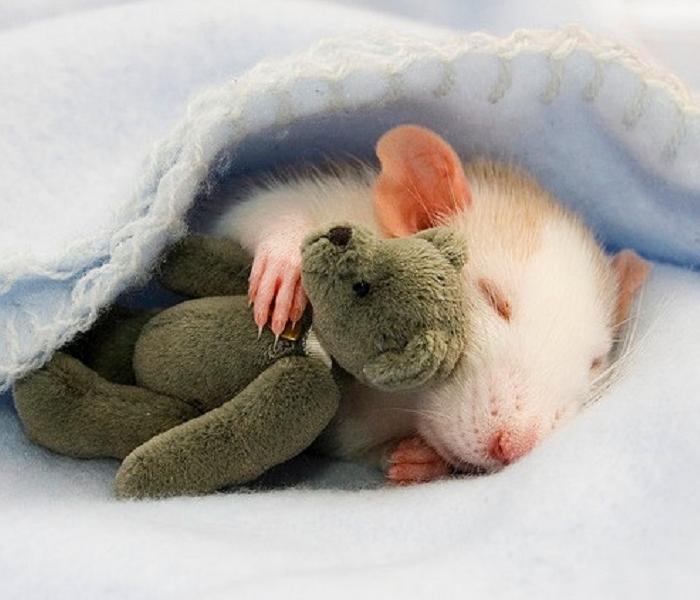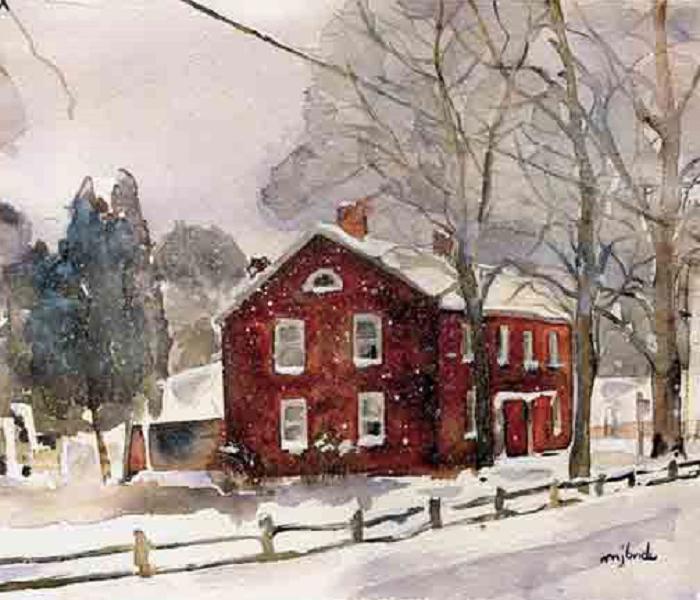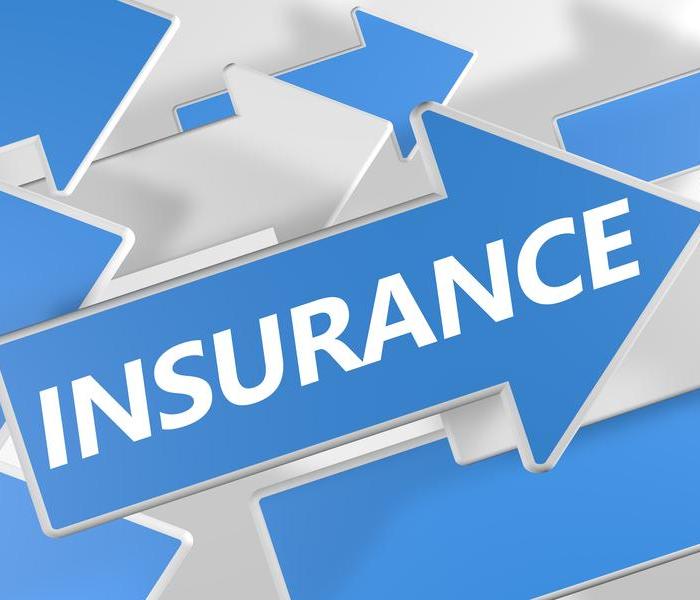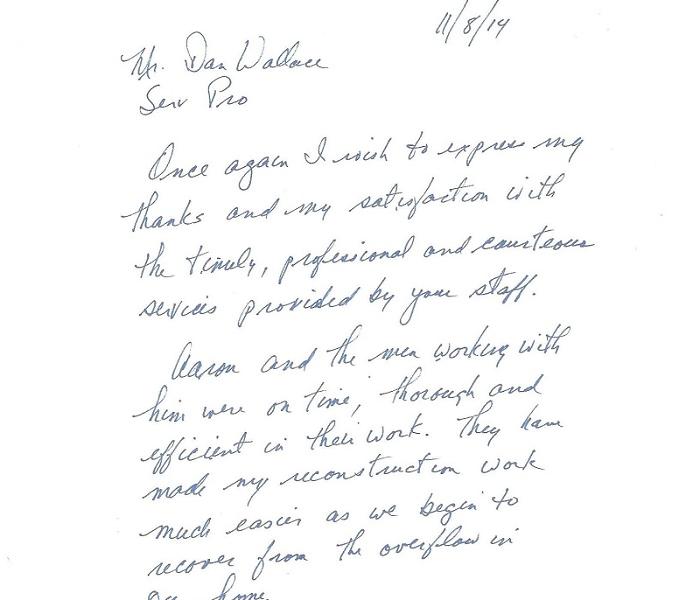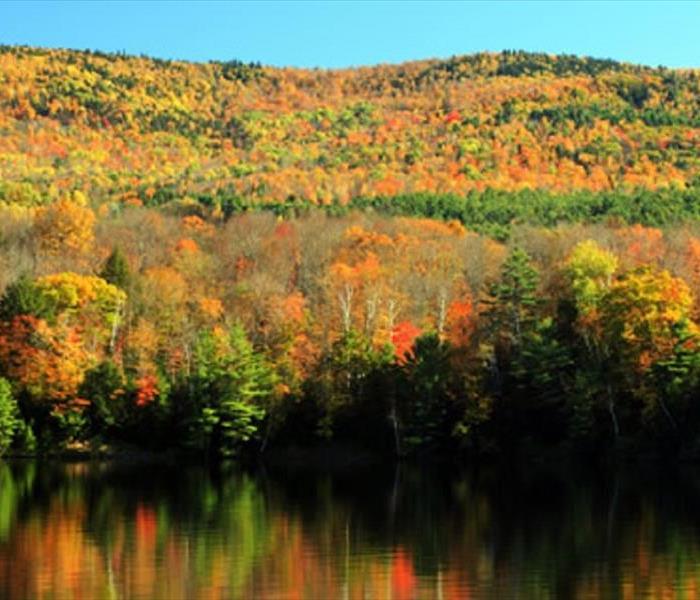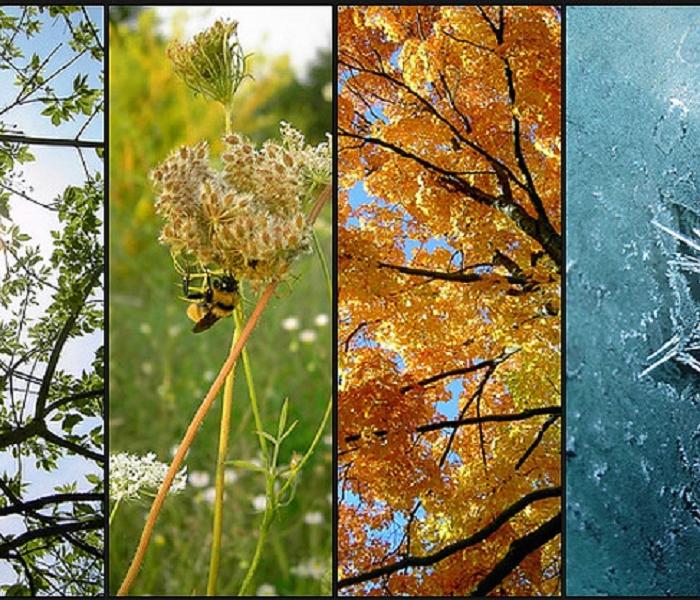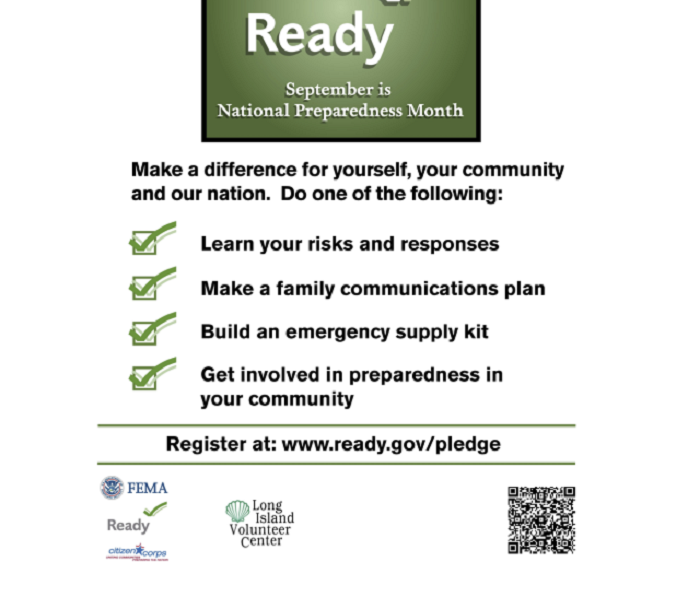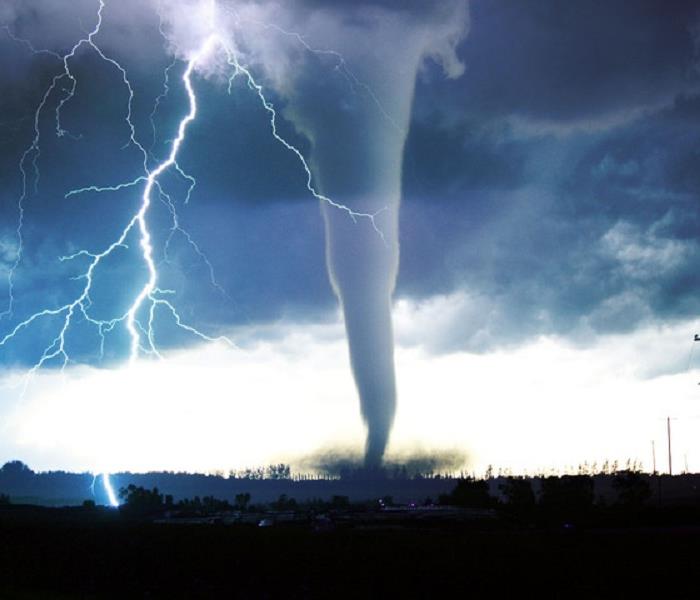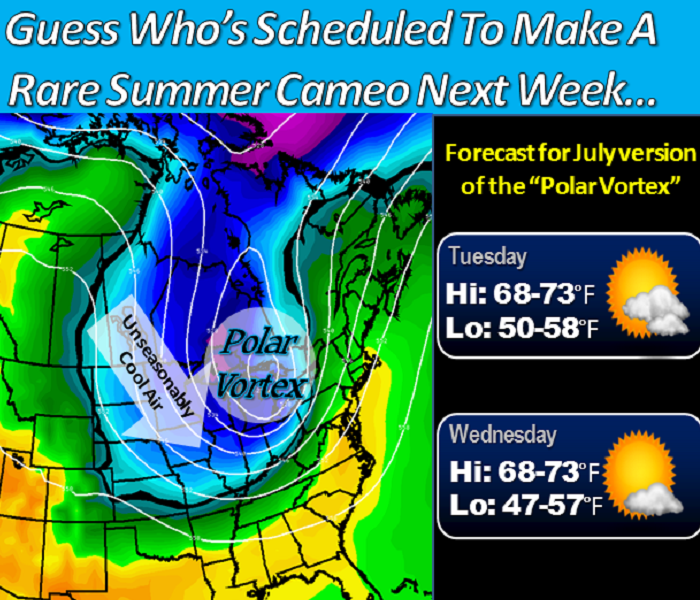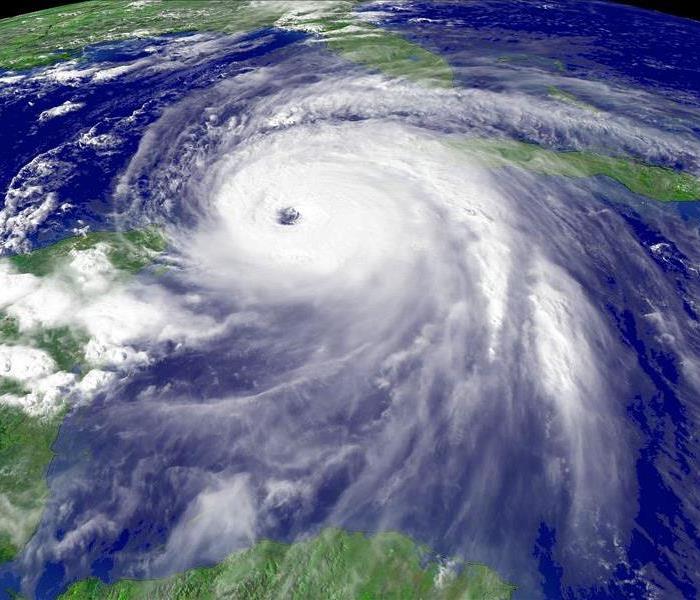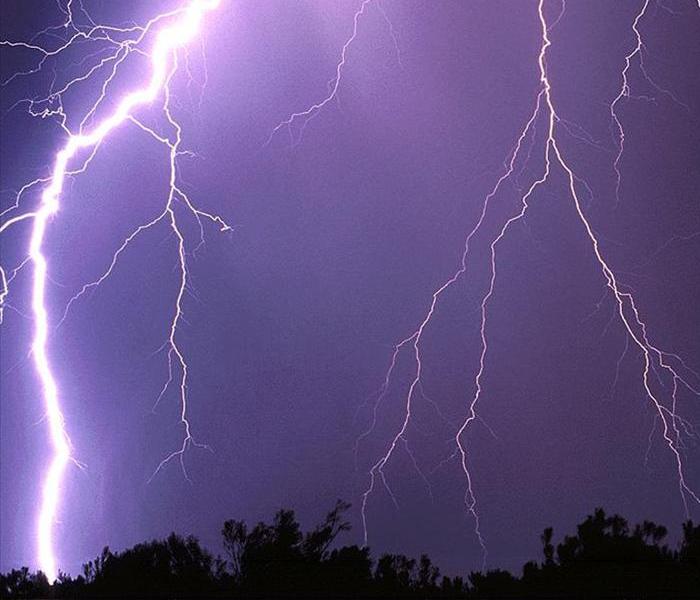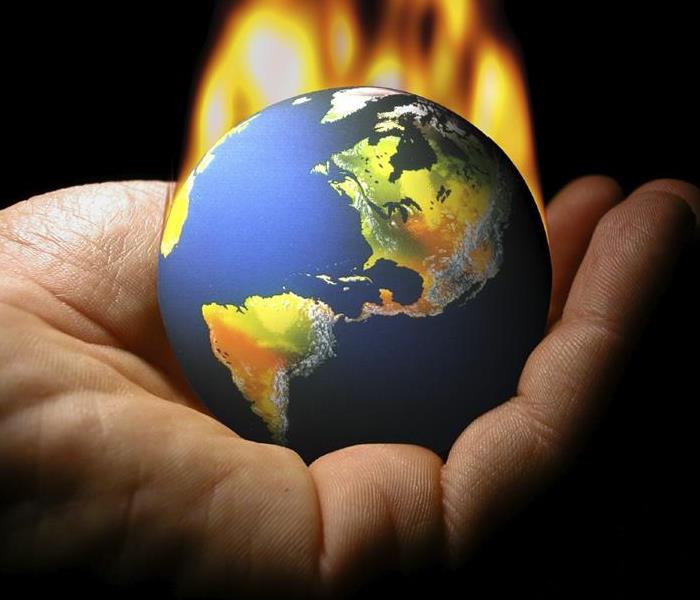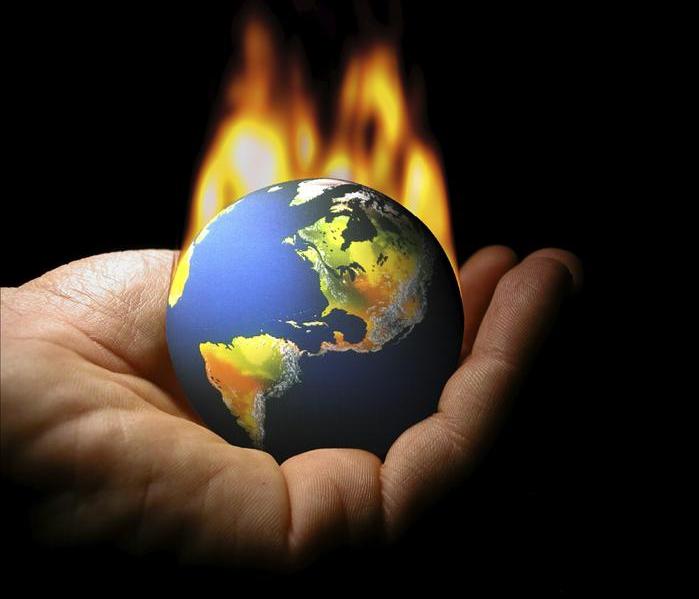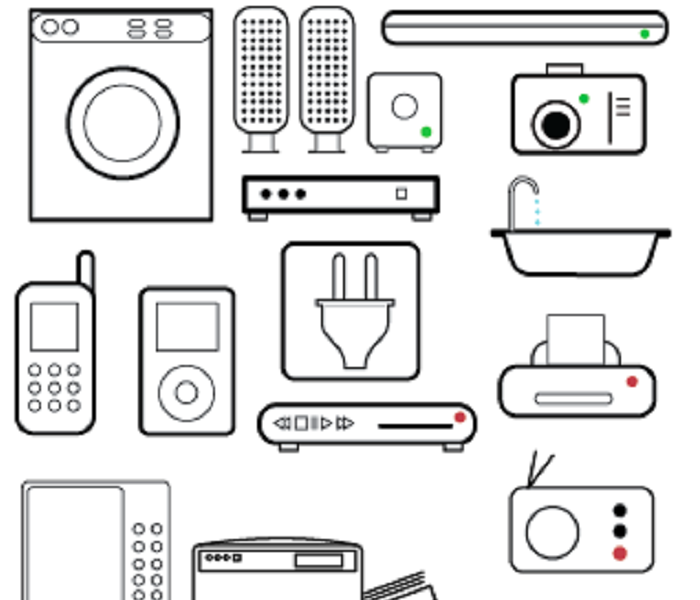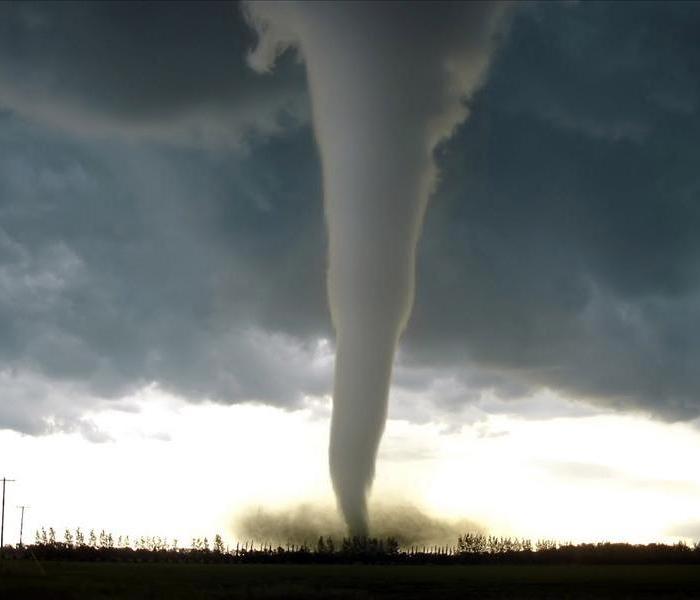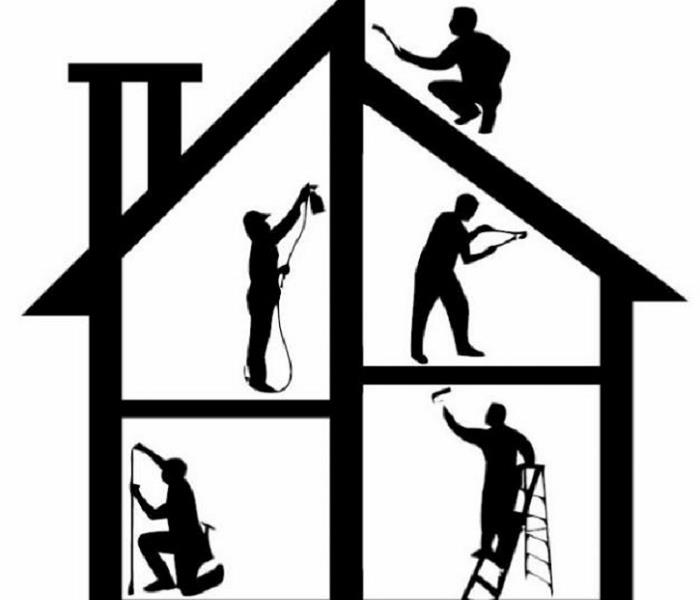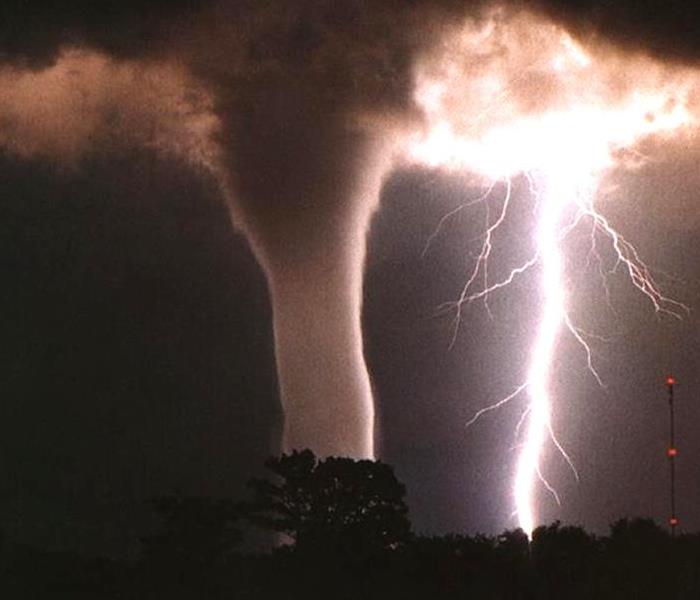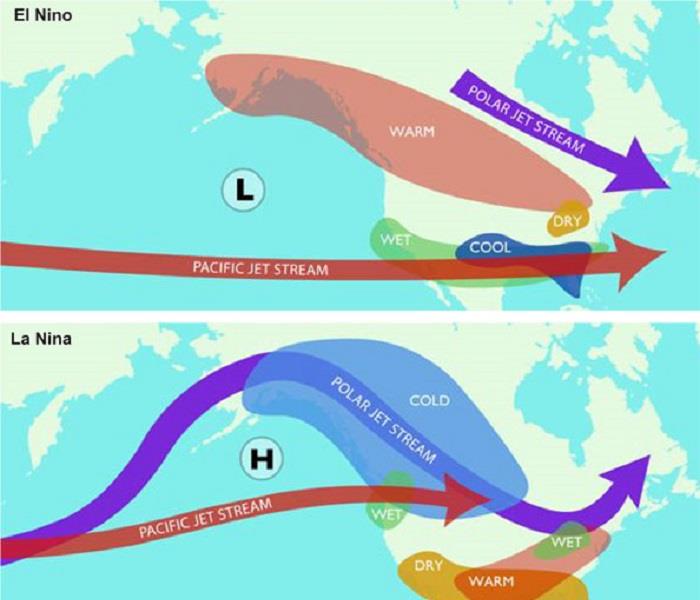Archived General Blog Posts
What the Polar Vortex Means for Your Pipes
1/15/2024 (Permalink)
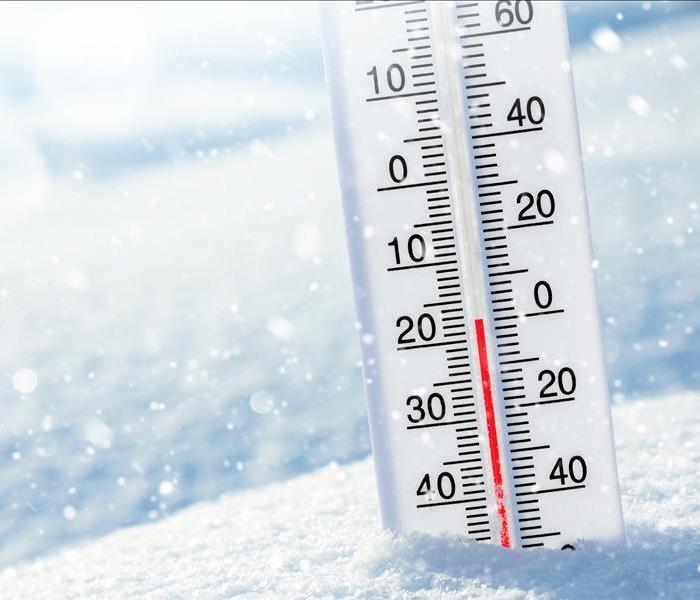 Polar Vortexes bring exceedingly cold temperatures
Polar Vortexes bring exceedingly cold temperatures
As the winter weather continues, "Polar Vortexes" become far more likely, signaling plummeting temperatures and severe weather conditions. This meteorological term, often associated with bone-chilling cold, can have a profound impact on daily life, particularly for homeowners and business owners. In addition to several drops in temperature to worry about, polar vortexes also heavily affect plumbing systems. As temperatures dive, the risk of pipes freezing and subsequently bursting increases, potentially leading to severely damaging water floods. Understanding the polar vortex, how it affects plumbing piping, and the necessary preventive measures are essential for bracing for the winter months. SERVPRO of Great Neck and Port Washington has crafted some preventive measures you can utilize to ensure your plumbing stays safe during the ongoing polar vortex.
Understanding the Polar Vortex and Its Impact
A polar vortex is essentially a vast expanse of swirling cold air that typically envelopes the polar regions. However, during the winter, the vortex at the North Pole often expands, pushing frigid air toward the equator and affecting much of the Northern Hemisphere. This shift can result in a sudden and steep drop in temperatures, often catching businesses and residences off-guard.
The critical issue with these plummeting temperatures is their effect on water pipes. Water expands when it freezes, and this expansion can exert extraordinary pressure on pipes, regardless of whether they are made of metal or plastic. When the pressure becomes too great, pipes can burst, leading to water damage, the potential for mold growth, and the need for repairs on top of restoration and cleaning services.
Prevention and Protection
To mitigate the risks of a polar vortex freezing your pipes, consider the following preventive steps:
- Insulate Pipes: Wrapping exposed pipes in foam insulation, particularly those in unheated areas like basements, attics, and garages, can significantly reduce the risk of freezing.
- Maintain Consistent Indoor Temperature: Keeping your home heated consistently, even when you're away, helps keep the internal temperature of pipes above freezing.
- Allow Faucets to Drip: Allowing a slight drip in faucets can prevent pressure buildup within pipes, reducing the risk of freezing and bursting.
- Drain Water from Pools and Sprinklers: Drain water from the swimming pool and sprinkler supply lines following the manufacturer's instructions.
- Close Inside Valves Supplying Outdoor Hose Bibs: After removing and draining outdoor hoses, close the inside valves that supply these bibs but leave the outside valve open.
- Insulate Vulnerable Spaces: Increase insulation in areas like attics, basements, and crawl spaces to maintain higher temperatures.
- Open Cabinet Doors: Allow warmer air to circulate around plumbing by opening kitchen and bathroom cabinet doors.
The polar vortex, while a natural weather phenomenon, poses a significant challenge to plumbing, particularly regarding the risk of frozen and bursting pipes. By understanding this meteorological event and taking proactive, preventative measures, you can safeguard your home against the potentially devastating and costly consequences. Prevention actions are far more effective and less costly than repair. Stay warm, stay informed, and prepare your home for whatever the winter brings.
Should you incur any water or storm damage during the Polar Vortex, feel free to contact SERVPRO of Great Neck and Port Washington, and we'll make it "Like It Never Even Happened!"
Happy Spring From SERVPRO of Great Neck/Port Washington! Don't let odors get you down
3/23/2017 (Permalink)
Spring has just arrived here on Long Island, NY and we at SERVPRO of Great Neck/Port Washington couldn't be happier!
Spring is all about new growth, clean new starts! So when LI clients call us about smells and odors, we are happy to help bring spring freshness back, no matter what the season or the reason!
Quick fixes and topical sprays only work on temporary odors - odors maybe from something that was just cooked or from a project or activity that you just did. They last a few minutes to a few hours.
Long lasting odors have settled in to stay at times because the conditions that caused the odor still exist and at times because the substance have settled deeply into the fibers and materials - leaving microscopic residue on surfaces and in hard-to-reach places. You may even have found that once you've cleaned a spot over and over, the odor keeps coming back despite all of your efforts.
SERVPRO of Great Neck/Port Washington knows that bad odors long term can be annoying, unpleasant and at times unhealthy. We are here to help!
Depending on the nature, source and type of the odor, we have techniques, products and equipment that our teams of trained professionals can implement to clean and destroy those odors for good! Odors may be from smoke/soot from fire, cigarettes/cigars, food smells, pet odors, garbage and hording, decomposing materials or animals, mold, spoiled food, raw sewage and more.
Remember SERVPRO of Great Neck/Port Washington - we will make it "Like it never even happened."
April Showers Bring....Floods and Sewage BackUps
4/12/2016 (Permalink)
Early spring rainfall has the potential to become a flooding risk factor. Once ground waters rise to the point that the soil becomes fully saturated, it leaves nowhere for excess water to go.
This can occur anywhere, including low to moderate flood risk areas - as saturated soil can cause catastrophic situations with septic systems.
SERVPRO of Great Neck/Port Washington understands the stress and worry that comes with a fire or water damage and the disruption it causes your life and home or business. Our goal is to help minimize the interruption to your life and quickly make it "Like it never even happened" by restoring your property back to pre-loss condition, ready for your contractor to refinish if demolition was a part of your service. SERVPRO is on over 400 insurers referral lists - we are a name you can trust.
SERVPRO of Great Neck/Port Washington specializes in the cleanup and restoration of residential and commercial property after a fire, smoke or water damage. SERVPRO of Great Neck/Port Washington can also mitigate mold and mildew from your home or business, remove odors, and dry out documents and books that have been water damaged.
Our staff is highly trained in property damage restoration. From initial and ongoing training at SERVPRO’s corporate training facility to regular IICRC-industry certification, rest assured our staff is equipped with the knowledge to restore your property. With a nationwide system of qualified franchises, no damage is too large or too small for SERVPRO of Great Neck/Port Washington.
If you would like to schedule service for your home or business, please call today 516-767-9600!
Have an Emergency? Don't delay - waiting can make your loss larger. For priority service, call us 24/7 at 516-767-9600.
Serving you since 1967, SERVPRO is the cleaning and restoration brand you know and trust.
Call SERVPRO of Great Neck/Port Washington for Mold Remediation
3/10/2016 (Permalink)
 When you have water damage, don't wait - call 516-767-9600 before mold sets in and creates a bigger problem!
When you have water damage, don't wait - call 516-767-9600 before mold sets in and creates a bigger problem!
Don't let mold take over your home or building! We are here to help.
<b>SERVPRO of Great Neck/Port Washington<b> understands the stress and worry that comes with a fire or water damage and the disruption it causes your life and home or business. Our goal is to help minimize the interruption to your life and quickly make it "Like it never even happened" by restoring your property back to pre-loss condition, ready for your contractor to refinish if demolition was a part of your service. SERVPRO is on over 400 insurers referral lists - we are a name you can trust.
<b>SERVPRO of Great Neck/Port Washington<b> specializes in the cleanup and restoration of residential and commercial property after a fire, smoke or water damage. <b>SERVPRO of Great Neck/Port Washington<b> can also mitigate mold and mildew from your home or business, remove odors, and dry out documents and books that have been water damaged.
Our staff is highly trained in property damage restoration. From initial and ongoing training at SERVPRO’s corporate training facility to regular IICRC-industry certification, rest assured our staff is equipped with the knowledge to restore your property. With a nationwide system of qualified franchises, no damage is too large or too small for <b>SERVPRO of Great Neck/Port Washington<b>.
If you would like to schedule service for your home or business, please call today 516-767-9600!
<b>Have an Emergency? <b> Don't delay - waiting can make your loss larger. For priority service, call us 24/7 at 516-767-9600.
Serving you since 1967, SERVPRO is the cleaning and restoration brand you know and trust.
FREE Continuing Education Class - Nov. 18th, 2015
9/22/2015 (Permalink)
REGISTER: Call 516-767-9600 SERVPRO of Great Neck/Port Washington to reserve a space - seating is limited.
WHAT: "WATER DAMAGE: RISK, DIAGNOSIS & MITIGATION"
This is a FREE Continuing Education/CE Class (credits for licenses listed below). Includes a free breakfast!
COST: FREE - courtesy of SERVPRO of Great Neck/Port Washington
WHEN: Wednesday, November 18th, 2015 from 9:00am-12:00pm
WHERE: EisnerAmper; 6900 Jericho Turnpike; Syosset, NY 11791 (Theatre Level) - Space hosted by EisnerAmper.
WHO: Anyone may attend but CE credits are for Insurance Professionals, Real Estate Professionals, & Home Inspectors (see details below). We welcome Property Managers, Facility Managers, Architects, Building Owners, & more.
Water intrusion makes up 90% of insurance claims and is the root of all mold. This class will focus on HIDDEN WATER. It’s what your eyes don’t see that causes the most trouble.
This class is for Insurance Professionals, Real Estate Professionals, Home Inspectors, Property Managers, Facility Managers, Architects, Building Owners, & more (continuing education credits apply to only to the fields listed below - but anyone may attend.)
New York State Continuing Education/CE Credit Class (Free): Presented by: Robkat, Inc. - Provider # NYPO-100256 Sponsored by: SERVPRO® of Great Neck/Port Washington
• REAL ESTATE Course Approval: M9104 (3 credit hrs)
• INSURANCE Course Approval: #NYCR-236338 (3 credit hrs)*
Note: Insurance Licensees eligible for credit*: BR, PC, C3, PA
• HOME INSPECTOR Course Approval: L-0102 (2 credit hours)
This Class Will Cover:
• Causes, effects, and costs of excessive moisture on structures, contents, and health
• Action steps & emergency tips that property owners/mangers can take to keep damage and costs to a minimum
• How fast action in handling water loss claims will save money and property
• Unwanted consequences of water damage during the real estate sales process
• Potential real estate agent liabilities associated with microbial growth (mold) and excessive moisture
• How contaminated water and claims including sewer backflows are handled
• Procedures professional mitigation companies utilize to detect, mitigate, and document water losses
• State-of-the-art equipment used in mitigating water damage and restorative techniques for documents, electronics, & art
• How water damage mitigation is documented to reduce future liability and meet disclosure requirements
• The significance of water damage for property-casualty insurers & what clients experience
• Excessive moisture detection methods and instrumentation
• Moisture tolerances of wood, drywall, and other hydroscopic materials
• Industry and insurance accepted mitigation and documentation
• How Disaster Planning & Emergency Response Plans (ERP’s) can mitigate water damage, cost, and disruption
Our Top 30 Hurricane Preparedness Tips For Facilities & Properties
7/14/2015 (Permalink)
#1 Check and secure items on roofs (antennas, fans, turbines, covers, HVAC units), yards, and in open vehicles to prevent items from going airborne or suffering flood damage.
#2 Have clean up/board up materials and PPE Personal Protective Equipment on hand - including protective eyewear, gloves, respirators, dust masks, hammer, nails, drill, screws, plywood, furring items that can become strips, ladder, heavy duty plastic sheeting (4mm or thicker), brooms, mops, pails, trash bags - note that we offer 24/7 board up/clean up service if needed
#3 Distribute an emergency contact list for all staff or tenants and let everyone know in advance how communication will occur
#4 Develop emergency staff assignments to predetermine chain of command - who will perform what, where, and how
#5 Minimize flood losses - relocate critical systems above flood levels and move at risk items - interior equipment, furnishings, or documents to higher or safer locations - as much as 90% of property damage caused by all natural disasters is a result of flooding
#6 Make sure any flood prone areas are clear of electrical hazards that could energize water and injure someone
#7 Ensure all emergency lighting is operational
#8 Brace and secure any roll up doors
#9 Have emergency contact numbers for your local police, fire, rescue, area hospitals, and your insurance agents
#10 Do a risk assessment - identify potential threats to your building due to your location and environment - periodically walk and photograph your facility and vital contents for your insurance adjustor, backing up off-site
#11 Have mobile devices charged at all times and have a power plan for extended outages
#12 The FCC recommends limiting non-emergency calls that congest and overwhelm networks during crisis - text instead
#13 Make sure interior building emergency exit paths are clear and doors are not blocked, locked, or chained
#14 Review your company's Disaster Management Plan, they are often required by OSHA for employees (who has a free eTool) - and contact us to do a free Emergency Ready Profile for your building
#15 Shut off non-essential electrical equipment and protect vital digital data, equipment, and software programs with UPS - Uninterruptible Power Supply
#16 Trim all trees and bushes to make them more wind resistant
#17 Have generators maintained regularly, and keep adequate fresh fuel on hand
#18 Make sure all or key members of staff know how and where to turn off the main power, switch boxes, water, gas, and equipment in emergencies (this info is detailed in our ERP)
#19 Notify your key suppliers, vendors, shippers, customers, and contractors if there is a disruption in your area or an alternate plan, and even if you were not affected - as they may be concerned if the event is in the media
#20 If you have critical vendors that you use, see if they have a disaster plan and contingencies should they experience a disruption themselves so your operations are not affected
#21 Review your insurance policies to determine what disasters you have coverage for and what is not covered, seek out supplemental insurance if necessary
#22 Keep staff first aid training current - know who has medical or volunteer firefighter and EMT training
#23 Have alternative space arrangements in place or at least in mind if you need to operate the business elsewhere if your facility is temporarily disabled
#24 Back up your data, 30% of all businesses that back up their data now do so because they have lost data before
#25 Sign up for emergency alerts and apps to your cell phone
#26 Develop and maintain an evacuation plan for your facility, conducting periodic drills for staff
#27 Create a security procedure for a damaged facility to control access in order to protect property and assets
#28 Check water supply for contamination after an event
#29 Make sure any hazardous materials are safely contained
#30 Have a go-to list of qualified professionals to use for the inspection of the building's stability, systems, and equipment (including air safety and electrical) after an event to ensure all are safe and operational for employees to return and use
SERVPRO of Great Neck – Port Washington is located on Long Island, in New York.
Northeast in Deep Freeze as Record Low Temps are Set
2/20/2015 (Permalink)
PHILADELPHIA — Arctic air and bitterly cold wind is moving across the Northeast, plunging temperatures into record low single digits, accompanied by subzero wind chills.
The National Weather Service says Friday’s extreme weather brought record low temperatures from western Pennsylvania to New York City and on into Connecticut, forcing a number of school closures
In western Pennsylvania, temperatures dipped to minus 18 in New Castle, minus 15 in Butler and 6 below zero in Pittsburgh — all records.
At Newark Liberty International Airport in New Jersey it was 1 degree Friday, beating the record of 5 set in 1936. Trenton’s temperature fell to zero and beat the low of 6 set in 1936. In sections of the state, wind chills reached 10 to 20 degrees below zero.
In New York City’s Central Park, the temperature hit a record 2 degrees, beating the previous low of 7 in 1950.
Preventing and Thawing Frozen Pipes
2/16/2015 (Permalink)
Reprinted from www.redcross.org
Being prepared and informed may help you to avoid the messy and often expensive issue of frozen pipes. The American Red Cross provides information and suggestions around how to prevent water pipes in the home from freezing, and how to thaw them if they do freeze.
Why Pipe Freezing is a Problem
Water has a unique property in that it expands as it freezes. This expansion puts tremendous pressure on whatever is containing it, including metal or plastic pipes. No matter the "strength" of a container, expanding water can cause pipes to break. Pipes that freeze most frequently are those that are exposed to severe cold, like outdoor hose bibs, swimming pool supply lines, water sprinkler lines, and water supply pipes in unheated interior areas like basements and crawl spaces, attics, garages, or kitchen cabinets. Pipes that run against exterior walls that have little or no insulation are also subject to freezing. Before the onset of cold weather, prevent freezing of these water supply lines and pipes by following these recommendations:- Drain water from swimming pool and water sprinkler supply lines following manufacturer's or installer's directions. Do not put antifreeze in these lines unless directed. Antifreeze is environmentally harmful, and is dangerous to humans, pets, wildlife, and landscaping.
- Remove, drain, and store hoses used outdoors. Close inside valves supplying outdoor hose bibs. Open the outside hose bibs to allow water to drain. Keep the outside valve open so that any water remaining in the pipe can expand without causing the pipe to break.
- Check around the home for other areas where water supply lines are located in unheated areas. Look in the basement, crawl space, attic, garage, and under kitchen and bathroom cabinets. Both hot and cold water pipes in these areas should be insulated.
- Consider installing specific products made to insulate water pipes like a "pipe sleeve" or installing UL-listed "heat tape," "heat cable," or similar materials on exposed water pipes. Newspaper can provide some degree of insulation and protection to exposed pipes – even ¼” of newspaper can provide significant protection in areas that usually do not have frequent or prolonged temperatures below freezing.
During Cold Weather, Take Preventative Action - Keep garage doors closed if there are water supply lines in the garage.
- Open kitchen and bathroom cabinet doors to allow warmer air to circulate around the plumbing. Be sure to move any harmful cleaners and household chemicals up out of the reach of children.
- When the weather is very cold outside, let the cold water drip from the faucet served by exposed pipes. Running water through the pipe - even at a trickle - helps prevent pipes from freezing.
- Keep the thermostat set to the same temperature both during the day and at night. By temporarily suspending the use of lower nighttime temperatures, you may incur a higher heating bill, but you can prevent a much more costly repair job if pipes freeze and burst.
- If you will be going away during cold weather, leave the heat on in your home, set to a temperature no lower than 55° F.
- If you turn on a faucet and only a trickle comes out, suspect a frozen pipe. Likely places for frozen pipes include against exterior walls or where your water service enters your home through the foundation.
- Keep the faucet open. As you treat the frozen pipe and the frozen area begins to melt, water will begin to flow through the frozen area. Running water through the pipe will help melt ice in the pipe.
- Apply heat to the section of pipe using an electric heating pad wrapped around the pipe, an electric hair dryer, a portable space heater (kept away from flammable materials), or by wrapping pipes with towels soaked in hot water. Do not use a blowtorch, kerosene or propane heater, charcoal stove, or other open flame device.
- Apply heat until full water pressure is restored. If you are unable to locate the frozen area, if the frozen area is not accessible, or if you can not thaw the pipe, call a licensed plumber.
- Check all other faucets in your home to find out if you have additional frozen pipes. If one pipe freezes, others may freeze, too.
- Consider relocating exposed pipes to provide increased protection from freezing.
- Pipes can be relocated by a professional if the home is remodeled.
- Add insulation to attics, basements and crawl spaces. Insulation will maintain higher temperatures in these areas.
- For more information, please contact a licensed plumber or building professional.
Tips to Managing Frigid Weather
2/13/2015 (Permalink)
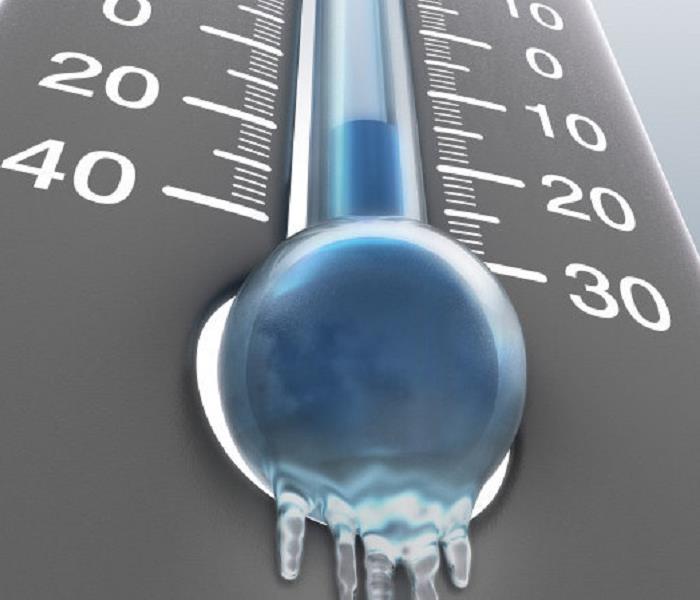
Frigid weather is blasting the Tri-State Area, which means it is dangerous outside. Residents are urged to protect themselves and help others who may be at increased risk of health problems.
Tips to stay safe
--Stay indoors as much as possible
--Report any loss of heat or hot water to property managers immediately, and call 311 or your local authorities.
--If your home lacks heat, get to a warm place tonight if you can and wear extra layers of dry, loose-fitting clothing, hats and gloves to help stay warm.
--Never use a gas stove to heat your home.
--Never use a kerosene or propane space heater, charcoal or gas grill, or generator indoors or near the home.
--If a carbon monoxide detector goes off in your home, call 911, quickly open a nearby window, and go outside for fresh air immediately.
--When outdoors, wear warm clothing and cover exposed skin. Use multiple layers to maintain warmth.
--Seniors should take extra care outdoors to avoid slips and falls from icy conditions.
--Check on neighbors, friends, relatives and clients (if you are a service provider).
--If you need a prescription filled, do so today before the arrival of the snow and dangerously cold temperatures.
Check on Neighbors, Friends, Relatives and Clients
--Home visiting and social service agencies should activate their cold emergency plans, and reach out in advance to their clients to make sure they're aware of the cold and snow.
--If you are concerned about someone on the street who may be homeless and in need of assistance, call 311 or local authorities and ask for the Mobile Outreach Response Team. The Department of Homeless Services will send an outreach team to the location to assess the individual's condition and take appropriate action.
--If your building is cold, check on your neighbors. If you know someone who is vulnerable and lacking heat, help them get to warm places and notify the building manager and/or call 311 or your local utility to get heat restored. If you see someone with signs of hypothermia such as confusion, shivering, slurred speech, drowsiness call 911 for help and help the person get warm while waiting for help.
--Landlords and building managers should check their building systems to ensure heat, and check on vulnerable people.
Health problems resulting from prolonged exposure to cold include hypothermia, frostbite and exacerbation of chronic heart and lung conditions. Here are the signs and symptoms of hypothermia and frostbite:
--Hypothermia is a life-threatening condition where the body temperature is abnormally low. Symptoms may include shivering, slurred speech, sluggishness, drowsiness, unusual behavior, confusion, dizziness, and shallow breathing. Some people, such as infants, seniors, and those with chronic diseases and substance abuse problems can get sick quicker. Check on friends, relatives, and neighbors who may need assistance to ensure they are adequately protected from the cold.
--Frostbite is a serious injury to a body part frozen from exposure to the cold. It most often affects extremities like fingers and toes or exposed areas such as ears or parts of the face. Redness and pain may be the first warning of frostbite. Other symptoms include numbness or skin that appears pale, firm, or waxy.
Provide first aid
--If you suspect a person is suffering from frostbite or hypothermia, call 911 to get medical help.
--While waiting for assistance to arrive, help the person get warm by getting them to a warm place if possible, removing any damp clothing and covering them with warm blankets.
What to Do if You Lose Heat or Hot Water at Home
Take these measures to trap existing warm air and safely stay warm until heat returns, including:
--Insulate your home as much as possible. Hang blankets over windows and doorways and stay in a well-insulated room while the heat is out.
--Dress warmly. Wear hats, scarves, gloves, and layered clothing.
--If you have a well maintained working fireplace and use it for heat and light, but be sure to keep the damper open for ventilation. Never use a fireplace without a screen.
--If the cold persists and your heat is not restored call family, neighbors, or friends to see if you can stay with them.
--Do not use your oven or fuel-burning space heaters to heat your home. These can release carbon monoxide, a deadly gas that you cannot see or smell.
--Open your faucets to a steady drip so pipes do not freeze.
Safe Home Heating Tips
Improper use of portable heating equipment can lead to fire or dangerous levels of carbon monoxide. Take precautions to ensure you are heating your home safely.
Fire safety tips:
--Make sure you have a working smoke alarm in every room. Test them at least once a month and change the batteries twice a year.
--Use only portable heating equipment that is approved for indoor use. Space heaters are temporary heating devices and should only be used for a limited time each day.
--Keep combustible materials, including furniture, drapes, and carpeting at least three feet away from the heat source. Never drape clothes over a space heater to dry them.
--Never leave children alone in the room where a space heater is running. Always keep an eye on heating equipment. Turn it off when you are unable to closely monitor it.
--Plug space heaters directly into a wall outlet. Never use an extension cord or power strip. Do not plug anything else into the same outlet when the space heater is in use. Do not use space heaters with frayed or damaged cords.
--If you are going to use an electric blanket, only use one that is less than 10 years old from the date of purchase. Also avoid tucking the electric blanket in at the sides of the bed. Only purchase blankets with an automatic safety shut-off.
Carbon monoxide safety tips:
--Carbon monoxide comes from the burning of fuel. Therefore, make sure all fuel-burning devices such as furnaces, boilers, hot water heaters, and clothes dryers are properly vented to the outdoors and operating properly. If you are not sure, contact a professional to inspect and make necessary repairs.
--Make sure you have a working carbon monoxide detector. Most homes and residential buildings in New York City are required by law to have carbon monoxide detectors installed near all sleeping areas. Owners are responsible for installing approved carbon monoxide detectors. Occupants are responsible for keeping and maintaining the carbon monoxide detectors in good repair.
--If you have a working fireplace keep chimneys clean and clear of debris.
--Never heat your home with a gas stove or oven, charcoal barbecue grill, or kerosene, propane, or oil-burning heaters.
--The symptoms of carbon monoxide poisoning are non-specific and include headache, nausea, vomiting, dizziness, sleepiness, trouble breathing, and loss of consciousness. Severe poisonings may result in permanent injury or death.
If you suspect carbon monoxide poisoning, call 911, get the victim to fresh air immediately, and open windows.
If You Need Emergency Heating Assistance
The Human Resources Administration (HRA) administers the federal Home Energy Assistance Program (HEAP), which provides low-income people with emergency heating assistance. Eligible residents will receive a payment for fuel delivery, or HRA will arrange for fuel delivery or boiler repair. Emergency assistance is given to those who qualify only once per heating season. Call 311 for more information.
Homeless Outreach
The Department of Homeless Services (DHS) continues to use its Cold Weather Emergency Procedure, called Code Blue, to protect unsheltered individuals, who are more at risk for exposure deaths during the cold winter months.
Outreach workers are on the streets 24 hours a day, seven days a week and are trained to:
--Identify and regularly monitor individuals who may be at risk during cold weather.
--Engage at-risk individuals and persuade them to voluntarily come indoors.
During a Code Blue Cold Weather Emergency, housing options for the homeless include the following:
Shelters: During a Code Blue, homeless adults can access any shelter location for single individuals. Beds are available system-wide to accommodate anyone brought in by outreach teams or walk-ins.
Drop-in centers: All drop-in centers are open 24 hours a day when Code Blue procedures are in effect, taking in as many as people as possible for the duration of inclement weather. Drop-in staff also can make arrangements for homeless individuals at other citywide facilities.
Safe havens and stabilization beds: Chronically homeless individuals may be transported to these low-threshold housing options where they may go directly from the street to a bed.
Winter Maintenance Tips
2/11/2015 (Permalink)
Winter Weather Tips
You worked hard this past holiday season; your house guests are gone, the decorations have all been packed away and you’re settling into the New Year. For those who live in an area of the country with a nice, warm climate, their Winter preparations mean putting on a sweater at night or taking that extra minute to jump into the pool! However, for those of us who live in the “hearty” Northeast where temperatures dip and snow begins to fall, there are cold weather preparations that will not only keep your home and property safe, but may also save you a few dollars.
Clean It - Start the winter with a clean furnace - a cleaner furnace can save up to 5% of fuels costs over the course of the year compared to a dirty one. And with this season’s lower than expected oil prices, filling up your tank will be more affordable.
Avoid ice damming by keeping gutters clear of leaves, sticks and other debris to ensure melting snow can drain properly. If the snow refreezes, it can lead to water damage inside your home or possibly even a roof collapse.
Seal It – Keep cold air out and warm air in this winter. Grab a tube of caulk and take a walk around your home to seal any openings around windows, doors, vents and electrical wires. Also sealing any openings will prevent mice from sneaking in to enjoy your warm winter air!
Remove hoses, turn off outside water and tighten outside faucets as pipes can burst if water in the pipe freezes. And during a deep freeze, remembering to drip your inside faucets ever so slightly will greatly eliminate the risk of inside pipes bursting.
Check It – Check smoke detectors, fire alarms, carbon monoxide detectors and flashlights to ensure they are operating properly. Have extra batteries on hand and replace if necessary.
Keep a cache of candles on hand but when in use keep the flame away from flammable items and never leave them unattended. Same goes for a portable space heater!
Store It – Having a supply of warm blankets in the linen closet, bottled water in the pantry and ice melting compound in the garage is always a good idea. And keeping a small bucket of sand and a shovel handy inside your home will be most helpful . . . especially if Old Man Winter brings a foot of snow to your door!
We Couldn't Be Prouder! Another Great Customer Testimonial - Please Read
2/5/2015 (Permalink)
Capital One Bank
170 Tulip Avenue
Floral Park NY 11001
February 4, 2015
Having been in the Property Management business for the past 15 years, I have seen my fair share of issues; from fires, to floods, to mold, etc. Each situation is unique and requires a different approach to remediation. Working for a financial institution, I can tell you that the need for a speedy resolution is as important as the need for a thorough one. After a disaster, not only do we need to re-open as quickly as possible to serve our clients, we are responsible for providing a safe, healthy environment for all associates, and that is where SERVPRO comes in.
I have had the pleasure of working with Debbie Rashti and Dan Wallace on several occasions. The first was when one of our bank branches experienced several severe leaks as the result of negligence from a neighboring business. After performing an indoor air quality test, it was determined that a highly dangerous form of mold was growing in our ceiling and inside the walls. On a Thursday morning, we reached out to SERVPRO for assistance. Within 24 hours, Debbie and Dan had a team mobilized and ready to work around the clock for the next 72 hours in order to rid our branch of this toxic substance and make it ready to safely re open to customers on a Monday morning, with a favorable air quality test. The task was performed seamlessly and with such organization, that one would never be able to tell on that Monday morning, that just a day before, the space had been filled with a massive team, opening ceilings and walls to perform such a detailed remediation.
Another instance that will forever stand out in my mind is the days that followed the devastation of Hurricane Sandy in October of 2012. Capital One had more than 10 branches that suffered significant damage as a result of the storm, making them unable to open for business. In addition to mere loss of electricity, some of our locations suffered from significant flooding and one in particular, from fuel oil contamination, when an oil tank broke apart in the basement as a result of massive flooding.
The day after the storm, Dan Wallace began touring with Capital One Property and Project Managers, myself included, in order to survey these badly damaged locations and determine what was needed to re-open. Once each survey was completed, Dan wasted no time putting a team together to begin remediation. Dan took total control of, what at first seemed like an impossible task, and set a clear, organized plan in motion. With SERVPRO’s expertise, organization and professionalism, Capital One was able to open many of its damaged sites, within days and weeks, rather than months, as was the case with many neighboring businesses.
I can’t possibly give the team at SERVPRO the proper amount of praise they deserve. They have been, and will continue to be an asset to Capital One Bank and many other organizations time and time again. SERVPRO is amazing.
Facility Manager
Jones Lang LaSalle for Capital One Bank
Homeowners Insurance Rates: How Does Your State Compare?
2/3/2015 (Permalink)
Reprinted from PropertyCasualty 360
NAIC 2012 annual homeowners insurance report shows it’s about location first.
The most important factor when buying real estate is location, and as you might expect, it’s a significant factor in establishing rates for homeowners insurance as well. What is the average premium for a house worth $300,000 in Georgia compared to one in neighboring Alabama or Florida? What’s the average nationwide?
Panelists at the Property/Casualty Insurance Joint Industry Forum 2015 on Jan. 13 acknowledged downward pressure on rates, especially for homeowners policies because they aren’t seeing much growth in new home sales. With that trend in mind, if you’re pricing policies and renewals in different locations, it’s helpful to know what the most recent data on the cost of homeowners policies shows.
The National Association of Insurance Commissioners (NAIC) released its 2012 Homeowners Insurance Report on Jan. 20, providing detailed data on market distribution and the average cost by policy form and insurance amount of homeowners insurance across the U.S. The report provides countrywide and state-specific premium and exposure information for standard noncommercial dwelling fire insurance and for homeowners insurance package policies (HO-1, HO-2, HO-3, HO-5 and HO-8), tenant policy HO-4, and condominium/cooperative unit owner’s policy HO-6.
The 2012 report, available for free download on the NAIC website, includes some interesting statistics as well as detailed charts.
In 2012, homeowners owner-occupied policy exposures accounted for 76.8% of overall exposures countrywide.Tenant and condominium policy exposures accounted for 21.3% of the total, while dwelling fire exposure made up the remaining 1.9%.Approximately 53.2% of policies sold in Washington, D.C. in 2012 were tenant or condo/co-op policies, reflecting the high level of urbanization.Here are several key factors affecting the cost of insurance that also were identified in the report.
Geographic areas. Generally, the more densely populated the location, the higher the real estate values and construction costs. You’ll also find relatively higher real estate values in vacation and retirement areas.Construction costs. The type of residence, the availability of building materials, local climate and building regulations all affect construction costs. Premiums also reflect higher expected repair costs for designs intended to reduce structural damages from earthquakes or hurricanes, for example.Degree of exposure to catastrophe. Homeowners insurance premiums also are affected by the degree of exposure to catastrophes, for example, a waterfront property exposed to hurricanes or a mountaintop property exposed to brush and forest fires. According to the Property Claims Services unit of the Insurance Services Office, an event is a catastrophe if it results in insured losses that total $25 million or more.Stricter building codes. After major catastrophes like Hurricane Katrina or Superstorm Sandy many state and local governments enact stricter building codes in an attempt to minimize damage and losses from future catastrophes.Economic factors. Such economic factors as inflation increase the amount of insurance premiums over time. Interest rates and inflation can affect not only the value of the real estate and building but also the price of the insured contents.These factors as well as others listed in the report can result in wide variations in premiums, not only by region or state, but on local levels as well. It pays to shop around, and consult your agent or broker for the best policy for your location.
Is Your Home Office Covered by Your Homeowners Insurance? Here's What You Need to Know
1/29/2015 (Permalink)
Reprinted from PropertyCasualty360
Have you become an entrepreneur over the last year, running a home-based business? Or do you sell home products like make-up or plastic storage containers for extra income? If so, are you aware that your standard homeowners insurance policy may leave you with coverage gaps?
As Diane W. Richardson, CPCU, points out in the Home-Based Business Coverage Guide ((c)2015, National Underwriter Co.), there are both property and liability business exposures that most standard policies don’t address as well as low limits on coverage.
For example, most homeowners policies limit the amount of coverage available for property on the insured premises used primarily for business purposes. According to Richardson, the unendorsed Insurance Services Office (ISO) homeowners 2011 program provides only $2,500 for business property on the premises and $500 for business property away from the residence premises. The American Association of Insurance Services (AAIS) 2008 program limits are $2,500 and $250, respectively. When you add up the cost of your computer, all-in-one printer, fax and scanner, tablet, modem and router, telephone system, desk, filing cabinet, office supplies and software, you could easily exceed $2,500. And your smartphone by itself could cost more than $500 to replace.
Other structures
If you operate your business out of your garage or barn, you’ll need coverage for “other structures.” Homeowners policies vary in what coverage they provide for such structures, depending on whether they are used for storage of business property or actively used to conduct business.
Liability exposure
The ISO homeowners form 2011 excludes any activities “engaged in for money” for which you don’t earn more than $2,000 in the 12-months preceding the policy period from the definition of “business.” This limitation puts most home-based business owners within the “trade, profession or occupation engaged in on a full, part-time or occasional category” and so without coverage, Richardson explains.
Richardson also points out that there are potential gaps in coverage, depending on the business, which may include liability from a violation of any intellectual property laws, infringement of a copyright or trademark for anything on a Web site, errors and omissions exposures, or employers liability and workers’ compensation. In some situations, you may need specialized coverage—for example, professional liability insurance for attorneys or accountants. Richardson believes that, generally, the coverages of the ISO and AAIS forms are adequate—at least as a start, before you speak with your agent or broker.
Business income
What would happen if you couldn’t work out of your home office—if it’s destroyed by fire or you have no power for several days due to an ice storm? You would have no coverage for the loss of your business income without appropriately endorsing the homeowner form. Depending on the size of your business, you may have to purchase a businessowners or commercial policy with business interruption coverage. If your business takes over your home to the point at which you’ve converted all the rooms to offices and moved to another residence, then you’ll definitely need commercial coverage.
Exclusions from property coverage
Remember that your home-based business is attached to your homeowners coverage and is subject to the same exclusions. If your home isn’t covered by flood insurance, for example, neither is your business, Richardson explains. It’s also important to understand that the ISO and AAIS forms list different named perils, open perils, and exclusions. Richardson cites the example of sinkhole collapse as a named peril in the AAIS form but not in the ISO form. Both forms exclude coverage for any loss resulting from criminal or fraudulent acts.
The policies also include exclusions from liability coverage, for instance, an employer’s liability for injury to employees or bodily injury or property damage from pollution caused or created by the business. The AAIS form specifically excludes coverage of injury or damage of electronic data and computer failure.
Terms and conditions
The ISO and AAIS forms also include conditions on your homeowners declaration that apply to property losses under your home-based business insurance coverage, whether the property belongs to your business or to someone else. For example, if you repair computers or furniture for customers at your home, ask your broker whether damage to the customer’s property is covered. If so, you also should ask how the value of the property is calculated and how any potential loss will be settled.
Telecommuters
If you telecommute or work remotely for an employer, the insurance issues for a home office are even more complicated. For example, you may be covered under your homeowners policy for property you own, such as your desk and filing cabinets, but your employer may be covered for loss to company-owned property such as your computer or smartphone. If a delivery person slips on icy steps at your home while making a business-related delivery in this situation, your employer’s policy might cover, your homeowners policy might cover, or you could find yourself in the middle between the two carriers, both of which may initially deny the claim. If you serve a customer coffee in your kitchen—not your office—after a business meeting, and the customer is burned by hot coffee, there may be a question of shared liability because the kitchen isn’t officially business space.
If you do work remotely, be sure to check your homeowners policy and ask your employer to confirm what the terms and conditions of its policies are, or you may find that neither policy covers a loss.
Homeowner Insurance Rates: How Does Your State Compare?
1/22/2015 (Permalink)
Reprinted from PropertyCasualty360
NAIC 2012 annual homeowner insurance report shows it’s about location first.
The most important factor when buying real estate is location, and as you might expect, it’s a significant factor in establishing rates for homeowners insurance as well. What is the average premium for a house worth $300,000 in Georgia compared to one in neighboring Alabama or Florida? What’s the average nationwide?
Panelists at the Property/Casualty Insurance Joint Industry Forum 2015 on Jan. 13 acknowledged downward pressure on rates, especially for homeowner policies because they aren’t seeing much growth in new home sales. With that trend in mind, if you’re pricing policies and renewals in different locations, it’s helpful to know what the most recent data on the cost of homeowner policies shows.
The National Association of Insurance Commissioners (NAIC) released its 2012 Homeowners Insurance Report on Jan. 20, providing detailed data on market distribution and the average cost by policy form and insurance amount of homeowners insurance across the U.S. The report provides countrywide and state-specific premium and exposure information for standard noncommercial dwelling fire insurance and for homeowner insurance package policies (HO-1, HO-2, HO-3, HO-5 and HO-8), tenant policy HO-4, and condominium/cooperative unit owner’s policy HO-6.
The 2012 report includes some interesting statistics:
In 2012, homeowner owner-occupied policy exposures accounted for 76.8% of overall exposures countrywide.Tenant and condominium policy exposures accounted for 21.3% of the total, while dwelling fire exposure made up the remaining 1.9%.Approximately 53.2% of policies sold in Washington, D.C. in 2012 were tenant or condo/co-op policies, reflecting the high level of urbanization.Here are several key factors affecting the cost of insurance that also were identified in the report.
Geographic areas. Generally, the more densely populated the location, the higher the real estate values and construction costs. You’ll also find relatively higher real estate values in vacation and retirement areas.Construction costs. The type of residence, the availability of building materials, local climate and building regulations all affect construction costs. Premiums also reflect higher expected repair costs for designs intended to reduce structural damages from earthquakes or hurricanes, for example.Degree of exposure to catastrophe. Homeowners insurance premiums also are affected by the degree of exposure to catastrophes, for example, a waterfront property exposed to hurricanes or a mountaintop property exposed to brush and forest fires. According to the Property Claims Services unit of the Insurance Services Office, an event is a catastrophe if it results in insured losses that total $25 million or more.Stricter building codes. After major catastrophes like Hurricane Katrina or Superstorm Sandy many state and local governments enact stricter building codes in an attempt to minimize damage and losses from future catastrophes.Economic factors. Such economic factors as inflation increase the amount of insurance premiums over time. Interest rates and inflation can affect not only the value of the real estate and building but also the price of the insured contents.These factors as well as others listed in the report can result in wide variations in premiums, not only by region or state, but on local levels as well. It pays to shop around, and consult your agent or broker for the best policy for your location.
Insurance via Internet Is Squeezing Agents
1/19/2015 (Permalink)
Reprinted from The New York Times
To the list of jobs threatened by the Internet, add one more: insurance agent.
Technology start-ups, and companies from the insurance industry, are introducing websites that sell or promote a range of insurance including auto, homeowners and small commercial policies. These portals, which promise savings by showing consumers many price quotes so they do not have to shop site by site, are putting pressure on insurance agents, who collect 10 percent or more of their policyholders’ payments.
Online insurance comparison is still a nascent business, and it has yet to make a dent in the armies of intermediaries that are the backbone of the trade. But people in the industry and Silicon Valley say it is only a matter of time. Even Google is getting involved.
“There are 40,000 agencies in the U.S., and you could absolutely imagine them shrinking by a quarter, and the ones that are left will deal with more complicated needs and more affluent customers,” said Ellen Carney, an analyst who covers insurance for Forrester Research.
The idea of selling insurance online is not new. Lately, though, the boring but lucrative trade has been attracting big names. The most recent is Google.
Its Google Compare auto insurance site (basically a search engine for auto insurance prices) has been operating in Britain for two years, and Google is working on something similar for the United States. Google is licensed to sell insurance in about half of the states, according to research by Ms. Carney.
Google has formed a partnership with Comparenow, an American auto insurance comparison site owned by Admiral Group, a British car insurance company that has operated a European price-comparison site for more than a decade. The venture will give Google access to insurers in Comparenow’s network.
Admiral Group introduced Comparenow about a year ago. Not long after, Overstock.com, a retailer, started selling auto and other forms of insurance.
Then there is Walmart, which does not sell insurance but recently formed a partnership with AutoInsurance.com. The insurer leases space in Walmarts, giving it access to the 140 million people who shop there each week.
These companies are joining start-ups like CoverHound, a San Francisco company that allows consumers to compare and buy auto insurance online, and PolicyGenius, a Brooklyn company that sells products including life, renters and pet insurance.
Some companies, like CoverHound and PolicyGenius, are online insurance agencies. Others, like Comparenow, send traffic to insurers and get a finder’s fee whenever someone buys a policy. But in all cases, they are pressing Main Street agents by automating the process and showing insurers’ prices side by side.
“A lot of people are waking up to the fact that it’s a massive industry, it’s old-fashioned, they still use human agents and the commissions are pretty big,” said Jennifer Fitzgerald, the founder and chief executive of PolicyGenius. “It’s ripe for — I hate to use the word — disruption.”
Insurance is a fat target. In 2013, insurers wrote $481 billion in premiums for property and casualty insurance, which consists of mostly auto, home and commercial insurance, according to the Insurance Information Institute, an industry group. That would place a rough estimate of agents’ commissions — including commissions to small-time agents as well as to brokers who sell large commercial policies — at $50 billion.
And while it might seem like an odd match for Google, whose projects include driverless cars, delivery drones and a pill to detect cancer, the key to insurance is having lots of data about people’s backgrounds and habits, which is perhaps the company’s greatest strength.
“They have a ton of data on where people drive, how people drive,” said Jon McNeill, chief executive of Enservio, a Needham, Mass., company that makes claims-processing software. “It’s the holy grail of being able to price auto insurance correctly.”
In the decades before the search engine, insurance companies used on-the-ground agents to extend their reach from financial centers to towns and neighborhoods across America. Now that power has shifted to the Internet. People have become conditioned to entering reams of personal data into a computer, and companies are better at processing it.
Robert P. Hartwig, president of the Insurance Information Institute, says rumors of the insurance agent’s death have been greatly exaggerated. Online insurance shopping is already a crowded space, which in addition to comparison portals includes the powerful marketing arms of companies like Geico and Progressive. These businesses do not just advertise insurance, but provide it too.
“Even if they go through Google or another portal, they still end up at an insurance agency or company at some point,” Mr. Hartwig said. “I think the agency model has a lot more consistency than many people give it credit for.”
D. J. Rodrian, a second-generation owner of Rodrian Insurance in Brookfield, Wis., is at least paying attention. “It should worry any agent when a megacompany like Google, with all the personal information that they have about people, is getting into your industry,” he said.
While Mr. Rodrian said he was not worried about going out of business, he said his most vulnerable customers were the quarter or so of policyholders who carry only auto insurance. Many of his other clients have comprehensive policies that are woven into everything they own, which makes them far less likely to leave.
“Consumers don’t have a great understanding of insurance,” Mr. Rodrian said. “They don’t find it an interesting thing to educate themselves about. They do get comfort in the advice of a professional.”
And, of course, just because something is possible does not mean consumers will embrace it.
Overstock offers auto and homeowners insurance, as well as commercial policies for small businesses, such as a liability policy for a ballet studio. Patrick Byrne, the company’s chief executive, says it has not done very well: While customers who go all the way through the process are very likely to buy a policy, many are unwilling to even begin the application.
Mr. Byrne said his company has sold only a few thousand policies since introducing its insurance business nine months ago, or “the equivalent of a small-town brokerage.” “It hasn’t done a whole lot of business,” he said. “But if the whole industry moves this way, it could.”
Technology companies are not the first to try to cut intermediaries out of insurance sales. That distinction belongs to the insurance trade itself, which spends billions of dollars a year on direct advertising to consumers. Behind those clever Geico television commercials involving geckos and cave men is a pitch that goes: If you buy from us instead of an agent, we will give you a discount.
That offer has worked. The direct sales channel accounted for 28 percent of United States auto insurance sales in 2012, roughly double the level in 1995, according to A. M. Best, an Oldwick, N.J., credit rating agency focused on the insurance industry.
Big insurers, having spent billions in advertising dollars to convince consumers that their insurance is cheaper than the other companies, may not embrace the comparison model. But insurance industry specialists suspect that, over time, they may have little choice.
They contend that the vast reach of search engines, combined with cheap processing power that lets even tiny companies run extensive background checks, will erode the advantage of large-scale advertising.
“As comparison begins to take off, the little guys will get exposure to consumers that they could never get on their own,” said Andrew Rose, chief executive of Comparenow.
It's Official: Earth has Warmest Year on Record in 2014
1/19/2015 (Permalink)
Reprinted from Newsday
Long Islanders who lived through last winter's recurring deep-dive Arctic dips may find it hard to believe that, globally, 2014 was the warmest year since records started being kept, back in 1880. Both NASA and the National Oceanic and Atmospheric Administration according to analyses report that Friday.
Globally, the average combined land and sea surface temperature of 58.24 was 1.24 degrees above the 20th century average and was the highest on record, NOAA said.
"This is the latest in a series of warm years, in a series of warm decades," said Gavin Schmidt, director of NASA's Goddard Institute of Space Studies.
"While the ranking of individual years can be affected by chaotic weather patterns," he said, "the long-term trends are attributable to drivers of climate change that right now are dominated by human emissions of greenhouse gases."
In 2014, Long Island was "a little on the warm side" and certainly not "record-breaking," said Jessica Spaccio, a climatologist with the Northeast Regional Climate Center based at Cornell University.
Last year's average temperature for the Island, which makes up the bulk of NOAA's New York Coastal Climate Division 4, was 52 degrees, making it the 33rd-warmest year since 1895, when records started being kept. The average yearly temperature, based on data since 1895, is 51.2, she said.
Long Island MacArthur Airport saw a 2014 average temperature of 52.5, making it the 14th-warmest year since 1984, when data started being kept, she said. The airport's December temperature, 39.6, ranks at ninth warmest for the month.
Of course, this is one small region of a planet, she said, that has been seeing an ongoing trend of being warmer than average.
Last year's heat was driven by record warmth in the world's oceans that didn't just break old marks: It shattered them. Record warmth spread across far eastern Russia, the western part of the United States, interior South America, much of Europe, northern Africa and parts of Australia.
"Every continent had some aspect of record high temperatures" in 2014, said Tom Karl, director of NOAA's National Climatic Data Center.
Nine of the 10 hottest years in NOAA global records have occurred since 2000. The odds of this happening at random are about 650 million to 1, according to University of South Carolina statistician John Grego. Two other statisticians confirmed his calculations.
Warmup Awaits Midwest, East During Mid-January
1/14/2015 (Permalink)
By Alex Sosnowski, Expert Senior Meteorologist, AccuWeather.com
Despite some pockets of cold air in the Midwest and East into the middle of this week, the wheels of change are in the works for a mild weather pattern for the middle of January.
A storm brought a reinforcing shot of cold air during the early part of the week for the Central and Eastern states. However, the jet stream is about to lock out arctic cold for the third week of the month in all but the upper Great Lakes to northern New England.
The jet stream is a high-speed river of air high above the ground that guides storms and air masses along across the globe.
According to Paul Pastelok, AccuWeather.com chief long-range meteorologist, "During the next week or so, the jet stream will set up in such a way as to keep arctic air bottled up across central and northern Canada and will allow mild Pacific air to flow from west to east across much of the United States."
Pastelok stated that there will still be some sneaky cold that skirts the northeastern states at times and that people in this area should not expect temperatures to be warm for the entire middle part of the month.
High temperatures may average 5 to 10 degrees Fahrenheit above normal in the northern tier states for a few days into next week, compared to the consistent 10 to 20 degree below normal temperatures during the first full week of January.
In areas from Chicago to Boston and New York City, this will translate to multiple days with highs in the upper 30s F to 40s F. In areas from Dallas to Atlanta, the upcoming pattern will bring highs in the 50s and 60s on at least several days. From Minneapolis to Buffalo, New York, highs will reach or exceed the freezing mark for a couple of days or more.
The last area to warm up, or the area that shows the most resistance to the warmup will be northern Michigan, upstate New York and northern New England.
Temperatures to Moderate This Week
A frigid pattern brought a shivering end to last week but the weather pattern is now in transition this week.
The cold air that poured into the East will continue to depart through the remainder of the week. Pockets of cold air will be more stubborn to leave where there is a large snowpack on the ground. During the second half of the week, the pattern will feature near-normal temperatures most days in most locations from the Midwest to the East and South.
When Will Arctic Air Return?
The expanding warmup forecast does not mean that winter is over.
"We expect much colder air to expand southward and then eastward during the fourth week in the month," Pastelok said.
Snow Versus Ice, Rain Just a Matter of Timing
Thus far this winter, cold air and storms have remained out of sync to get a major snowfall in the Interstate-95 corridor of the Northeast.
"Storm systems pushing into the Southwestern states have caused an area of high pressure to bulge northward in the Caribbean and southwest Atlantic," Pastelok said.
This has forced stronger storms to track toward the Great Lakes and weaker storms to limp off the southern Atlantic coast.
"In order for there to be be more substantial snow and ice in the coastal mid-Atlantic and southern New England, we would need cold air to come in and hold its ground as a storm is approaching, rather than give up like we have been seeing," Pastelok added.
All it would take is one or two storms to come along with just the right amount of cold air in place for locations in the mid-Atlantic and southeastern New England to receive near-average snowfall for the season.
The development of a storm along the Atlantic coast on Sunday will have to be watched for the possibility of rain and snow. Another system could bring snow to part of the Midwest and Northeast around the middle of next week as cold air begins to settle southward again.
Snowfall thus far from Washington, D.C., to New York City and Boston has averaged 25 to 50 percent of normal this winter.
10 Risk Factors for Homeowners Insurance Policies
1/9/2015 (Permalink)
Reprinted from PropertyCasualty 360
Customers buy insurance to minimize their risk and make them whole should a covered loss occur. What many may not understand is that a number of factors can cause their premiums to skyrocket before a covered peril even occurs. Adjusters and claims managers handling the ensuing claims also need to be aware of these possible red flags and their impact on any settlements.
An up-to-date home inventory complete with photos can be a major asset to any claim. Encourage owners to take a digital tour of every room to record furniture, electronics, antiques, works of art, family heirlooms and other irreplaceable items in the home. After a fire or major flood, it can be difficult to identify valuable items from their pre-loss condition.
The photos and a detailed inventory should be stored off-site in a safe deposit box or other secure location and copies provided to the insurance agent to ensure they are added to the appropriate policy. Keeping them on the computer at home won’t help if the computer is destroyed in a fire or stolen in a robbery.
A similar tour of the outside of the home can capture possible risks like trees near the house, foundation issues or possible roofing problems, as well as assets like copper gutters and other aftermarket finishes that add value to the home.
According to the Insurance Information Institute (I.I.I.), in 2012, 97.6% of the claims filed involved property damage, including theft, and jewelry was the top claims category under homeowners policies in 2011. From 2008-2012, I.I.I. says 7.3% of insured homes had a claim and the average loss was $8,255.
Here are 10 factors (not in any particular order) that can make a homeowner’s property a greater risk to insure:
Pets - Not every dog is man’s best friend and some insurers don’t take kindly to all breeds. Owning a German shepherd, Great Dane, Siberian Husky, Doberman, Rottweiler, Pit Bull, Akita or any other dog that could be considered aggressive could raise insurance rates. “This isn’t only limited to dogs, as exotic animals such as tigers, monkeys and others may cause rates to be high, if you can even get insurance,” says insurance expert Chris Tidball.
Bad credit score - Insurers will look to see if a homeowner has paid her bills on time and check credit scores. A lower number could result in higher premiums.
Location, location, location - Just like in real estate, the location of the home really does matter. Owners of homes located in Tornado Alley, along coastal Florida (or any coast for that matter), in a hurricane-prone state or in an area known for sinkholes can expect to pay more for homeowners' coverage.
Trampolines - Although exercise is important, some exercise equipment can impact insurance rates. Trampolines result in approximately 92,000 hospital visits each year. Parents frequently are unaware that they cause spinal injuries, fractures and head injuries. Most injuries are not caused by children flying off the trampoline, but because one child lands on another when they are jumping or they try something silly like riding a bike and jumping. Doctors recommend that only one child at a time be on a trampoline with adequate supervision
Swimming pools - Another source of higher homeowner insurance rates involves swimming pools. According to Parents magazine, drowning takes more than 1,000 lives a year and more than half of these events take place in the children’s own home and one-third take place in the homes of friends and relatives.
Fire concerns - Location also matters when it comes to fire stations. Living too far away from the local fire hall or a fire hydrant could raise insurance rates. Of course, a neighbor’s pool could be a source of water in an emergency, as well as a nearby pond.
Poor maintenance - Owners who don’t keep up with their home maintenance may see their rates raised or their homeowners insurance cancelled altogether. Leaky roofs, old hot water heaters, dripping pipes and poor water seals are just some of the items to watch out for. In 2012, 17.5% of the losses claimed were related to water damage and freezing pipes.
Weather preparations - Being ill-prepared for bad weather can also impact homeowners insurance rates. “In some states such as Florida, a homeowner can have a qualified wind inspection that demonstrates the ability of the insured structure to withstand certain force winds, which can result in a discount,” explains Tidball.
Claim frequency - Insureds who make multiple claims may be viewed as a higher risk and charged accordingly. Damage from a burst pipe, a tree that lands on the roof, or a kitchen fire on the same property will raise a red flag and cause insurers to take a closer look.
Neighborhood crime - “Living in a high crime area has been tied to an increase in certain types of claims, such as robbery,” says Tidball. “Rates will be assessed accordingly.” Approximately one in 190 insured homes have a property damage claim related to theft each year according to the I.I.I. And, based on I.I.I. figures from 2011, rates for homeowners insurance are highest in Florida, Texas, Louisiana, Mississippi, and Oklahoma. Idaho, Oregon, Utah, Wisconsin and Washington have the lowest rates.
They tried what? You'll never believe these 5 nutty claims stories
1/7/2015 (Permalink)
Reprinted from Property Casualty 360
Like emergency room doctors, cops and priests in the confessional booth, insurance people are being asked to clean up the messes that people make--and worse, they’re expected to pay for them.
It’s little wonder that veteran insurance people can get a bit jaded. When it comes to claims--and human nature--they have seen everything.
We spoke with several long-time insurance professionals about the weirdest claims they’ve come across in their careers. Here are some of the strangest.
1. The case of the vanishing gold bars
Claims consultant Chris Tidball has worked for P&C carriers for more than 20 years, in roles ranging from claims adjusting to management. The client whom he recalls as the “biggest nut” was Walter A., who presented a claim for a stolen van that was carrying $500,000 in gold bars, which, of course, he wanted covered as well. “Imagine our shock when the van turned up burned to a crisp and all the gold was missing.” Walter would personally come to the office every morning at 8 a.m. to demand his check—a ritual that continued for around 90 days. “He would come in and get belligerent, then would feign having a heart attack, asking us to help him find his nitro pills. He was truly certifiable.”
2. The case of the gypsy curse
Another Tidball tale involves a gypsy who roamed around Southern California. This gypsy had a van that he reported stolen that, like Walter’s, contained lots of valuable “stuff,” which the gypsy could somehow never describe beyond saying it was important. When Tidball told him he had to deny the claim (which was “complete and utter B.S.”) the case went to trial. During an examination under oath, the gypsy pointed a magician’s wand at Tidball and started speaking a strange language in an attempt to cast a curse on the insurance man.
3. The case of the cruising cat ladies
Steve Schroeder, vice president of NFP, has been in the property-casualty business for almost 25 years, on both the broker and carrier side. One of his most memorable claims cases involved a trucking-company client that had a claim filed against a driver. The claimant alleged the truck hit a station wagon and injured the driver and her passenger. The truck driver insisted that it wasn’t his fault; the vehicle had appeared out of nowhere. Investigating state police and SIU personnel found no truck skid marks, but several dead cats on the highway at the accident site. It turned out the women, whose station wagon had been loaded with cats, had been literally driving in circles in the rural area – first in the southbound lane, then crossing the embankment and heading north. When the truck driver T-boned the station wagon, several cats flew out the vehicle’s windows and were killed. The claim was pulled.
4. The case of the soaked survivalists
Schroeder recalls another case where the elderly owners of an older but newly renovated home made a $350,000 water-damage claim after heavy rains and an inadequate sump pump ruined what they described as thousands of “valuable items” in their storage area. After a closer investigation by the claims adjuster, it turned out the storage area was actually a bomb shelter dating back to the Cold War era that the couple kept secret from family and friends. Stuffed in this shelter were thousands of meticulously arranged items set aside for an apocalypse—soap, toothpaste, canned goods and more. The owners claimed these items were worth hundreds of thousands of dollars, even though most of the items were useless. The ins
5. The case of the conniving construction workers
Schroeder recalls a contractor client that filed a claim involving the death of a foreman on the building site of an eight-story apartment complex. A team of four had been loading a huge pipe onto the top floor of the structure when the foreman fell and was killed. His three coworkers all insisted that the crane operator was at fault, although the operator denied this. The claim went to mediation and was set to settle for $3.2 million. All parties were at the meeting and ready to sign the paperwork when the foreman’s widow whispered to Schroeder that she had to speak with him immediately. After going to a private room, she told Schroeder that she wanted all of the settlement money to be placed into a structured settlement for her two children, ages 2 and 4. It turned out that her deceased husband was not well liked by the crew, two of which had proposed marriage to the widow, knowing the death settlement would make her a millionaire. However, the police could not prove foul play so the case had to settle.urer ended up paying around $200,000 to settle the claim.
Trash Can Still Be Treasure When Properly Restored
1/5/2015 (Permalink)
Adjusters didn’t always think about how many items could be easily restored for a reasonable cost. With their eyes opened to the ease and benefits of restoration, they would be amazed at how frequently salvageable items are tossed away as trash. When items like furniture, cabinets, millwork, fireplace mantles, and hardwood floors can be repaired and restored, insurers can save money over complete replacement and owners are usually thrilled that their treasure has been restored.
Adjusters who know about the expertise available and benefits of repair and restoration over replacement can effectively boost their bottom line and have more satisfied clients. The education process includes learning the options… it’s not just furniture that can be restored, but dinged walls from moving, spills, puppy chews, scratched leather, chair caning, cabinets and more. If ever in doubt about whether it can be fixed, simply ask.
Customers are typically overjoyed when we can restore a family heirloom because we all know you just can’t put a price on sentimental, one-of-a-kind items. When adjusters call to see if there’s anything we can do to save a treasure from the trash, usually the answer is “yes.”
A Recap of Long Island's Year in Weather
12/31/2014 (Permalink)
Reprinted from Newsday
Record rainfall on one August day this year may not have had an Islandwide impact, but it stands out to meteorologists as one for the textbooks, as well as the top of Long Island's 2014 weather highlights list.
"Meteorologically, it was almost unbelievable . . . I'm still amazed," Jeffrey Tongue, National Weather Service meteorologist, said of the 13.57 inches of rain that fell at Long Island MacArthur Airport Aug. 12-13. The deluge broke the state's previous 24-hour record of 11.6 inches falling in Tannersville when Tropical Storm Irene swept through in 2011.
That torrent headlined a 2014 that also included the dramatic temperature swings of January and February and a stretch of snowstorms that seemingly would not end, along with a mild summer that did not see any 90-degree days.
As for that 24-hour August rainfall -- deemed a 200-year storm event by the Northeast Regional Climate Center -- 5.34 inches alone fell from 5 to 6 a.m. on Aug. 13 at the airport, followed by another 4.37 inches the following hour, according to the climate center. They may have come back to back, but each is considered a 500-year event, said Jessica Spaccio, a climatologist with the center, based at Cornell University. That means that hourly rainfall of such magnitude would be expected just once in a 500-year period.
Working the morning shift that day was David Stark, a weather service meteorologist based in Upton, who knew significant rain was coming as the weather service had been issuing flash flood watches and warnings. But when he saw the magnitude, he thought, "Whoa. Is this really happening?"
At play, Stark said, was the convergence of several factors -- an atmosphere "loaded with moisture," along with mechanisms, including a micro-scale low pressure area,that lifted up the warm, moist air, which was then wrung out over central Long Island, where the whole system had stalled.
The result was "a traffic nightmare," he said -- flooded streets, stranded motorists, full-to-partial closures of major roadways, as well as flooded yards and basements and the opening up of various sinkholes. Impacted primarily was a diagonal strip from the southwestern tip of Suffolk up to around the Coram area, he said.
Affecting the entire Island and over a much longer time frame was a pattern early in the year of frigid days, some wide temperature swings and, at one point, snowstorms coming through like clockwork every few days.
January's snowfall at the airport amounted to 25.2 inches, a far cry from the norm of 6.7 inches, according to weather service data, with February seeing 24.5 inches compared with the 7.1 inch norm.
Since 1984, Long Island's weather records for the airport in Ronkonkoma have been kept by the weather service. From 1949 to 1983, the records were maintained by the Brookhaven National Laboratory in Upton.
January alone saw 16 new daily records -- mostly for snowfall, low temperatures and lowest maximum temperatures, as well as one for a daily high. The airport saw a temperature plunge from 55 degrees on the morning of Jan. 6 to just 7 degrees some 24 hours later, the weather service said. Then in February, there were six snowfalls between the 3rd and the 18th alone. It was "a very active wintry pattern," Stark said.
It was also the year that news outlets discovered -- and in some cases hyped -- the term "polar vortex," which is a staple of meteorologists' vocabulary, referring to the orientation of the jet stream. When the jet stream dips south, polar air comes along with it, he said. "It took us a little by surprise" that the term "became such a thing," Stark said.
During the summer, hot weather lovers had a little disappointment when the airport did not record one day that hit 90 or above. The last time that the mercury crossed that threshold was July 20, 2013, making this stretch the second longest run of no-90-degree days in the past 30 years.
The record 90s-free period lasted nearly two years, from July 6, 2003, to June 13, 2005, the regional climate center said.
To beat that record, the temperature would need to stay below 90 through June 30, 2015.
6 Reasons Why Catastrophe Plans Fail
12/29/2014 (Permalink)
By Gregg T. Golson
Catastrophe (CAT) plans, like strategic plans, tend to be crafted in offices far away from the adjusters who will implement them. These voluminous, dust-covered binders sit comatose, only to be revived when an actual catastrophe looms.
Failed CAT plans have costly and long-term consequences including interest on late claims payments, unnecessary claims cleanup teams, loss of goodwill, lack of retention of insureds, litigation costs, unfavorable court decisions, and potential bad-faith or punitive damages.
Let's review the problems and potential risks of all these concerns.
CAT plans that aren't scalable fail.
Long gone are CAT plans that can rely on 2,500 staff waiting idly for the next event. Failed CAT plans can force highly-skilled adjusters into set-for-failure management positions that they’re generally untrained for and loathe.
Smart companies plan for scalability depending on CAT size and type, including recent storms and general storm severity. They use geographic information systems to predict claim volume and severity.
In this age of smartphones, phablets, tablets and social media, insurers still rely on traditional communication methods. Smart companies enlist tools to seek out data from social media sites for claims reporting and ongoing claims communication.
CAT plans that don't prepare adjusters for a storm fail.
Failed CAT plans rely on TPAs or independent adjuster partners to “go handle the storm” with little direction and/or control over quality or expense.
Smart companies train year-round for storms and build pre-event relationships with vendors such as engineering firms, tree-cutters and hotels.
William C. Bracken, PE, president of Bracken Engineering, says his most popular training topic for insurers involves state building codes. “Trained adjusters who understand building code basics are better prepared to identify and properly deal with legitimate code upgrades.”
CAT plans that aren't adaptable fail.
Failed CAT plans don't consider contingencies like the second storm of the season or lack of infrastructure for connectivity to Internet-based claims systems. Failed plans don't address state-level statutes for timely contact/follow-up or claims payments within certain time limits.
Smart companies remain adaptable after a storm has made landfall.
Paul Neilson, vice president of claims at Heritage Property and Casualty Insurance, says no CAT response is ever the same. “We have to be cognizant of bottlenecks that can develop while handling high volumes of claims and be flexible enough to promptly respond with the proper resources.”
CAT plans that aren't coordinated fail.
Failed CAT plans lack coordination between insurers and their TPAs or IA firm partners, leading to duplication of efforts, bottlenecks and adjuster burnout.
The CEO of Crawford's U.S. Property & Casualty business, David Repinski, states that without clear alignment there is a lack of clarity about the role they will play. “Will we be the first wave or secondary to their adjusters? Will we be one of many providers? When insurers communicate to us our role pre-event, we have a successful partnership.”
Smart companies begin coordination months before storm season, have post-event debriefs to memorialize what worked, what didn't and then implement improvements.
CAT plans that don't empower adjusters fail.
Failed CAT plans take weeks for adjusters to “earn” adequate authority to pay claims. If an adjuster isn't empowered to make decisions, then the insureds get frustrated and claims remain open.
Smart companies understand they get more from the behavior they reward. When they reward only cycle time they may get shorter cycle times, but more reopened claims.
CAT plans that aren't sustainable fail.
Failed CAT plans are sustainable only for the CAT of the season, but not for subsequent storms since the needed adjusters are working the prior storm. Failed CAT plans depend on constant sources of power, connectivity and close-to-storm housing.
Smart companies test systems and call-centers to pre-determine maximum claims levels for all CAT-related departments to reaffirm CAT readiness. Smart companies have fallback plans ready when plan “A” doesn't work.
The best CAT plans are always flexible, prepare the staff, are coordinated efforts, empower adjusters to make decisions and are sustainable.
Tips to Protect Your Home From Rodents and the Winter Season
12/8/2014 (Permalink)
According to USA TODAY, the repeat of last years’ extremely cold and snowy weather east of the Rockies is probably not going to happen but the typical colder winter air and precipitation is still expected. The time has come to protect your home from damage and insurance claims. Here are some tips to begin the process.
According to a recent press release, Chicago holds the top stop for more rats than any other city and fall is the prime time for rodents to seek shelter before the winter arrives. It only takes a hole the size of a quarter for a rat to squeeze inside and a hole the size of a dime for mice.
Orkin recommends the following tips to help prevent rodents around the home:
· Regularly inspect the home – inside and outside – for rodent droppings, rub marks or burrows.
· Seal all cracks and gaps around utility penetrations larger than 1/4 of an inch, as well as install weather stripping at the bottom of exterior doors.
· Trim overgrown branches, plants and bushes near the home, and consider keeping a 2-foot barrier between any landscaping and the home.
· Store all food (including pet food) and garbage properly in sealed containers both indoors and outdoors.
· Remove all pet bowls after animals are finished eating, and remove pet waste from the lawn promptly.
· Contact a pest professional for assistance managing rodents, as these pests can be dangerous and difficult to control.
So once your home is protected from rodents, then it’s time to make sure you tune up your heating system. This will include a cleaning and inspection of carbon monoxide leakage. Carbon monoxide detectors should also be checked and replaced if necessary.
Clean out gutters as the leaves clog and check that they are in decent shape. Otherwise clogged gutters create ice dams on your roof. While the ladder is up, scan your roof for any broken shingles. If you belong to a home association, find out what is their responsibility to winterize your home.
Check to make sure your wood burning fireplace and chimney flue is clear of debris. According to the National Fire Protection Association, this is the second leading cause of house fires.
Caulk cracks around windows and doors to eliminate drafts. Water resistant caulk works well outside of buildings. Add weather stripping to doors and windows.
Install storm windows, if you have them or plastic wrap on the inside of the windows. Fitting the plastic wrap correctly with tape and shrink drying with a hair dryer really does make a difference in drafts and heating bills.
Make sure driveways are fixed if potholes and cracks have caused damage.
Wrap exposed pipes with foam insulation or pipe wrap.
Always have an emergency kit well-stocked.
Most homeowner policies will not pay for damage due to poor maintenance. If the collapse of a roof, for example, is caused by the weight of ice and snow, damage to buildings is typically covered, subject to your policy limits for this type of damage. Structures that are not buildings, such as fences, swimming pools or septic tanks, aren’t covered if winter weather causes them to collapse.
Damage from a leaking roof is usually covered, subject to the limits of your policy. If a storm has damaged the roof, the related roof repair is also typically covered. However, if the leak results from worn or poorly installed roofing or flashing, only the resulting interior damage is covered
SERVPRO of Great Neck Port Washington: Another Great Customer Testimonial!
12/2/2014 (Permalink)
Another Great Customer Testimonial!
Climatologist: 30-Year Cold Spell Strikes Earth
11/21/2014 (Permalink)
By Clayton B. Reid
With nasty cold fronts thrusting an icy and early winter across the continental U.S. — along with last winter described by USA Today as "one of the snowiest, coldest, most miserable on record" — climatologist John L. Casey thinks the weather pattern is here to stay for decades to come.
In fact, Casey, a former space shuttle engineer and NASA consultant, is out with the provocative book "Dark Winter: How the Sun Is Causing a 30-Year Cold Spell," which warns that a radical shift in global climate is underway, and that Al Gore and other environmentalists have it completely wrong.
The earth, he says, is cooling, and cooling fast. And unless the scientific community and political leaders act soon, cold, dark days are ahead.
Casey says the evidence is clear that the earth is rapidly growing colder because of diminished solar activity. He says trends indicate we could be headed for colder temperatures similar to those seen in the late 1700s and early 1800s when the sun went into a "solar minimum" — a phenomenon with significantly reduced solar activity, including solar flares and sunspots. If he's right, that would be very bad news.
"Dark Winter" posits that a 30-year period of cold has already begun. Frigid temperatures and the food shortages that inevitably result could lead to riots and chaos.
Casey tells Newsmax, "All you have to do is trust natural cycles and follow the facts, and that leads you to the inevitable conclusion that the sun controls the climate, and that a new cold era has begun."
Casey is president of the Space and Science Research Corp., an Orlando, Fla., climate research firm.
His new book debunks global warming orthodoxy. For more than a decade, he reports, the planet's oceans have been cooling. And since 2007, the atmospheric temperature has been cooling as well.
"The data is pretty solid," Casey says. "If you look at the 100-year global temperature chart, you look at the steep drop-off we've had since 2007. It's the steepest drop in global temperatures in the last hundred years."
So how can the media and scientific elites make a case for global warming when it's actually cooling?
Casey suggests climate-change theorists have simply wedded themselves to the wrong theory — namely, that global temperatures respond to the level of greenhouse gases in the atmosphere.
Any scientist suggesting otherwise is castigated as a heretic, though there are other prominent scientists who support Casey.
Noted Russian astrophysicist Habibullo I. Abdussamatov has argued that a new mini-ice age has begun, though Casey doesn't go that far.
He does agree with Abdussamatov that the real driver of global climate is solar activity, namely sunspots. These correspond to shifts in global temperature with a greater than 90 percent accuracy, he says.
The environmental left focuses instead on ever-rising greenhouse emissions, suggesting nature is just taking a bit of a breather before the upward march in temperatures ineluctably resumes.
"There are two fundamental flaws with that," Casey says. "No. 1, the greenhouse-gas theory, and the global climate models that they produced, never permitted a pause. As long as CO2 levels were going up, the only thing that could happen was global temperatures could go up. That has not happened. "No. 2, there could absolutely be no cooling, much less a pause. And yet we've been cooling for 11 years now."
The recent polar vortex that sent temperatures across the Midwest plunging to sub-zero records is not an aberration, Casey says. If "Dark Winter" is right, that means the nation is busily preparing for the wrong calamity.
"We don't have 10 years," Casey warns. "We've squandered during President Obama's administration eight years ... and we didn't have eight years to squander." The worst of the cooling cycle, Casey predicts, will hit in the late 2020s and the early 2030s. Food riots will break out, demand for heating oil will spike, and the failure of the corn crop will put the squeeze on ethanol. He even predicts the United States will ban agricultural exports to feed its own citizens.
When Casey developed his theories in 2007, he emerged with several predictions.
Rising temperatures would begin to reverse themselves within three years. The sun would enter a phase of reduced activity he called "solar hibernation." And oceanic and atmospheric temperatures would enter a long decline.
So far, all of Casey's predictions have come true. He says, "My theory tells you when it will be cold ... and it is the cold that kills."
Casey also suggests that a long-term cold spell will have dire effects on the earth's geology.
As air and ocean temperatures cool, the earth's crust begins changing, leading to more volcanic activity and earthquakes. Casey notes that the worst earthquake to strike the continental U.S. in modern times was in 1812 in New Madrid, Missouri — during the last great solar minimum.
The climate changes also will affect human activity and may be a prelude to revolutionary politics. He says the French Revolution took place at the beginning of the last solar minimum in 1789.
"It could be one of the reasons Putin is so eager to get Ukraine," Casey says. "For many decades before Ukraine became independent, it was the primary source of wheat for the Soviet Union during cold weather times. Putin must have the wheat of Ukraine for the new cold era."
Casey has a worried look as he talks about the revelations in "Dark Winter."
"There is no human on earth, much less here in the U.S., who has experienced the depth and duration of cold we're about to experience — it's that serious," he says.
Harsh Cold to Freeze Northeast, Set Records in South
11/17/2014 (Permalink)
The coldest air since last winter is set to move over the Plains and the East during the first half of the new week.
The core of the cold air will focus over the northern Plains and the Great Lakes through at least Wednesday with overnight lows dipping down into the teens, and even the single digits in some normally colder spots.
Bone-chilling nights will be followed up by frigid days with highs struggling to reach the 20-degree mark over the regions on Monday and Tuesday. Some locations are forecast to stay below 20 F until Wednesday afternoon, including Minneapolis. Minnesota. Temperatures this low can make it dangerous for outdoors activities if you are not wearing the proper clothing.
While much of the Northeast will escape the cold on Monday, the arctic air is expected to move into the region by Tuesday.
Highs temperatures from Washington, D.C., through New York City are forecast to stay near or below freezing on Tuesday, levels that would be considered below normal even during the heart of winter.
A biting wind from the northwest will make it feel even colder with AccuWeather.com RealFeel® staying in the teens throughout the day along the I-95 corridor.
A significant lake-effect snow event will set up downwind of the Great Lakes as the arctic air blows over the comparatively warm waters of the lakes.
The stage is set for feet of snow to pileup in some communities downwind of the Great Lakes. In some cases, the heaviest snow squalls in these areas can produce thunder and lightning.
Gusty winds will blow around the fresh snow, creating large drifts and near-blizzard conditions at times. Such hazardous conditions will set up in Buffalo, New York, and Erie, Pennsylvania, for a time.
As a result, travel can become extremely difficult, making some roads impassible for days.
This arctic outbreak will not only be limited to the northern Plains, Midwest and Northeast, but will reach into the Deep South.
Record lows will be challenged on multiple occasions through midweek from eastern Texas to the Carolinas with lows near freezing along much of the Gulf Coast.
Parts of northern Florida may even have their first freeze of the season as lows dip down into the 20s in cities such as Jacksonville and Tallahassee.
However, highs from Atlanta, Georgia, to Albany, New York, and westward through Aberdeen, South Dakota, will remain below normal until at least the weekend.
Winter Maintenance Tips
11/14/2014 (Permalink)
Before the temperature dips and the snow begins to fall, think ahead and take steps to get your home ready for winter weather.
Inside The Home
Have your furnace or boiler checked and serviced by a licensed contractor at least once a year, preferably before the heating season begins.
Clean or replace the furnace filter, if necessary.
Have your fuel tanks filled and keep an eye on levels throughout the winter.
Set your heat no lower than 55 degrees – the temperature inside the walls where water piping is located is colder than the living spaces; open doors to unoccupied rooms to keep an even temperature throughout the house.
Maintain your wood-burning or pellet stoves according to the manufacturer's instructions.
Have your chimney checked and serviced by a licensed contractor at least once a year to guard against chimney fires.
Check smoke detectors, fire alarms and carbon monoxide detectors and replace batteries to ensure they are operating properly.
Check for water leaks and fix problems immediately; wrap water piping in UL-Listed heat tape and insulate if it is exposed in unheated areas such as garages, crawl spaces or attics. Use only thermostatically controlled heat tape if your water piping is plastic and follow the manufacturer's installation instructions.
Add extra insulation in the attic to guard against ice dams. If too much heat escapes into the attic, it can warm the ice and snow on the roof. When it refreezes, it can cause an ice dam, which can lead to water damage inside your home or possibly even a roof collapse.
Learn how to shut off your water and know where your pipes are located in case they do freeze; you may be able to prevent water damage.
Add weather stripping around doors and caulk windows to guard against drafts and heat loss.
Remove screens from windows, and install storm windows.
Outside The House
Trim trees and remove dead branches so they do not damage your home or injure someone if they fall because of ice, snow or wind.
Keep gutters clear of leaves, sticks and other debris to ensure melting snow can drain properly. Make sure downspouts direct water away from the foundation.
Repair steps and handrails to make them safer in the ice and snow.
Make sure you have snow shovels and a roof rake on hand.
Have your snow blower serviced and any necessary repairs made.
Stock your ice melting compound to melt ice on walkways.
Have your generator serviced if you have one.
Keep fuel for snow blowers and generators in approved safety containers and away from heat or flame producing devices.
Here Are The Top 10 Myths in Insurance
11/12/2014 (Permalink)
This article originally appeared on Insure.com.
Something about insurance are known to be true. Customers pay a premium, sometimes have to pay a set deductible, and the insurer pays out in certain situations. But there are plenty of myths out there surrounding the insurance business.When shopping for a policy, however, those misunderstandings can be costly for clients.
In an effort to better understand the misconceptions that surround the insurance industry, Insure.com recently surveyed 2,000 U.S. adults and asked them whether a series of 10 insurance statements were true or false. They also calculated whether men or women believed each myth more often.
Read on to see what they found...
Myth 1: "I should buy insurance coverage for my house based on its real estate market value"
52% think it’s true (among those who said it's true, 45% were women, 55% were men).Tip: Buy coverage based on the costs to reconstruct the home. Imagine your home being leveled by fire or a tornado – this is a worst-case scenario that you want to insure for. In many areas of the country, rebuilding costs are quite different from real estate market value. In areas with a weak housing market, it might cost more to rebuild your house than what you could sell it for. And don’t include the value of the land in your coverage amount. An insurance agent can help calculate rebuilding costs.Myth 2: "Red cars cost more to insure"
46% think its true (52% women, 48% men).Tip: Car color doesn’t affect insurance rates and insurance companies don’t use it in their calculation of rates.Myth 3: "If I cause a crash with extensive damage to others, my auto insurance company can cancel me immediately"
44% think its true (50% women, 50% men).Tip: Most states have laws that prohibit insurers from canceling you mid-term due to a claim. If the insurer doesn’t want your business, they generally have to wait until your policy period is up and then they can send you a notice of nonrenewal. However, you can be canceled at any time for not paying your premiums.Myth 4: "Small cars are the cheapest to insure"
40% think its true (42% women, 58% menTip: Small and mid-size SUVs and minivans are the cheapest to insure. In the 2014 model year, the Jeep Wrangler Sport is the least expensive vehicle to insure, according to Insure.com’s study of rates. Small cars do not have the cheapest rates because they are often chosen by younger, inexperienced drivers who submit more claims. Also, injury claims are higher from small cars, which lack the weight and protection offered by larger vehicles.Myth 5: "The Affordable Care Act (also called Obamacare) allows health insurance companies to base rates on medical conditions such as high blood pressure, heart disease and cancer"
36% think its true (42% women, 58% men).Tip: The Affordable Care Act prohibits health insurance companies from basing rates on pre-existing conditions. Nor can health insurers charge different amounts for men and women.Myth 6: "Comprehensive auto insurance covers everything and anything"
•32% think its true (41% women, 59% men).
•Tip: If we could go back in time, we should never name it “comprehensive coverage.” Even “non-accident specific-problem coverage” would be less confusing to car insurance buyers. Comprehensive coverage pays for certain problems such as car theft, storm damage, animal collisions and vandalism.
Myth 7: "Thieves prefer to steal new cars"
•29% think its true (42% women, 58% men).
•Tip: Older cars are more valued among thieves because the market for their parts is bigger. If you want to cover car theft, buy comprehensive coverage.
Myth 8: "If my friend borrows my car and crashes it, their insurance will pay for damage"
•25% think its true (48% women, 52% men).
•Tip: Handing your car keys to a friend or relative is like handing them your insurance future. If they cause damage, the claim goes on your auto insurance policy and can affect your rates for years to come. And they probably won’t offer to chip in.
Myth 9: "The Affordable Care Act requires me to take the health insurance plan offered by my employer"
•19% think its true (41% women, 59% men).
•Tip: The Affordable Care Act requires almost all Americans to buy a health plan but doesn’t say where you must get it. If you don’t have access to health insurance through work or a spouse’s employer, mark your calendar for the open enrollment period for 2015 individual health insurance, which starts on Nov. 15, 2014.
Myth 10: "Out-of-state speeding tickets can't follow you home"
•13% think its true (34% women, 66% men).
•Tip: Those tickets can follow you, and can affect your car insurance rates. This myth had the biggest disparity between men and women among the survey questions, with far more men believing they could get away with speeding in another state.
SERVPRO of Great Neck / Port Washington: Another Great Customer Testimonal!
11/10/2014 (Permalink)
Once again I wish to express my thanks and my satisfaction with the timely, professional and courteous services provided by your staff.
Aaron and the men working with him were on time, thorough and efficient in their work. They have made my reconstruction work much easier as we begin to recover from the overflow in our home.
Gratefully,
John Case
Daylight Savings Time Reminder
10/31/2014 (Permalink)
Daylight Savings Time -By Phyllis McGinley
In spring when maple buds are red,
We turn the clock an hour ahead;
Which means, each April that arrives,
We lose an hour out of our lives.
Who cares? When autumn birds in flocks Fly southward, back we turn the clocks, And so regain a lovely thing
That missing hour we lost in spring.
A Friendly Reminder - Turn Your Clocks Back One Hour Before You Go To Sleep on Saturday, November 1.
They Covered What? You'll Never Believe These 11 Home Insurance Reimbursement Stories
10/29/2014 (Permalink)
By Tim Sprinkle
Home insurance coverage doesn't end at the structure itself. Furniture, rugs, clothes ... everything within the home is covered as well. And that's where things get interesting. When it comes to homeowner’s insurance claims, it's rarely a straightforward case of covered or not covered. Insurers often have to make judgement calls on reimbursements when faced with wildly unique situations. Insure.com recently gathered some of the more incredible homeowners insurance claims stories. Check out their top 10 below.
1. Eaten jewelry
"Although animals are typically excluded from coverage, I had a case where a dog allegedly ate a piece of jewelry and the insurance company wanted to buy the dog at an unbelievably high price. The insurance company claimed a right to salvage of the jewelry in the dog. This is typical to some property, like a car, if they pay for the value of the car," says Chip Merlin, president of Merlin Law Group in Tampa, Fla.
“After the owner refused, the insurance company continued in its claim that the dog with jewelry in it was salvage and demanded the dog be turned over. I don't know for certain what they were planning to do with the dog, but the insurer quickly backed down after a phone call from me. They paid for the lost jewelry, which may or may not have been sitting in the poor dog's stomach."
2. A relocated wedding
"Under the ‘loss of use’ coverage, an insured was supposed to have a wedding in their back yard for their daughter but because of a fire, they had to move it to a hotel. We ended up claiming the increased cost for having it at a hotel," recalls Diane M. Swerling, principal at Swerling Milton Winnick Public Insurance Adjusters Inc. in Wellesley Hills, Mass.
3. Interior designer fees
"Consumers might not know that they can ask for decorator fees, which are covered if the insured did use a decorator before,” says Dick Burr, director of claims at Young Adjustment Co. in Philadelphia. ”This can be quite a big expense that will be incurred again once repairs have been made, so we have requested reimbursement for interior design fees several times."
4. Beanie Babies
"People have asked for just about anything,” says Burr. “At one time, someone asked for $30,000 worth of Beanie Babies. We collected; however, today's new policies restrict that. We now have to deal with hoarders. That is another world when you walk in and there is nowhere to walk."
5. A dump truck
"We once got a full-size construction grade dump truck covered under personal property because it was not registered for the road and the person legitimately used it to move firewood to and from his wood-burning stove,” says Greg Raab, manager at Adjusters International in Utica, N.Y. “Per policy language, it was covered, just like ATVs or lawn mowers that are used for property maintenance would be."
6. Spoiled wine
Ron Reitz, a public insurance adjuster and president of Quality Claims Management Corp. in San Diego, recalls, "We had an interesting wine loss. The wine was heated to an approximate temperature of 85 degrees for a period of 10 days after a backup and overflow of a sewage pipe caused flooding and other damage.” The repair crew used heat to speed up the drying process.
“Of course the effect of heat on wine is not good. We had a challenging time convincing the insurer of the magnitude of the loss since we were essentially arguing the value was gone because the wine could not be sold in a secondary market and it was prematurely aged, but in the end, the client did get reimbursed."
7. Imported olive oil
"Expensive cooking ingredients such as imported olive oil are covered at full value, as long as the homeowner is not running a business out of the home (i.e. catering, etc.). So if you're shopping at Whole Foods, we recommend that you keep your receipts,” says Raab.
8. Pairs or sets
Losing one item in a pair or set doesn’t mean you have to live with a mismatched set.
"If one of a pair gets damaged, then both have to be replaced. I've seen this used to claim custom-made lanterns, antique candlesticks, etc.,” says Reitz. “I had a client who had some beautiful lighting on the walkway of their house. The lanterns were original and hard to replace, but one of them was damaged in a storm. Well, you can't just go out and buy one more, so the insurance company had to pay to replace both of them.”
9. Bug-repelling basement
"Years ago a client had a house fire at their 500-acre horse farm. He had pesticide stored in the basement before the fire. After the fire, I noticed that swarms of flies would come in to the basement and die almost immediately,” recalls Ronald Papa of National Fire Adjustment Co. in Amherst, N.Y. “We had experts from Cornell University examine the site. Although the shelf life of this chemical was only supposed to be six weeks, it turned out that when it was heated by the fire and it dissolved into the concrete, it remained potent for months. This was also toxic to humans. As a result, the house had to be demolished and rebuilt from the basement up."
10. Marijuana
"Our client thought of himself as a green thumb and took to growing marijuana plants in his attic. One day, the lamps got too hot, caught fire and took the whole home with them,” says Raizner. “The illegal plants were discovered after the blaze and the insurance company refused to pay for damages. Our client was charged in the incident but was able to plead the case down to a misdemeanor. The insurance policy [excluded] coverage for damage that resulted from the commission of a felony, so while they were a bit irked, the insurance company agreed to pay and the case was settled."
11. Security
"Security service for your damaged home is covered under building coverage,” says Burr. “These services can help keep out looters who may steal items and cause further damage to the property. The insurance company usually pays for this so it can be very beneficial to use these services."
Fall Maintenance Tips - Prepare Your Home For Cooler Days Ahead
10/22/2014 (Permalink)
Fall foliage is beautiful, but not when it builds up in your gutters! Take these tips into account during the cool autumn months;
-Have your furnace cleaned and inspected annually by a qualified technician.
-Keep flammable materials, including all lawn and power equipment, away from water heaters and wiring in the basement.
-Insulate water pipes in areas exposed to cold temperatures, and turn up the thermostat during extra cold periods.
-Check for damage to your roof, and clean gutters and downspouts to keep debris from accumulating. (This is especially important during the fall season to keep leaves from building up in gutters.)
-Check and repair caulking around doors and windows that show signs of deterioration.
-Check caulking around showers, bathtubs, sinks and toilet bases; and make repairs as needed.
-Have your chimney cleaned and maintained annually by a professional.
-Clean and/or replace your furnace filter.
-Clean the clothes dryer exhaust duct and space under the dryer. Remove all lint, dust, and pieces of material.
-Check your electrical outlets for potential fire hazards such as frayed wires or loose-fitting plugs. Be sure not to overload electrical outlets, fuse boxes, extension cords or any other power service.
-Keep a multi-purpose fire extinguisher accessible, filled and ready for operation.
-Inspect your smoke detectors. Make sure there is one on each floor of your home. Test them monthly, and change the battery annually or as needed.
Why Do Leaves Change Color?
10/8/2014 (Permalink)
Fall foliage is one of nature's most beautiful displays, but what makes it happen?
Between late August and early October, people across North America travel hundreds of miles to witness one of Mother Nature’s most beautiful pieces of artwork: fall foliage. A breathtaking natural spectacle, the wild splashes of red, orange, brown and yellow leaves racing up and down rolling hills and lining quaint neighborhoods have a certain homey nostalgia. Some places seem to have a tendency to produce more flamboyant versions of this natural artwork than others, and there's a good reason for it.
Those green leaves that we turn to for shade on hot summer days contain what is called chlorophyll. So much of this pigment is in the leaves that it masks the other pigments. Sunlight is one of the biggest factors in providing chlorophyll, so summer is when green leaves thrive. However, as light diminishes with the approach of autumn, so does the chlorophyll. This allows the other natural pigments, called carotenoids, to steal the show. The carotenoids come in yellow, brown, orange and a variety of hues in between.
There are other colors, however, that appear on leaves that weren't there before, and these are from anthocyanin pigments. Red and orange colors form due to an increase in sugar concentration in plants, typically occurring toward the end of summer. The more anthocyanins present in the leaves, the more burning reds you'll see on your next fall foliage trip.
Colder, northern climates tend to accelerate the process of chlorophyll decomposition. For instance, St. Paul, Minn., sees fall foliage peak in late September, but Tulsa Okla., likely sees it peak in early November. Temperature does affect leaf coloration to some degree, but it is not the determining factor. If it's a sunny autumn in your area, you'll see the brightest fall leaves.
If you live in an area with plenty of autumn sunshine and cool, crisp nights, expect a dazzling show this year. On the other hand, if the clouds just won't quit and the air remains a bit on the mild side, expect a more conservative presentation of duller yellows and browns.
5 quick facts about fall foliage
An increase in carbon-dioxide levels could further delay the onset of fall foliage colors in the coming years.
Leaves of some trees, such as birch, tulip poplar, redbud and hickory, are always yellow in the fall — never red.
Evergreen trees may shed their older leaves, which often turn bright yellow, in spring rather than fall, but they never drop all their leaves at one time. That's why they stay green all year.
The most vivid colors on tree leaves typically can be observed after a succession of very warm sunny days in autumn that in turn give way to cold, but not freezing, nights.
The most varied fall color, as well as the longest-lasting, occurs in areas such as the southern Appalachians, where a dozen or more kinds of trees may change color at slightly different times over the season.
Farmers Almanac Says . . . Another Frigid and Snowy Winter
10/3/2014 (Permalink)
Winter is coming, and it’s going to be as bitterly cold and snowy as last year’s, according to the 2015 edition of the Farmers’ Almanac, which went on sale this past month.
“Shivery and shovelry are back,” managing editor Sandi Duncan told the AP. “We’re calling for some frigid conditions, bitter conditions.”
The Associated Press reports the guide “forecasts colder-than-normal and wetter-than-usual weather for three-quarters of the country east of the Rocky Mountains.”
The 2014 edition's prediction of a “C-O-L-D” winter was spot-on, given the polar vortex. The editors even correctly called a snowstorm to hit at the same time the Super Bowl was taking place, although fortunately for the players and fans, it swept in hours after the game.
The Farmers’ Almanac has been published every year since 1818, and claims its predictions are accurate around 80% of the time. Those forecasts are based on a secret mathematical formula that reportedly considers factors modern meteorologists don’t pay much attention to, like sunspots, tidal action, and the position of planets.
Polar Vortex to Return Early in the Northeast
9/24/2014 (Permalink)
While the fall will kick off with days of sunshine and temperatures above normal in some of the region's largest cities, including New York City and Philadelphia, the polar vortex may make its return for short, sporadic periods in September.
"The vortex could slip at times, maybe even briefly in September for the Northeast," AccuWeather Lead Long-Range Forecaster Paul Pastelok said. "There could be a significant shot of chilly air that comes across the Great Lakes region and into the interior Northeast sometime in mid- to late-September."
As conditions in northern Canada begin to set up similar to last fall, getting colder and unsettled quickly, it is likely that this pattern could become a source for colder air to make its way down at times into the United States, inducing a drop in temperatures for the interior Northeast during mid-fall.
"Temperatures will not be as extreme in November when compared to last year, but October could be an extreme month," Pastelok said.
After short-lived days of the polar vortex in September, the weather should turn a bit warmer in November as rain ramps up across areas from New York City to Boston and Portland, Maine, as well as the rest of the region.
"We will see some dry weather in the Northeast, barring any tropical systems, in September and October but in November it will get wet," Pastelok said.
Following a soaking November for Northeastern residents, El Niño will make its debut early this winter, fueling early winter snow across the area.
"December could get kind of wild due to the very active southern jet stream that is going to provide the moisture for bigger snowstorms," Pastelok said. "The Northeast could have a couple of big storms in December and early January."
What Makes The Seasons Change?
9/18/2014 (Permalink)
Many people look forward to changing seasons: the brilliant colors of fall, gentle snows of winter, fragrant blossoms of spring and sunbathing days of summer. The rhythm of winter to summer and back again is so predictable that few stop to remember why this happens.
While the Earth’s orbit around the sun is a key player in making sure the seasons change, the most important aspect is the tilt of our planet's axis of rotation, which comes to about 23.5 degrees. The tilt is always there, but as Earth makes its laps around the sun, the amount of daylight we receive varies.
So why is the Earth tilted in the first place? Most of our planet's landmass and ice buildup is in the Northern Hemisphere, making it a bit top-heavy. If it weren't for the tilt, our seasons would have very little variation, making fall, winter, spring and summer somewhat one-note.
In a Northern Hemisphere summer, the planet is oriented toward the sun and receives enough solar radiation to thaw out and warm things up. While this is happening, the Southern Hemisphere experiences less solar penetration and colder temperatures, thus inaugurating its winter. Six months later, thanks to the Earth's orbit, the opposite is true. In between these two dominant seasons come spring and autumn, which help serve as a healthy transitional period.
3 quick facts about the changing seasons:
Other planets in our solar system also tilt at various degrees. Uranus rotates almost sideways at 97 degrees and has extreme seasons. The axial tilt on Venus is 177.3 degrees, causing very little variation to the seasons.
Earthquakes can shift the Earth's axis, but only by an infinitesimal proportion.
Earth is decreasing in obliquity, or tilt. An increase in tilt can lead to ice-age conditions, while a decrease in tilt can warm the Earth's surface.
September is National Preparedness Month
9/2/2014 (Permalink)
Make Plans to Protect Your Family and Property
A few days ago the San Francisco Bay area experienced its strongest earthquake in 25 years, earlier this month Hawaii suffered damage from rare twin tropical storms, and over the course of two days in April, states from Nebraska to North Carolina were impacted by nearly 40 tornadoes. These severe weather events highlight the importance of understanding the types of disasters that are likely to occur and preparing for them.
National Preparedness Month (NPM) starts September 1, 2014, and residents are urged to take action by making an emergency plan for their family and practicing it on a regular basis. Test how you’re doing with natural disaster preparation and financial preparedness.
4 Action Steps for National Preparedness Month
1. Make a Plan Based on Your Hazards
Emergency planners suggest that you discuss the types of hazards such as earthquake, flooding, hurricanes, tornadoes or wildfires that could affect your area. Determine escape routes and establish at least two meeting places. One could be right outside your home in the event of a house fire, but also establish a location outside of your neighborhood in case you cannot return home or if you are asked to evacuate. Be sure to practice your plan twice a year and ensure everyone understands their responsibilities and works together as a team. As part of your plan you should also identify family members and friends you will contact before, during and after a disaster. The Red Cross and FEMA have apps that can help with disaster planning and response.
2. Make a Plan so Your Belongings are Fully Protected
While you’re making plans to protect your family, be sure to have a plan to protect your property too. Insurance is the foundation for keeping a family’s economic safety net strong, so it is vital that you have the right coverage to meet your individual needs. Talk with your agent or insurance company and they can assist you in determining what is right for you. By conducting an annual review of your insurance policy you can help ensure that your home and belongings are fully protected. This review provides you with the opportunity to address potential gaps in coverage. Additionally it enables you to talk with your insurance company or agent, ask questions and gain a better understanding regarding your coverage.
3. Make a Plan to be Prepared for Earthquakes and Floods
Earthquakes and flood can produce catastrophic damage. While the standard homeowners policy does not cover losses that result from earthquakes and floods, you can purchase separate policies that provide coverage for these perils.
4. Make a Plan that Includes Downloading Preparedness Apps and Tools
The Insurance Information Institute has a handy, free app suite that puts everything you need to plan, prepare, respond, and restore in the palm of your hand. The I.I.I. Toolkit features these three indispensable apps:
Know Your Plan™ Mobile App – It helps you, your family, and even your pets prepare to safely get out of harm’s way before trouble starts. Use preloaded checklists to discover key mitigation and preparation steps, or create your own lists from scratch.
Know Your Coverage™ Mobile App – it will help you work out an insurance plan for your needs and budget. Take the interactive quizzes that guide you through key questions to discuss with your insurance professional, and get the peace of mind that comes with knowing you Know Your Coverage™.
Know Your Stuff® - Home Inventory Mobile App – it will help you keep an up-to-date record of your belongings. Just take photos of your belongings and fill in a few key details. Your data automatically syncs with free cloud storage, giving you secure access whenever you want.
Climate Change: Meteorologists Preparing for the Worst
8/27/2014 (Permalink)
Source: AFP World News
Intense aerial turbulence, ice storms and scorching heatwaves, huge ocean waves -- the world's climate experts forecast apocalyptic weather over the coming decades at a conference in Montreal that ended Thursday.
The World Meteorological Organization (WMO) brought together 1,000 specialists to discuss the uncertain future of weather forecasting.
A decade after the entry into force of the Kyoto Protocol, the world's focus has shifted from reducing greenhouse gas emissions linked to warming, to dealing with its consequences.
"It's irreversible and the world's population continues to increase, so we must adapt," said Jennifer Vanos, a professor of atmospheric sciences at Texas Tech University.
Average temperatures have increased 0.47 percent degrees Celsius so far. Scientists have predicted a two-percent rise in average temperatures by 2050.
A one-degree hike translates into seven percent more water vapor in the atmosphere and because evaporation is the driving force behind air currents, more extreme weather events a expected to follow.
"We'll see clouds forming faster and more easily, and more downpours," leading to flash flooding, said Simon Wang, assistant director of the Utah Climate Center.
Broadly speaking, said the American researcher, rising temperatures will have a "multiplying effect on weather events as we know them."
Bone-chilling temperatures that swept across North America last winter will plunge even further, while summer heatwaves and droughts will be hotter and dryer, he added.
For meteorologists, the challenge will be to incorporate this "additional force" into their weather modelling, explained Wang.
To do so, meteorologists will need to use supercomputers to run the increasingly complex algorithms to predict weather.
British researcher Paul Williams studies the impact of climate change on jetstreams using one such computer at Princeton University in New Jersey.
After weeks of calculations, he concluded that climate change amplifies the strength of these narrow bands of predominantly westerly air currents encircling the globe several miles above the earth.
By 2050, he said, airline passengers will experience twice as much in-flight turbulence as a result.
Meanwhile on the high seas, monster waves will await cargo and cruise ships.
"Maritime shipping companies are already running into enormous waves," some as high as 40 meters (130 feet), said Wang, adding that 20 meters (65 feet) high was considered exceptionally high until now.
"This is just the beginning of climate change, because the oceans will have an even greater impact releasing more heat and vapor," he warned.
Melting ice of Greenland could result in a six-meter (200-foot) rise in the world's oceans, though not likely until the next century, said Eric Brun of Meteo-France, citing a study he recently published on climate's impact on ocean levels.
Faced with so much upheaval, Jennifer Vanos said there is an urgency to adapt -- including lifestyle, urban planning -- to this new reality in order to protect populations.
Are You Ready for a Major Power Outage? Learn what you should have ready in case the lights go out for an extended period.
8/11/2014 (Permalink)
Have you considered how your life would freeze to a standstill if a general outage cut electric power for more than two or three days? As every summer arrives, it’s a question more and more people ask, because demand for electric power is growing inexorably, and summertime is when the grid always gets strained to the max. Many experts say all it will take is one unusually bad heat wave and a single computer glitch. The last major outage happened in the summer of 2003, and it affected over 55 million people.
Once your cell phone’s battery runs down, how will you recharge it? Think you can run down to the local Starbucks to get some coffee (your coffeemaker is dead, remember) and recharge your laptop, cell phone, tablet, iPod, toothbrush and shaver? Think again. All your neighbors will have descended on that little coffee shop en masse because they’ll be without power too.
Here’s a list of but a few things that go away in the event of a general power outage:
Lights (obviously)
· Heat and cooling — even gas heating requires electricity to pump the air
· Baths and showers — no heat means cold washing (assuming you can get running water)
· Medical support systems
· Food storage — refrigerators and freezers
· Food preparation — microwaves, stoves and ovens (even gas ovens use electricity)
· Food availability — stores need electricity too
· Entertainment — television and radio (not to mention video games)
· Communication — cell towers and Plain Old Telephone Service (POTS) exchanges require electricity
· Gas for your automobile — gas pumps run on electricity
The majority of power outages come in times of temperature stress, i.e., winter or summer, when heating or cooling are drains on the system. They impact you in many ways, some of which are hard to foresee. That’s the bad news. The good news is there are a myriad of ways you can prepare if a massive outage strikes unexpectedly;
Preparation
Food: Have at least a week’s worth of dry food rations stored away, especially high-energy foods, like peanut butter, jelly, crackers, granola bars, and trail mix. Also include some comfort/stress foods: cookies, hard candy, sweetened cereals, lollipops, instant (or pre-ground) coffee, tea bags, and a supply of things like salt, pepper, sugar, etc. Keep a good supply of paper or plastic plates and silverware, as well as a roll or two of paper towels. Oh, and don’t forget a manual can opener.
Water: Store at least 1 gallon of bottled water per day per person, plus more for pets, and powdered foods. When power goes out, water purification systems may not be functioning fully, so don’t rely on tap water until the crisis has passed.
Gas: Make it a habit never to let your vehicles’ gas tanks get below half. When a general power outage strikes, gas pumps die because they run on electricity.
Cash: Keep at least a couple hundred dollars in hard cash handy. Everyone selling you something will not have power for cash registers, scanners, and that type of thing. You’ll be dead in the water if all you have is plastic.
Medication: Ask your pharmacist to keep you a month ahead on your prescriptions for this emergency. If someone in your home is dependent on electric-powered, life-sustaining equipment, remember to include backup power in your evacuation plan. If you are on electrically operated life support systems or special equipment for heart or kidney problems, be sure to notify your utility now, in advance of any outages. They will put you on a list and make sure your power needs are provided for first. Oh, and don’t forget the first-aid kit.
Grill: If you have a patio grill, get a stovetop kettle if you don’t have one. That will allow you to boil water outside. Never use a generator, grill, camp stove or other gasoline, propane, natural gas or charcoal burning devices inside a home, garage, basement, crawlspace or any partially enclosed area. We usually keep a spare full propane tank (although, to be honest, its main purpose is to keep the party going if the previous one runs out while the burgers are on the grill).
Cooler: Get a cheap, large-capacity cooler to store the food caught in the freezer and refrigerator. It’s a good idea to keep a few two-liter bottles filled with water in your freezer — they will keep food cold in a cooler for a long time.
Light: Get a flashlight, candles and lighter (or matches). And be sure to add a supply of batteries. A good option is keeping a half-dozen cheap solar garden stake lights lying around. They’ll charge every day and have enough light to last most of the night. At about $2 per, that’s a cheap, reliable light source.
Trash: Something many people forget is a supply of trash bags and moist towelettes for sanitation needs. If the power outage affects the water supply, you may not have the use of your toilets.
People: Set up an agreement with people about two to three hundred miles away that you can go and stay with. It’s infinitely less stressful to simply get in your car and drive somewhere else where there’s still power so you can wait out the crisis. It will be difficult to call around when the power is out, so it’s best to set up two or three families with whom you have an arrangement where if anyone has a major crisis, they know they’re welcome somewhere else for the duration of the emergency.
Documents: It’s wise to get copies of things like deeds, wills, titles, medication lists, insurance policies, birth certificates, etc. Keep them in the same place as your emergency cash. People who provide aid may require some form of identification, and if the insurance company comes to help, it speeds things up if you have a copy of your policy right there. It’s not a bad idea to keep your computer backups on a portable hard drive and leave it with the emergency supplies.
Chargers: In the event that you go and stay with someone, it’s nice to have a basic set of chargers for your phones, computers and other gadgets together in one place, so you can just grab them and go. Also add a long extension cord with multiple outlets to plug all of those chargers in at the same time. We have a power inverter. Plug it into your car and you have 110V to power just about anything, including a coffee maker. (This of course makes it even more important to not be too low on gas.)
Telephone: Keep a non-cordless, old school telephone around. The plain old telephone service is usually the last to go out. It allows you make phone calls, but it also allows the authorities to get hold of you with reverse 911 calls. Tape the following phone numbers to the bottom of your landline telephone or inside a telephone book:
· Fire department
· Telephone companies
· Utility companies
· Police department
Shutoffs: Find out where each utility shut off is — electricity, water and gas. Know how to turn each off. Have the proper tools to do so, and know where they are located. If you have an automatic garage door, check the instructions or with the manufacturer to learn how to open the door manually (without power). Most automatic garage door openers have a red or yellow knob hanging from a string, which disengages the garage door from the track of the opener.
And, finally, don’t forget to include a few board games. You’ll have a lot of time with little else to do, so you may as well turn the crisis into a fun, bonding experience.
When the outage strikes
First thing is go to a grocery store right away to buy anything you need. Be armed with cash, because their registers and scanners won’t work. They won’t have lights, and they probably will want to sell perishable produce as quickly as possible. Be prepared for crowds, and also be prepared to let others have something too — don’t hog everything for yourself.
If you have a plan in place to go and stay with people who are out of the outage area, pack and go. Expect roads to be congested and traffic lights not to work. Be sure to unplug or shut off everything, because when the power comes back on, there may be surges which can cause damage. Turning off all breakers is usually a quick and easy way to do this.
If you’re staying, unplug/turn off everything, but leave a single light turned on, so you can see when power is restored.
To maintain the refrigerated and frozen foods, keep fridge and freezer openings to a minimum.
Practice living without connected utilities. Do it periodically. You will discover what your real needs are and you’ll learn how to meet them in an emergency.
In winter, allow a small stream of water to run from faucets in order to prevent water pipes from freezing. The American Red Cross advises this action and says, “Running water through the pipe — even at a trickle — helps prevent pipes from freezing.” In frigid weather, if your power is likely to be out for more than a few days, you may want to call your plumber and ask about draining your home’s water pipes so they don’t freeze and burst.
An extended power outage, will be a major emergency, and will cause damage in many ways. However, with some basic and inexpensive preparation, you can keep that damage to a minimum.
Missed the Supermoon This Month? The One in August Will Be Even Better
7/21/2014 (Permalink)
Liz Burlingame – Weather.com
Don't fret if work, plans or bad weather prevented you from seeing the super moon this month. It's returning in August, and it promises to be bigger and better, according to astronomers.
The super moon on Aug. 10 will be the second of three consecutive super moons this summer. Stargazers were treated to the first on July 12, and the final show will be Sept. 9.
Super moons, which are also called "perigee moons," take place when the moon becomes full at the same time it's closest to us in its orbit around Earth. As a result, the moon appears bigger and brighter than usual.
The August super moon is slated be the main event of the year, Lorraine Hanlon, associate professor of astronomy at UCD told The Independent. "The moon orbits the earth every 28 days on a slightly rugby-ball sized path," she said. The very closest super moon is called a "proxigee." It happens once every 13 months and 18 days, with the next on Aug. 10.
Though the super moon phenomenon isn't that rare, it can cause a stir when it happens. Social media lit up with moon photos the day after the July 12 event, and media coverage was widespread. NASA says the fascination may come from a poorly understood optical illusion that makes the moon look enormous.
"The illusion occurs when the Moon is near the horizon. For reasons not fully understood by astronomers or psychologists, low-hanging Moons look unnaturally large when they beam through trees, buildings and other foreground objects."
In terms of impact, the super moon will have only a minor effect on Earth. Other than its change in appearance, tides will be larger than usual, Earth sky reports.
The 5 Things Everyone Misunderstands About the Weather
7/17/2014 (Permalink)
By Tim Sprinkle, PropertyCasualty360.com
After centuries of weather forecasting study and research, the human race knows a thing or two about storms. We know that hurricanes and typhoons will spin out of the oceans every summer and ravage certain coastlines. We know that tornadoes will strike thousands of times per year, causing significant localized damage, and we generally know where they will appear and why. We can even predict which years will bring particularly strong weather patterns and what those patterns will mean for farmers, ranchers and others.
But, the truth is, we don't know everything. At least the general population doesn't. In fact, although there is plenty of meteorological research out there for reference, a wide swath of the population clings to a number of weather myths that, although they sound correct, just aren't true. Earlier this month, AccuWeather.com set out to put some of these weather myths to bed by explaining some of the most widespread and misinformed. Click though to learn what you've been doing wrong all these years.
Myth #1: Humid air is heavier than dry air
According to AccuWeather.com meteorologist Steve Wistar, dry air is actually heavier than humid air, despite the fact that it seems like you can "feel" humid air more than dry. "There are more molecules of water in humid air which are lighter than molecules of air," he said in the story.
Myth #2: Tornadoes don't hit cities or mountains
This is just wishful thinking. Why would a city have been built here if it was a common tornado area? Residents of Kansas City, Denver and Oklahoma City might have some opinions on that.
The truth is, although rough terrain and tall buildings do distrupt the circular forces that create tornadoes, they aren't impossible.
Myth #3: Red sky at night, sailor's delight...
Kinda true, kinda not.
The idea behind the classic axiom -- "red sky at night sailor's delight, red sky in morning sailors take warning" -- is that red skies are most common when the atmosphere is dry, meaning that it appears at night when the dry are is to the west. Dry air to the east means a red sky in the morning. Since weather patterns in North America generally move from west to east, this stands up most of the time, but it isn't a guarantee because systems can move in any direction.
Myth #4: Today's cars can drive safely through flood waters
To be honest, I'm not sure how common this myth really is, but it never fails during flood season to see news coverage of at least one driver who was been swept away after trying to drive through minor flood waters. Truth is, as little as two feet of water can float a car.
Myth #5: Lightning doesn't strike the same place twice
Of course it doesn't, right? There is so much space out there for it to strike, why would lightning repeat? But it does, according to AccuWeather. "The Empire State Building gets struck repeatedly [on average of 100 times a year]. It all depends on how much an object sticks up in the sky," Wistar said.
Mid-July Is Looking More Like Mid-September
7/11/2014 (Permalink)
By Eric Holthaus - Slate's Future Tense
Remember the polar vortex? Weather so cold that boiling water froze in midair?
Well buckle up, America. We’re getting another dose of polar air next week, and just in time for what is normally the hottest week of the year.
While next week’s mid-summer cold snap won’t send you rushing for the nearest space heater, its origins are similar to the cold snaps that defined the brutal winter just past.
The same basic large-scale weather pattern has been settled in over North America for months now, and it even has a name: the ridiculouslt resilient ridge. Coupled with the occasional cut-off low pressure center dawdling over the Great Lakes region (next week’s will camp out over Quebec), it’s been a recipe for extreme warmth on the West Coast and colder than average weather out East. On the west side of the Rockies, tropical Pacific air gets funneled northward from around Hawaii toward Alaska while California dries out and roasts; on the other side, cold air from the Yukon cascades southward toward the Midwest and East Coast.
North America’s polar vortex-filled winter was almost certainly overhyped. The polar vortex isn't a new phenomenon, nor was it behind every cold snap of the past six months. According to NOAA, while last winter was below average (by one degree Fahrenheit), winters are warming for virtually every corner of the continental United States (save one corner of southwest Louisiana).
This winter was an aberration, not the rule—a dip in the long-term trend of global warming. Further proof: the first five months of 2014 were collectively the fifth warmest such period globally since records began. This winter was a temporary cold blip in a small corner of the Earth. We just happen to live there.
As for the polar vortex itself, its resonance within the American zeitgeist is proof that sometimes it helps us cope to have something special to blame for all the crazy. For the science purists, there’s a great explainer of the phenomenon by Weather Underground’s Jon Erdman and perhaps an even better one by NASA’s Eric Fetzer. As crazy as it sounds, there's even a line of scientific evidence that connects an increasing frequency of extreme weather events (like the cold snaps of earlier this year) to abnormal shifts in the jet stream caused by melting Arctic sea ice and global warming. It’s a hot topic of debate right now among climate scientists.
As for next week’s weather, polar air will again be spilling southward from the Arctic Ocean. That’ll be good enough to convert what’s typically Chicago’s hottest week of the year to an unseasonably pleasant early Autumn-style respite that will have folks begging for more. Chicago’s forecast high of 72 degrees Fahrenheit next Wednesday is historically much more likely to happen on September 16th than July 16th.
Cooler than normal weather is expected across much of the eastern two-thirds of the country as well, with mild temperatures from Boston to New York City to Washington, though not nearly as dramatic as in the Midwest. All in all, you really can’t ask for much better weather than what’s on offer next week.
Though at some point, enough is enough. A reverse trajectory model shows the air supplying next week’s mid-summer Chicago cold snap is currently (as of Thursday) sitting over Canada’s far North. Let’s hope the atmosphere gets all this out of its system before December. But for now? Long live the polar vortex.
July Home-Maintenance Checklist
7/9/2014 (Permalink)
MSN - Marilyn Lewis
Take advantage of warm weather while playing or doing chores to also cast a protective eye on your home and landscaping. By paying attention, you’ll learn to spot deterioration or changes before they turn into problems.
Give your Home an Energy Audit
Take an hour to walk around your home with a notepad in hand, taking inventory of gaps and cracks. Experts estimate that you can save 20% on heating and cooling bills by plugging leaks.
Start your inspection inside. Turn off the electricity at the circuit box, then remove switch-plate covers to look for gaps. (Replace them with insulated covers for $3 to $4 each or install foam inserts — also called gaskets — for about 49 cents each. Both can be purchased at hardware stores.) You can insulate phone-jack covers, too.
Next, check the junctures where windows meet walls, walls meet floors and pipes and wires enter the home, plugging gaps with caulk. Other leaky zones include fireplace dampers, mail slots, window-mounted (or wall-mounted) air conditioners, attic doors, baseboards and weather stripping surrounding doors. Look for daylight, feel for drafts and listen for rattles, all clues to escaping heat. Next, check the house from the outside, examining the places where pipes, vents or wiring enter. Examine siding for gaps or damage, paying particular attention to corners where the material joins and where it meets other materials, like chimneys, windows or the foundation. If you'd rather get a professional checkup, call your utility company for referrals. Many utilities even provide rebates for home-energy audits performed by recommended auditors.
Insulate Hot-Water Pipes
Insulate the hot-water pipes in the basement or crawl space to save on heating costs next winter. Snapping foam jackets does insulating pipes - use pre-slit, hollow-core, flexible foam pipe insulation (called "sleeves"), purchased at a hardware store. (Prices vary but, for example, a 6-foot-long piece of foam insulation for half-inch copper pipe might cost less than a dollar.)
When shopping, know your pipe’s diameter to get the correct fit. Exposed pipes pinch your wallet twice: You waste water running it as you wait for it to heat up, and you waste fuel when heat is lost as hot water runs through exposed pipes.
Tip: Slip sleeves on pipes running between the hot-water tank and the wall and also insulate cold-water pipes for the first 3 feet after they enter the house.Clean Patio Furniture
Mix up a bucketful of soapy bleach solution to maintain your patio furniture. Here’s the recipe:
2/3 cup tri sodium phosphate (TSP)1/3 cup laundry soap powderA quart of bleachThree quarts of warm waterRemove cushions before spraying. Launder removable fabric coverings. Use a rag and soft-bristle brush to remove embedded dirt on synthetic coverings, metal and wood furniture. Rinse thoroughly and let dry. Spray wicker furniture with water and protect it with paste wax. Simply shoot the garden hose at resin furniture. To remove rust from metal furniture or bolts use Naval Jelly, available at hardware stores, with a wire brush. Wear rubber gloves and follow directions on the package.
Clean Concrete
Power washers can be dangerous to decks (in the hands of amateurs, they can damage wood), but they’re just the tool for cleaning concrete sidewalks, driveways and patio and pool areas. If your garage or carport floor is marred by oil stains, saturate the area with a solution made from a cup of TSP mixed with a gallon of hot water. (Wear goggles and rubber gloves.) Let the solution soak for a half-hour, then scrub with a stiff-bristled brush. Rinse thoroughly and repeat as necessary.
While washing concrete, watch to ensure that the hard surface directs water away from the home’s foundation. If the concrete sends water toward the foundation, take action. First, inspect around the outside of the foundation for damage, looking for cracks and crumbling. Then check from the inside (go into the basement or crawl space) for water stains and wet soil. If water is getting into the foundation, hire a home inspector or structural engineer to help find a solution. You may need to redirect the drainage by removing or correcting the slope of the concrete. If that’s not feasible, a sump pump could be used to mechanically remove the water. A sump pump’s operation is triggered when water reaches a predetermined level under the home, setting off a floating switch.
Slip 'feet' under Deck Planters
Since standing water rots wood, make certain that water drains directly onto the ground when you water plants in pots and decorative planters on decks. Make drainage room by setting pots on pot “feet” (sold at garden-supply stores that carry pots). Or use pot stands – some have wheels that enable you to move heavy pots. Or for a frugal solution, just prop bricks under the pots, taking care to ensure that they’re stable.
Patch Cracks in Concrete
Inspect concrete for cracks. To patch them, clean the cracked area well with a wire brush and small broom. To repair narrow cracks, use masonry crack filler. It comes in cartridges and can be injected into the crack. For bigger openings, apply vinyl concrete patching compound, smoothing the surface with a putty knife.
Patch Cracks in Asphalt
You can extend the life of an asphalt driveway or path by inspecting it two or three times a year and using a caulking gun and asphalt patching caulk ($5 to $15 a tube) to repair cracks. If you leave cracks, they’ll grow and plants can take root, widening the damage. Squirt the caulk into the cracks and use a disposable putty knife to even the surface. Every five years, treat asphalt to a coat of asphalt sealer ($50-$100 for a five-gallon bucket). Brush it on with a squeegee or push broom.
Prune or Remove Problem Trees
Get a certified arborist to inspect your trees and tell you if any are hazardous. Trees hanging over your roof, rubbing against gutters or dropping loads of leaves and sticks onto the roof should be pruned. Overhanging branches can provide a ladder for rats and squirrels, and diseased or damaged trees may fall on your home in a storm. A typical arborist’s fee is $65 an hour. For pruning or tree removal, call a tree-care service.
Trees can bring up boundary issues. They may straddle the property line between you and your neighbor or the branches from your neighbor’s tree may drop fruit onto your land. Although state tree laws vary, in general you have the right to trim branches on your side of the property line as long as you don’t endanger the life of the tree. If you kill the neighbor’s tree, you are liable. An arborist who understands local laws can be a great mediator between neighbors.
Clean Exhaust Fans
Exhaust fans do a lot of work in your home. In bathrooms, they push out moisture to keep walls and floors dry and prevent the growth of mold. (Be sure to run the fan before taking a bath or shower and keep it running for 15 minutes after you leave the room, so moisture has a chance to clear.) Before you begin cleaning the fan, turn off its power at the circuit-breaker box. Dust the vents on the fan’s cover (do this monthly). Use a screwdriver to remove the cover. Gently clean the inside of the cover and the fan blade with a slightly damp cloth or spray cleaner and a paper towel. Dry and reassemble. Do this twice a year.
In kitchens, exhaust fans vent moisture along with oily fumes. Making sure the electricity is disconnected at the circuit breaker box, start by removing the washable filter from the stove's exhaust fan. You’ll find the fan either in the range between the burners or in a hood over the stove. If the fan can be pulled out, unplug it, remove it and extract the filter. Otherwise, just remove the filter. Put it through the dishwasher or soak it in warm soapy water. Vacuum the opening of the fan, then clean the blades and housing with a cloth and spray cleaner or degreaser.
Mend the Fence
Even the cheapest new fences cost thousands of dollars. Protect your investment by looking for damage and making prompt repairs. Before touring your fence line, mow the grass low so you’ll have good visibility. Watch for signs that dogs have tunneled under the fence. Training and a watchful eye are the best ways to prevent dogs from digging. Otherwise, attaching a 2-foot-wide apron of wire mesh around the inside perimeter of the fence may work.
As you walk the fence, test the strength of the connections by gently tugging posts and slats to ensure they’re well-attached. Check fence posts for signs of rot (poke soft spots in the wood for crumbling or decay). Remove and replace the damaged areas. Keep fences painted or stained to protect the wood. Repaint or stain when the original finish is thin, cracked or peeling. Before painting, hose off and scrub dirty boards, letting them dry thoroughly.
Repel Deer
Deer can demolish hundreds or thousands of dollars of landscaping in an evening or two. There are several things you can do to keep deer away from your investment:
Use deer-proof plantings. Bear in mind that such lists are no guarantee: Deer often eat plants they’re not supposed to like.Install a mini fence or put bird netting around prized plants. Garden stores have these materials and can instruct you how to use them.Spray with a home-made deer repellent. Search online garden forums for recipes for repellents that blend eggs, hot sauce (or cayenne pepper), raw garlic, yogurt or buttermilk and dish soap. Spray every three or four days and after a rain.Purchase one of the better commercial deer repellent sprays. Check with your local garden store or cooperative extension master gardeners for recommendations.
SERVPRO of Great Neck Port Washington Wishes You A Safe July 4th Holiday!
7/2/2014 (Permalink)

June to July 4th is National Firework safety month. Some of you are probably laughing and saying are you kidding me? No kidding; firework safety (or lack thereof) is a big problem. The United States Consumer Product Safety Commission (CPSC) states there are about 9,000 to 10,000 people treated a year for firework related injuries. These are the injuries that were reported to hospitals, but this number does not take into account the injuries that are not reported.
A majority of these injuries could have been prevented by using safety measures when handling fireworks. As technology advances so does the ability of fireworks. Today you can have fireworks that display shapes, different colors, words and even designs. In a lot of states consumers can buy fireworks. Out of all the 50 states only 5 do not allow consumers to purchase fireworks for personal use. That is a very small percentage and all of those states that do not allow consumers to purchase fireworks are on the East Coast. Not only does the ability to purchase fireworks vary from state to state, what is actually considered a firework varies as well. Before you do anything or purchase anything make sure you are following your state laws. Just because someone may sell certain fireworks does not guarantee they are allowed.
With the July 4th holiday upon us, read on for tips to a safe celebration!
Basic Fireworks Safety Measures
There are some basic safety measures you should take when using fireworks:
1. Buy fireworks from reliable dealers; buying fireworks from a guy who is selling them from his trunk is not a good idea!
2. Make sure you read all the directions and follow them as well. You are using explosives so it is important you know what you should do.
3. I know this sounds silly but I have to say it; use fireworks outdoors only. People have tried on several occasions to create 'light shows' indoors.
4. Make sure you have water near by, and not just a bucket of water. A garden hose that is hooked up and working well is important as well.
5. Do not allow children to play with fireworks and always have a responsible adult present.
6. Do not try and make your own fireworks, they are very complicated and should be left up to the professionals to make.
7. Do not light multiple fireworks at once; this can be very dangerous because if something goes wrong with more then one, you will be out numbered.
8. Do not point fireworks at people or throw them at people.
9. Do not carry fireworks in your pocket, backpack or purse!
10. When you dispose of fireworks make sure you soak them in a bucket of water first.
11. When you light fireworks eye protection is very important, and make sure all body parts are out of the way.
As a spectator watching fireworks make sure you are far enough away that debris from the firework won't hit you. Also exposed to loud sounds can very be damaging to your hearing, it is best to wear ear protection.
Now Relax and Enjoy!
SERVPRO of Great Neck Port Washington says Celebrate Summer Safely
6/30/2014 (Permalink)
Each year, families and friends across the country enjoy the summer months with barbecues, camping trips, or by cooling off in a pool or lake. In order to enjoy these occasions, it is important to keep safety top of mind to ensure you have fun in the sun.
According to a recent study by the U.S. Consumer Product Safety Commission, nearly 9,600 Americans are injured by fireworks each year. Another 5,000 are injured by charcoal/wood-burning and propane grill fires. A grill should always be supervised when in use. Keep children and pets a safe distance from the grilling area to prevent accidental burns or tipping of the grill.
If you enjoy lounging by the pool or going for a boat ride to cool off from the summer sun, make sure you exercise caution, especially when children are present. Only swim in approved areas and supervise children at all times when near the water.
The summer season should be a time to make memories and enjoy the great outdoors. The following tips, provided by the National Fire Protection Association, will help keep you safe all summer long.
- When using a charcoal grill, only use starter fluids designed for barbecue grills; do not add fluid after coals have been lit.
- When using a gas grill, ensure the hose connection is tight; check hoses for leaks. Applying soapy water to the hoses will easily and safely reveal any leaks.
- Always wear a U.S. Coast Guard-approved PFD (personal floatation device) when boating, jet-skiing, tubing or water-skiing. Air-filled swimming aids, like water wings or inner tubes, are not substitutes for approved PFDs. An adult should always supervise children using these devices.
- Be sure to extinguish all smoking materials and shut down motors and heating devices before fueling a boat. In case of a spill, wipe up fuel and check for fuel leakage and odors.
- When camping, always use a flame retardant tent and set up camp far away from the campfire. Only use flashlights or battery-powered lanterns inside the tent, not liquid-filled heaters or lanterns.
- Always build a campfire down wind from the tent area. Clear vegetation and dig a pit before building your campfire. Always extinguish the fire before going to sleep or leaving the campsite. To extinguish, cover with dirt or pour water over the fire.
- Store liquid fire starter (not gasoline) away from your tent and campfire and only use dry kindling to freshen a campfire.
- Consider leaving firework use to trained professionals. Stay back at least 500 feet from professional fireworks displays.
SERVPRO® Great Neck Port Washington wishes you a safe and happy summer!
Flood Prevention Fraud - Corrupt Venetians were able to Eat the Evidence!
6/12/2014 (Permalink)
Reprinted from a posting in the Daily Telegraph
ITALIAN businessmen accused of bribing politicians in exchange for contracts for a massive flood prevention project in Venice came up with a novel tactic for evading the attention of the police: edible notes.
The businessmen allegedly listed the politicians to whom they were paying millions of pounds in bribes on pieces of edible paper. In the event of a raid by the police, their intention was simply to swallow the evidence.
The revelation, contained in a 712page document compiled by prosecutors after a three-year investigation, added a farcical touch to a scandal that has reinforced the image of Italy as a country in which corruption is endemic among the political and business elite.
A member of the Consorzio Venezia Nuova, the consortium building a 5.6 billion pounds (4.5billion euros) flood barrier for the lagoon city, told a consultant: "Write it on different paper, edible paper. You can swallow it if someone arrives one day. I'm not joking."
The conversation was recorded by police, who wiretapped dozens of politicians, public officials and businessmen during their investigation into the so-called "Moses" project, which involves building giant gates across the three inlets that connect the Venetian lagoon to the Adriatic, the first of which was completed last year.
The notes allegedly documented the politicians who received kickbacks from a 22.5million euros slush fund in return for awarding lucrative construction contracts for the project, which is due to be completed in 2016.
The politicians are accused of using the money to finance their electoral campaigns and for personal gain. On Wednesday Giorgio Orsoni, the centre-Left mayor of Venice, was one of 35 people arrested in connection with the scandal. He is accused of receiving 560,000 euros in illicit payments from the consortium. Giancarlo Galan, an MP ally of Silvio Berlusconi and a former president of the Veneto region, is alleged to have received 1million euros a year in bribes between 2005 and 2011. Both have denied the charges.
Matteo Renzi, the prime minister, said corruption scandals did such grave damage to Italy's reputation that he considered the crime to be "high treason".
Colorado State Increases Estimate of Named Atlantic Storms For 2014 Season
6/4/2014 (Permalink)
(Bloomberg) -- Colorado State University increased the number of storms it expects to develop during the Atlantic hurricane season to 10 from nine.
The forecast calls for four of those to become hurricanes, one of them a major system, said Phil Klotzbach, lead author of the outlook. In April, his team predicted three hurricanes, with one growing into a major storm.
“We raised the number slightly because El Nino isn’t coming on as strong as we thought,” Klotzbach said by telephone today. “We’re still pretty confident it will be a quiet season.”
Atlantic hurricanes can disrupt U.S. and Mexican natural gas and oil production and affect refineries and agriculture. An estimated $10.6 trillion of insured coastal property in 18 states from Maine to Texas is vulnerable to storm strikes, according to the Insurance Information Institute in New York.
The 30-year average is for the Atlantic to produce 12 storms during the season that runs from June 1 to Nov. 30. Currently, an area of disturbed weather in the Bay of Campeche, in the southern Gulf of Mexico, has a 10% chance in the next five days of becoming the season’s first storm, said the U.S. National Hurricane Center in Miami.
The Value of an ERP - Customer Testimonial
5/30/2014 (Permalink)
The following testimonial was submitted by
Russell Costa, Director of School Facilities and Operations
Valley Stream Union Free School District
I want to thank you for taking the time to do the walkthrough for my district’s Emergency Ready Profile. This profile came in very handy recently. Thank goodness it wasn’t an actual emergency, but it was helpful just the same. I received a phone call from my new night maintainer. He was changing out faucets in the boy’s bathroom and the shutoffs under the sink wouldn’t hold. He called me at home to ask me where the main water shutoff valve was for that section. I quickly remembered the profile and directed him to the Head Custodian’s office where it was on the shelf behind his desk. He was able to look through it and easily find the location of the valve for that wing. He was able to make the necessary repairs, including new shutoff valves.
Although it wasn’t an emergency, the profile certainly came in handy. I can only imagine how well it will work when and hopefully not, we do actually have an emergency. When things are going crazy and people aren’t thinking straight, it is good to have this easy guide.
Once again, thank you.
Russell Costa - Valley Stream School District 30
Beware Those Uninvited Guests at Picnics and Beach Excursions: Thunder and Lightning Can Be Dangerous
5/27/2014 (Permalink)
Reprinted from www.fema.gov
Beach, softball and picnic season offers lots of opportunities for outdoor fun.
Most of us look forward to these sunny day celebrations all year, but unfortunately Mother Nature doesn’t always cooperate.
Most of us have had the experience of being outdoors when we feel the first few drops of rain on our shoulders, hear rumbles of thunder in the sky or spot a flash of lightning in the distance.
Many of us heard as children that it’s possible to gauge how far away thunder and lightning storm is by counting the seconds between the sound of thunder and the appearance of lightning in the sky.
Scientists say that there is truth to that assumption. While the speed of sound changes depending on the temperature and the amount of humidity in the air, it can reasonably be estimated to travel at approximately 1,200 feet per second or approximately one mile in five seconds.
Counting the seconds after you see the first lightning bolt in the sky, you can estimate how far away it is by using this rough measure. If 10 seconds pass before you heard thunder, then the source of the lightning is approximately 2 miles away.
Safety experts advise abiding by the 30/30 lightning rule: Go indoors if, after seeing lightning, you can’t count to 30 before hearing thunder, and stay indoors for 30 minutes after you hear the last clap of thunder.
Remember, lightning is both unpredictable and dangerous. Between 1950 and 2012, lightning killed more than 4,000 Americans.
The top three states for lightning fatalities are Florida, with 468 deaths between 1959 and 2012; Texas, with 215 deaths between 1959 and 2012, and North Carolina, with 194 fatal strikes
While lightning may be less frequent in other states, it is no less deadly when it strikes. From 1959-2012, 74 New Jerseyans were killed by lightning.
The riskiest time of day for lightning strikes is during summer afternoons and evenings.
If you are caught outside during a sudden thunder and lightning event, get inside a building or take shelter in a hard-top (not a convertible) automobile.
Keep in mind that, contrary to common folklore, rubber-soled shoes and rubber tires provide no protection from lightning. It is the steel frame of an automobile that provides some protection, not its rubber tires. Although you may still be at risk of injury inside an automobile, you are safer there than you would be out in the open.
If you are in an open area without shelter, go to a low place such as a ravine or valley. Be alert for flash floods.
If you are in a forest when a storm approaches, seek shelter in a low area under a thick growth of small trees.
If you feel your hair stand on end, which indicates that lightning is about to strike, squat low to the ground on the balls of your feet, put your hands over your ears and put your head between your knees in order to make yourself as small a target as possible. It’s important to minimize your contact with the ground. Do not lie flat on the ground.
Remember: Your chances of being struck by lightning are about 1 in 600,000 – but it does happen.
Before you make plans for the beach, ball game or picnic, check the weather report to see whether there is a Severe Thunderstorm Watch or Severe Thunderstorm Warning for your area.
By taking a few precautions, you can substantially reduce your risk of being injured by lightning and enjoy all that summer has to offer.
For more information about protecting yourself during lightning and thunderstorms, go to www.ready.gov.
Firms Gird For Climate Change
5/23/2014 (Permalink)
Reprinted from The Boston Globe
While little action is expected from Congress on climate change, many businesses in Boston and beyond are taking matters into their own hands, preparing for a warmer world in which severe weather, rising sea levels, and increased flooding threaten property, operations, and earnings.
Developers have moved electrical units from the basements to rooftops of buildings in the Seaport District along Boston Harbor. Utilities in New England have elevated substations several feet above the ground and replaced wooden electrical poles with steel ones that can withstand powerful winds.
Insurance companies, in response to clients, are testing products designed to protect against varied effects of climate change, and providing more coverage against natural disasters. The Hartford insurance company now offers small businesses policies against losses due to widespread power outages, a growing concern as major storms occur more frequently.
"We think the time for debating [climate change] is over," said Ed White, vice president of customer strategy and environmental for National Grid, a British company with its US headquarters in Waltham. "We see it occurring. We've lived through the flooding, we've seen the damage that it had to our communities and our equipment."
Recent evidence has added to these worries. Earlier this month, a federal study warned that the climate in the United States was changing at a faster pace due to the burning of fossil fuels - such as oil, coal, and natural gas - that emit greenhouse gases blamed for rising global temperatures. That has resulted in longer droughts and more wildfires in the West, stronger hurricanes in the South, and degraded air quality in the Midwest, the study by a panel of scientists concluded.
The Northeast, the study found, would be particularly hard hit as climate change accelerates, baked by heat waves and flooded by rising sea levels and torrential downpours.
FM Global, a commercial insurance company based in Rhode Island, is receiving more requests from its clients for climate-related risk analysis and quotes for flood and drought protection, the company said. Businesses are increasingly worried that severe weather could delay shipments or flood buildings, such as data centers that contain expensive equipment and even more valuable corporate and customer information, said Lou Gritzo, a vice president and manager of research for FM Global.
The number of FM Global engineers studying flood issues will soon grow to 15, more than triple the number five years ago. The researchers are doing significantly more testing of flood barriers and other products aimed at keeping water out of doorways and parking lots to determine their effectiveness, with the idea of offering business clients discounts for using the approaches that work.
Before Hurricane Sandy battered the East Coast in 2012, FM Global tested two flood mitigation products per year. Last year, it tested 27, Gritzo said.
In the Southwest and West, Gritzo said, businesses face the opposite problem: water shortages, which scientists say will become more acute as temperatures rise. FM Global is testing fire sprinkler systems that consume less water by misting instead of dousing the flames.
The company is also looking at ways to recycle water use to conduct regular and necessary tests of sprinkler systems to protect against fire.
"We've certainly seen a natural emerging concern from our clients," Gritzo said. "We have a lot of water where we don't necessarily want it and not enough where we need it."
Insurers, too, are concerned about hurricanes, tornadoes, and wildfires occurring more frequently. Three of the top six years for catastrophic insured losses have occurred since 2005 with a combined $142 billion in expenses, according to the Insurance Information Institute, an industry research group that has tracked the costs since 1989.
Data about climate, which was primarily used by federal agencies and insurance companies in the past, is now sought by all types of businesses and organizations, from health care providers to banks to manufacturers, said Kyle Beatty, the president of Verisk Climate. Verisk, headquartered in New Jersey, bought a Lexington climate research firm six years ago in anticipation of growing demand for climate information.
A retailer may want to know the likelihood of major storms downing power lines and triggering blackouts that would close stores, Beatty said. A manufacturer might want to diversify suppliers if a particular contractor is in a flood-prone region.
"The business reaction is to the fact that they're experiencing impacts to their operations and earnings that they haven't in the past, they need strategies to address that," Beatty said.
While corporations are adapting their businesses to more severe weather threats, many have been criticized by environmentalists for doing too little to curb activities that contribute to climate activities. A global survey of business executives in December by the MIT Sloan Management Review found that fewer than half said their companies were taking such steps as improving energy efficiency or cutting pollution to reduce greenhouse gas emissions.
Smaller businesses remain unprepared for a changing climate, said Cynthia McHale, director of insurance programs at Ceres, a Boston-based coalition of investors and environmentalists. Many still don't have the necessary insurance to cover all the potential losses, such as business interruption coverage that can cost hundreds to thousands of dollars.
Getting more information to these companies so they better understand the threat can help, McHale said, but businesses alone can't prepare for the effects of climate change. If coastlines are going to shift and streets turn into canals, governments must be ready to invest in measures such as elevating roadways, building seawalls, and placing utilities underground.
"Ultimately," McHale said, "we're headed to a very different future."
Why This Summer Could Be Hot Hot Hot
5/21/2014 (Permalink)
Summer 2014 is now emerging as an El Niño summer. The climate prediction center has placed the East Coast, Southeast, and West in an area of very hot weather. How hot would it get? Temperatures heading into an El Niño summer would mean 50% more 90+ degree days in places like Boston, Providence, New York City, Philadelphia, Baltimore, and Washington. High humidity will accompany the heat, with at least 25 days exceeding 100 degrees with the afternoon heat index.
This would also mean bad news for West Coast's wildfire season and a continuation of the current drought in California. Relief for CA wouldn't come until December-February, with Southern CA, Southwest, and Southern Rockies getting more relief in the winter vs. Northern California.
The pre-El Niño months of May and early June should definitely see a sign of warmer-than-normal temps in the East and Southeast and West, and the core of summer will bring once we get into the core of summer we'll see an El Niño roaster for the East Coast and South. The confidence is trending up with the forecast, and the latest IPC computer modeling shows a 66% chance of an El Niño this winter.
Models can overplay the warming of the oceans due to climate change and the predicted El Niño could be masked like the one in 2012; however, the law of averages shows it's time for the seven year El Niño itch.
Called a Kelvin Wave, an expanding pool of water now 4-6c above normal on the upper surface water of the Pacific Ocean which gets bigger and bigger. Some experts say it's may rival the Kelvin Wave of 1997-98 - the biggest El Niño of all-time. Why is this wave important? As the surface waters start to warm, the pool of water pushes East against the normal West flow of the Pacific. The true indicator of whether we end up with a weak or moderate El Nino will be how far this huge, warm pool of water travels over the Pacific Ocean the next 2-12 months. If the entire pool of toasty water moves Eastward to the West Coast of Mexico and South America, you set the stage for a potential Pineapple Express. Throw in a moisture-laden jet stream from Hawaii and strong El Nino, and the entire southern half of the United States is wet this winter. On the contrary, if the pool of water stays parked in the Central Pacific you get a weak to moderate El Nino.
If you have summer plans for the beach, or plan on visiting the local lake to cool off, you'll be glad you made that reservation. The areas of the U.S. to see the biggest increase in the heat this summer will be: California, Nevada, Arizona, Utah, Oregon, Texas, Oklahoma, Missouri, Georgia, Virginia, Maryland, Delaware, DC, New Jersey, New York, and Pennsylvania.
Remember Pets When Planning For Emergencies
5/20/2014 (Permalink)
Reprinted from FEMA
For many households, there is an extra element to account for when making plans for disasters – the family pet.
Pets are an important part of many households and their unique needs should be taken into account, as they are particularly vulnerable when a disaster strikes, particularly one that requires evacuation or relocation. They are unlikely to survive on their own if left behind, and if they do, they could run away and be difficult to find afterwards.
“A pet needs the bare necessities during a disaster. These include food for a few days, one gallon per day of water, medical records and medication, and leash and collar,” explained Kathy Johnson, Director of the Bergen County Humane Society. Pets’ basic needs are similar to those of humans:
Water: A minimum of a week’s worth of water for each pet.
Food: A minimum of a week’s worth of food. Keep canned or dried food in airtight containers. Include a manual can opener. Food should be changed every six months.
Shelter: A pet may require a personal carrier or cage, which should be big enough for your pet to stand and move around in.
You can create a pet disaster kit with a first aid kit and pet first aid guide book, which can be bought at any pet store or online. Your pet’s medicine and medical records can be kept in the first aid kit and kept up to date. Other important documentation, such as adoption papers, vaccination records, feeding schedules, behavior issues and your veterinarian’s contact information, should also be kept in a waterproof bag or container.
Not all emergency shelters allow pets, so pet owners need to know what their other options are if they need to evacuate. Ask family and friends that live outside your area if they might be willing to take your pets until you return, or just to check on them if something happens when you are not home. A kennel or your veterinarian’s office could have the resources to board your pet if you have to evacuate.
Another option is hotels and motels that allow pets during emergencies. Some websites that have information on these hotels and motels are: BringFido.com, DogFriendly.com, DogInMySuitcase.com, Pet Friendly Hotels & Motels, PetsWelcome.com and TripsWithPets.com. Call ahead for a reservation as soon as the possibility of evacuation comes up.
Bring a few of your pet’s favorite toys and comfort items to help him stay calm and reduce stress. Have some sanitation items such as cat litter, litter box and scoop, trash bags, newspaper and paper towels. Also consider taking a picture of you with your pet. In case you get separated, you can show what your pet looks like. You will also have proof that it is your pet if he’s found.
Pets should have some form of identification on them. The simplest way is a regular collar tag, which should have the pet’s name, your name, address and phone number on it. A waterproof pouch containing identification information can be attached to the collar.
The other common identification method is a microchip implanted underneath the animal’s skin with all of its information on it. A veterinarian or an animal shelter can perform the procedure, but the chip also has to be registered. For confined animals, such as birds, reptiles and small mammals, identification should be kept on the cage.
Birds, fish, reptiles and amphibians require special care, especially during a disaster. Birds can be transported in a covered carrier and then moved to a regular cage. They should be kept in a quiet area. You will need a plant mister to keep the bird cool, a hot water bottle to heat the cage, materials to line the bottom of the cage, and necessary dietary supplements.
Reptiles can be transported in a cloth sack, such as a pillowcase, or a regular carrier. Upon arrival, immediately transfer the reptile to a secure cage. If possible, have the reptile defecate before transporting by soaking it in a shallow water bath. Also, have a water bowl for soaking, spray bottle for misting, heating pad, appropriate handling supplies, extra bags and newspapers, and dietary supplements.
Fish and amphibians can be transported in watertight plastic bags or ventilated plastic containers. Terrestrial or semi-aquatic amphibians only require a small amount of water. Moistened paper towels, clean foam rubber, or even moss will suffice. Fish and aquatic amphibians need plenty of water. The bag should be at least one-third full, then inflated with air and closed. Using water from your pets’ normal living space will probably reduce physiologic stress. It is recommended to monitor the water, temperature, humidity, lighting, and nutrition while your pet is at the shelter.
All of these animals should be kept away from heavy traffic areas, loud noises, and vibrations. All carriers should be escape-proof. Birds need to be fed and given water on a daily basis. Feed your fish, reptile or amphibian on its regular schedule if you can.
For more information on preparedness for your pets, visit www.ready.gov.
Are Home Warranty's Worth the Money?
5/15/2014 (Permalink)
Many people believe the only good thing about owning a home warranty is that it might help sell your home, but if you're not moving, their protections are limited.
Typically, warranty companies are difficult to deal with. Most require you to use their contractor only; rendering the warranty company only as good as authorized contractors. If the company partners with unlicensed contractors, or contractors with poor Better Business Bureau histories, you could have a mess on your hands. That is, if they even show up.
Consider an alternative: set aside $50 a month in a repair fund. Tap into it instead of a $400 to $600 annual warranty when major things start to fall apart.
Like anything else, you should shop several types of home warranties. Compare the costs, histories and reputations, especially the deductibles and rates-of-response. But also compare them to the cost of starting your own repair fund -- and to the cost of a solid termite contract that includes a repair guarantee.
Testimonial from a Happy Customer! Meet Crew Chief Aron Caracushanky
5/14/2014 (Permalink)
We are writing this letter to highly praise the services that we received from Aron Caracushansky. Even though we met him under the most stressful of circumstances, his outstanding qualities are immediately evidenced.
Aron had total command of our situation, he was completely organized and he took exceptional pride in what he did. He followed through on everything he said that he would do and helped ease the extreme stress that we felt by his capable and calming demeanor.
We feel confident in recommending Aron Caracushansky to anyone. He is not only patient, diligent and dedicated, but also caring and always willing to take the time to discuss and address any of our concerns. We never had to ask Aron more than ONCE for anything!
It becomes so clearly evident how dedicated Mr. Caracushansky is to making sure that everything is done to the best that it can be-“not just done”.
We can state with confidence that the outstanding qualities he has shown will be an asset in any business. You are indeed truly fortunate to have such a special person in your employ.
Eliot & Wendy Cohen
Homeowners
Homeowners need to stay updated on what policies cover, experts say
5/12/2014 (Permalink)
Owners of the 22 homes submitted badly damaged or destroyed in the Yarnell, Arizona area during recent wildfires have asked the Arizona Department of Insurance to review their claims and coverage limits to verify whether insurers carried out policy terms correctly. For other Arizonans and millions of homeowners across the country, the episode underscores the importance of checking occasionally to make sure you have enough insurance to rebuild after a disaster. Insurers regularly urge customers to review their policies and alert them when buying new furnishings or making improvements that increase the value of a dwelling, but homeowners counter that it's still up to the companies to make sure coverage amounts are accurate.
As the Yarnell case demonstrates, specifying an appropriate rebuilding or "replacement cost" amount isn't easy, especially because building costs can escalate when hundreds of homes get destroyed in a catastrophe.
"Don't get confused by the market value of your house," said Linda Ma, whose two-bedroom house was among 127 destroyed by the blaze, which also caused the deaths of 19 Granite Mountain Hotshot firefighters. A home's market value isn't the same as the cost necessary to rebuild it, she noted.
J. Robert Hunter, director of insurance for the Consumer Federation of America, said underinsurance is a pervasive problem of the sort that doesn't become apparent until after a fire, flood, severe windstorm or other calamity causes heavy damage. "It follows almost any kind of disaster," and even individual fires or other problems, he said.
Policies don't cover the value of land on which homes sit, and foundations probably don't need to be covered either, Hunter said.
Marshall & Swift/Boeckh, a leader in building-cost information, last year estimated that 60 percent of American homes have inadequate insurance, with values understated by an average of 17 percent. That figure has gradually improved from two decades ago, when the company said 73 percent of homes were undervalued by 35 percent, but it still means a lot of people couldn't completely rebuild their dwellings at today's costs for labor, materials and fees.
If you have a mortgage, your lender will require insurance. But if the house is paid off, especially by retirees on a budget, there's a temptation to cut back on coverage — or let it lapse.
Insurers often urge homeowners to make sure they have adequate coverage, but they can't force people to obtain it. Homeowners, in turn, want to minimize their premium payments and often are more than willing to go along with lower home-value estimates.
"People often buy too little insurance, even on purpose," Hunter said. "They don't expect a total loss."Premiums reflect factors including local housing prices, materials costs, competition in the state's insurance market and perceived risks in the area for windstorms, hail, floods, earthquakes and other hazards.
Coverage varies. The most basic form is actual cash-value coverage, which pays a reduced amount for items and structures, reflecting depreciation and wear and tear. Rather than a new couch, you would receive enough money to buy a replacement for the 10-year-old used couch you just lost. Premiums on actual-cash value policies tend to be lower.
Replacement-cost coverage provides more extensive protection, often 25 percent above the dollar limits specified in a policy, said Christopher Hackett, director of personal-lines policies for the Property Casualty Insurers Association of America.
But even replacement-cost might not be enough to rebuild in full. Some insurers offer guaranteed replacement-cost coverage, for a higher premium, that would foot the entire bill of reconstruction. But a lot of insurers don't offer this open-ended protection, or do so only on a grandfathered basis for their longest-standing policyholders, said Hackett.
And there might be other variations, such as coverage that pays to reconstruct a home to current building codes. For example, some cities including Boulder, Colo., require homes to be built using energy-saving features that are more costly, said Nicole Mahrt, a spokeswoman for the PCIAA.
Other factors
Insurance policies can be hard to understand, but it's important to find out whether your coverage is for actual-cash value, replacement cost or something else.
"Most agents steer homeowners away from actual-cash-value policies," Hackett said. "They want you to have a good customer experience if you make a claim."
Standard policies typically insure a house and adjacent structures if any, along with personal belongings. They also usually pay related expenses, such as lodging costs for the household's occupants and pets if they must evacuate or if the home becomes unlivable. That's in addition to personal-liability and medical components that cover accidents and injuries to others at the property.
Other types of coverage, for things such as debris removal or separate structures such as garages, often are based on the policy limits for the main home. So if the dwelling has insufficient coverage, so, too, could these other items.
All that's in addition to trying to estimate the value of furnishings, other personal belongings, carpeting, cabinetry, fixtures and more. Photos are important, but a full inventory also should include receipts, model numbers or styles and other documentation that can bolster a claim.
Surge in demand
A recent general notice mailed by State Farm to some customers warns about the dangers of insuring a home for less than its replacement cost — a scenario that "may result in your having to pay thousands of dollars out of your own pocket to rebuild your home if it is completely destroyed," the notice said.
State Farm and Farmers insured 14 of the 22 Yarnell-area homes for which owners are disputing settlements. First American had two disputed policies, while Allstate, Travelers and a handful of other firms had one each, according to the homeowners group.
"There are times when consumers may undertake remodeling projects, room additions or upgrade furnishings and personal belongings without realizing that these changes may have an impact on the amount it would take to fully replace their homes," Farmers said. "Other situations like having a home office or having a collection of items that support a hobby may also affect the amount of insurance."
State Farm's letter warns about "demand surge" or the tendency of prices to escalate for labor and materials following a disaster such as an earthquake, tornado or hurricane. It's a problem that Yarnell residents have been complaining about.
While cognizant of higher rebuilding expenses in their area, Yarnell homeowners said they mainly see the issue as one where insurance companies offer lowball settlements in the hope that displaced homeowners will accept them.
But insurance officials counter that the incidence of complaints after disasters often is low. For example, New York's Department of Financial Services, in a report published one year after Hurricane Sandy, found that only about 1 percent of homeowners, motorists and business owners in the state who filed claims had lodged complaints up to that point against their insurers.
State Farm's letter encourages homeowners to obtain a current rebuilding-cost estimate from the company, one of its agents or from an independent contractor, architect or real-estate appraiser. That's part of the rub, because homeowners might assume their agents can provide accurate assessments when those estimates, in reality, could fall short.
More-accurate cost estimates would help, but it's also critical for homeowners to make sure they have the right type of policy. For example, homeowners can compile a detailed list of what it would cost to reconstruct their dwellings. But if they stick with actual-cash-value coverage to save money in premiums, they still likely wouldn't receive the entire amount necessary to rebuild. That's why more homeowners need to do a better job perusing their policies and the notices sent periodically by insurers describing updates.
Are you underinsured?
Your homeowners insurance policy might not provide adequate compensation in the event of fire or other disaster. You might be underinsured if:
• Your coverage estimate is based on market prices, which aren't the same as rebuilding costs.
• You haven't included changes or improvements such as a new bathroom, customized kitchen, new flooring or expensive window blinds.
• You live in an outlying area into which laborers and construction materials would need to be imported at added expense.
• You haven't adjusted the coverage value to reflect inflation in materials and labor costs.
• Your home has historical significance or was constructed with unusual building materials.
• You haven't factored in separate structures, added living expenses or landscape-debris removal
May is National Electrical Safety Month
4/30/2014 (Permalink)
May is National Electrical Safety Month, and SERVPRO of Great Neck / Port Washington is pleased to provide the following information to raise your awareness!
The Electrical Safety Foundation International (ESFI) is dedicated exclusively to promoting electrical safety in the home and the workplace. ESFI proudly sponsors National Electrical Safety Month each May, and engages in public education campaigns throughout the year to prevent electrical fires, injuries, and fatalities.
The most recent statistical data from the National Fire Protection Association indicates an annual average of more than 53,000 electrical home structure fires, claiming more than 450 lives, injuring more than 1,400 people, and causing more than $1.4 billion in property damage. In the workplace, electrical hazards are the cause of another almost 4,000 non-fatal injuries. “Eliminating electrical hazards begins with education and awareness,” says ESFI President Brett Brenner. “National Electrical Safety Month is a time for all of us at home and at work to reexamine our surroundings and determine what steps we can take to prevent the hundreds of deaths, thousands of injuries and billions of dollars in productivity and assets that occur each year because of electrical hazards.”
To help promote electrical safety, ESFI has developed a campaign toolkit that is organized with tools you can use to facilitate an effective electrical safety awareness campaign for your community, organization, customers, and workplace associates.
ESFI’s complimentary 2010 NESM Campaign Toolkit can be downloaded on the foundation’s website at www.electrical-safety.org.
This year’s campaign will focus on one key electrical safety issue during each week in May:
Renovating the Right Way (May 2-8):Whether you are a first-time do-it-yourselfer or a “weekend warrior,” practicing safe habits can reduce your risk when it comes to home electrical work. Use ESFI’s Electrical Safety Workbookto conduct a basic electrical safety audit of your home.
Staying Safe at Work (May 9-15):Use ESFI’s new Office Safety Checklistto perform a basic electrical safety inspection at work and keep your office safe from electrical hazards.
Educating Your Children (May 16-22):Do your children know what it takes to stay safe when it comes to electricity? Visit ESFI’s Kids Corner, a new online resource that features teaching tools and educational resources to teach kids about electrical safety.
Remembering Electrical Safety in the Field (May 23-29):Use ESFI’s Never AssumeSafety Series to give you and your co-workers the right frame of mind when it comes to safety in the workplace. From job planning to arc flash awareness, this one-of-a-kind video program is a must for anyone working with or near electricity!
For more information about ESFI and National Electrical Safety Month, visit www.electrical-safety.org
Protect Your Home No Matter What Insurance Coverage You Have
4/28/2014 (Permalink)
With or without insurance there is a lot you can do to protect your home.
The following tips and safety measures should serve you well when you are concerned about minimizing the risk of suffering from damages, injuries or theft of personal items.
Home protection against water damage
Make sure that outbuildings are properly secured.
Any items located outside should either be brought inside or be also properly secured.Any object of value should be moved to a place where there is no possible flooding.Safeguard your home's climate and electrical systems by raising circuit breakers, switches, wirings and sockets to a minimum of twelve inches above the estimated flood level in the area.Make modifications on water heaters, furnace and other equipment found indoors so it is above the flood level.Modifications should also be done to air-conditioning units, electrical power units and fuel tanks, so that these are above the flood level.Install backflow valves on the home's sewer system so that sewage will not seep back inside the house in case of flooding.For homes that are located in areas that are frequently flooded, the options are:Raising the home to above flood level with the use of columns or piers.Wet proofing the home with the use of vents in its foundation that would direct flood water through or around the building.Dry proofing the home with the application of sealing or coating materials that keep out floodwater Home protection tips against strong winds
Install storm panels and hurricane shutters in windows.
Install braces, hurricane straps in roofs. Also, ensure proper installation of plywood sheathing.Strengthen garage doors.Shut off propane tanks.Have your doors properly reinforced with bolt kits installed in both their top and bottom sections.Consider building a storm shelter in your basement. A storm shelter serves to protect occupants of a home during severe storms and tornadoes. Get the help of a professional when building your storm shelter. A good storm shelter should bear the following features:It has to be anchored well to prevent uplift and being overturned.Its ceiling, door and walls has to be strong to enough to resist falling or flying debris and these must be capable of withstanding strong wind pressure.It has to be stocked with food and medical supplies that will allow its occupants to survive a minimum of three days.It has to have its own stand by power. Home protection tips to prevent burglaries
Living room tips:
Make sure that extension, lamp, phone and other cords do not get in the way of people.
Passageways should be clutter free.Runners and rugs should be secured in place.Furniture and curtains should have a distance of at least one foot from baseboard heaters.Ensure that the fireplace has a screen for catching sparks.Make sure that your chimney undergoes regular inspection and cleaning each year.Have your furnace serviced regularly each year. Kitchen tips:
Make sure that hand, paper towels, curtains and similar objects be kept away from the oven or from burners.
Always check that stove counters and tops are grease free.Microwave, toaster, coffeemaker and other kitchen appliances should be plugged into separate electrical outlets. Bedroom tips
Install a carbon monoxide detector nearby bedrooms.
Have a phone near your bed.Have a lamp near your bed.Bathroom tips
Install a nonskid mat in your shower or bathtub.Install a grab bar in your shower or bathtub.Make sure that the maximum hot water temperature is 120 degreesTips for other areas in the home
Install outdoor lights in entrances.Walkways should be free from holes or cracks.Make sure your home address is printed clearly outside of your home for emergency purposes.Check if there are areas where a guest may trip or slip.Install a smoke alarm.Install a burglar alarm.Have at least one fire extinguisher in your home.Develop a escape plan in case of fire.Check old or frayed electrical cords and replace them immediately.Have important emergency numbers beside your phone or place them on speed dial.Make sure that your main door is made of strong material like metal or solid wood.Install a wide-angle viewer on your main door.Windows that are found in the ground floor should be installed with key operated locks.For windows found in upper floors, make sure that tree branches are not near them to prevent access by would be burglars.Windows located in basements should be permanently secured if these are not in use.Keep the garage door always locked.Doors found in porches and patios should be treated with extra precaution because in many cases these are not in clear view of neighbors.Install yard lights where there can be blind spots or in areas where a person can hide.Install lights that have timers in your home's interiors. This is important whenever the home is left without an occupant. This gives the appearance of the home being occupied.The TV or radio can also be set to turn on or off at specified hours of the day to also give the illusion that the home is not empty.
Start to Twister Season Could be Quietest in a Century
4/25/2014 (Permalink)
By Miguel Llanos
Call it the silver lining in last winter’s polar vortex: This year has so far seen fewer twisters than any similar period in at least six decades and possibly a century or more.
The U.S. has so far seen zero tornado deaths –- the safest start since 2002.
The start of 2014 is definitely the slowest in terms of tornadoes since 1953, when the most detailed database was started, Harold Brooks, a senior researcher at the National Severe Storms Laboratory in Norman, Okla., told NBC News.
Slightly less reliable records dating back to the 1870s suggest “this is likely the slowest start to a tornado season since 1915,” he adds. “1900 is possibly slower and, prior to that, we're looking at the late 1870s and early 1880s for challengers.”
For Greg Forbes, the severe weather guru at The Weather Channel, the most striking data is that the start of 2014 marks “the longest that we have gone at least since 1950” without a tornado at 3 or stronger on the Fujita scale. Tornadoes are rated from 0-5, with 5 being the most powerful.
So how did the Arctic polar vortex play into this? Cold blasts coming down with the upper-level jet stream last winter prevented warm air from coming in off the Gulf of Mexico. That stalled the creation of storms from the clashing of cold and warm weather fronts.
“The cold winter weather systems drove cold, dry air even across the Gulf Coast states such that the instability was not adequate for severe storms even across the Gulf Coast states on most occasions,” said Forbes.
Another way to look at it, said Brooks, is that “the lack of warm, moist air at low levels of the atmosphere have meant there have been fewer than normal thunderstorms this winter and, as a result, fewer than normal tornadoes.”
So is there a chance that 2014 will go down as a season with no twister deaths? The odds are heavily against that: On average, twisters kill about 60 people each year in the U.S., and no year on record has ever been free of tornado deaths.
Moreover, late April and May have traditionally been the more active times for twisters. For Wednesday, areas from northern Nebraska to northern Texas face a “slight risk” of twisters, the Storm Prediction Center warned.
After a slow start in spring, Forbes warned, the jet stream pattern “is beginning to get more favorable” for twisters.
Warmer temperatures boost US economy
4/23/2014 (Permalink)
Associated Press
WASHINGTON — Spring’s thaw is reviving the economy, too.
A recent batch of government and business reports show a U.S. economy emerging from winter’s deep freeze.
Economists had expected growth to accelerate in 2014 after two years of slow and steady improvement. But an unusually bitter winter sent factories, hiring and consumer spending into hibernation.
Now, as temperatures rise, the economy is regaining momentum. Factories are busier. Consumers are spending more. Banks are making more loans to businesses. Companies have bigger plans to invest in plants and equipment. And the improvement appears to be widespread across the country.
“The weather really played havoc. There were ice storms in Georgia. That is not something you see every day,” said Michael Dolega, senior economist at TD Economics. “Now, as Americans have dug themselves out and everything has melted, you’re going to get a bounce back.”
Helping to drive the growth have been recent increases in manufacturing after tumbling in January. Factory production climbed 0.5 percent in March, after a 1.4 percent surge the previous month, the Federal Reserve reported last week. This suggests that manufacturers anticipate that demand from businesses and consumers will increase.
After the winter slowdown, recovering motor vehicle sales have boosted revenue for companies such as Batesville Tool & Die in Batesville, Ind.
“We feel like the auto industry is all the way back from before the recession,” said Jody Fledderman, the company’s president and CEO. “The numbers we see are fully recovered from then. We expect to see 4 to 8 percent increases in the industry overall for the next three or four years.”
Shopping has also recovered along with temperatures. March buying at general merchandise stores, such as Wal-Mart, Target and Macy’s, climbed at the fastest clip in seven years, the Commerce Department said last week.
Making Sure Your Home Is Properly Covered for a Disaster
4/21/2014 (Permalink)
From the Insurance Information Institute
For many people, their home is their greatest asset, so it is crucial to avoid being underinsured. To protect their investment from disasters, homeowners should update their insurance regularly to include improvements, major purchases and increased rebuilding costs.
Since the end of the Great Recession in June 2009, despite the major drop off in construction activity, construction prices have actually risen significantly. Furthermore, after a disaster, materials and labor may become scare, driving repair and rebuilding costs up even further.
To properly insure your home, it is important to ask your insurance agent or company representative four key questions.
1. Do I have enough insurance to rebuild my home?
Your policy needs to cover the cost of rebuilding your home at current construction costs. Unfortunately, some homeowners simply purchase enough insurance protection to satisfy their mortgage lender. Others confuse the real estate value of their home with what it would cost to rebuild it. Quite simply, you should have enough insurance to rebuild your home in the event that it is completely destroyed. Be sure to consider the following:
Replacement Cost
Most policies cover replacement cost for damage to the structure. A replacement cost policy pays for the repair or replacement of damaged property with materials of similar kind and quality.Extended Replacement Cost
This type of policy provides additional insurance coverage of 20 percent or more over the limits in your policy, which can be critical if there is a widespread disaster that pushes up the cost of building materials and labor.Inflation Guard
This coverage automatically adjusts the rebuilding costs of your home to reflect changes in construction costs. Find out if your policy includes this coverage or if you have to purchase it separately.Ordinance or Law coverage
If your home is badly damaged, you may be required to rebuild it to meet new (and often stricter) building codes. Ordinance or law coverage pays a specific amount toward these costs.Water Back-Up
This coverage insures your property for damage from sewer or drain back-up. Most insurers offer it as an add-on to a standard policy.Flood Insurance
Standard home insurance policies provide coverage for disasters such as fire, lightning and hurricanes. They do not include coverage for flood (including flooding from a hurricane). Flood insurance is available through the federal government’s National Flood Insurance Program (www.floodsmart.gov), but can be purchased from the same agent or company representative who provides you with your home or renters insurance. Make sure to purchase flood insurance for the structure of your house, as well as for the contents. Excess Flood Protection, which provides higher limits of coverage than the NFIP in the event of catastrophic loss by flooding, is available from some insurers. Keep in mind that there is a 30-day waiting period before the insurance is valid.
2. Do I have enough insurance to replace all of my possessions?
Most homeowner’s insurance policies provide coverage for your personal possessions for approximately 50 percent to 70 percent of the amount of insurance you have on the structure of your home. So if you have $100,000 worth of coverage on the structure of your home, you would be covered for $50,000 to $70,000 worth of the contents of your home, depending on the policy.
The best way to determine if this is enough coverage is to conduct a home inventory, which details everything you own and the estimated cost to replace these items if they are stolen or destroyed by a disaster. To help with this task, you can download the I.I.I.’s free home inventory software [link]. Remember to keep your home inventory in a safe place, and take it with you if you need to evacuate your home during a disaster.
You can insure your possessions in two ways: by their actual cash value or their replacement cost. Make sure you review with your agent or company representative which type of coverage is best for your particular situation.
Cash Value Policy
This coverage pays the cost of replacing your belongings minus depreciation.Replacement Cost Policy
This coverage reimburses you for the full current cost of replacing your belongings.
To illustrate the difference between the two types of policies, suppose, for example, a fire destroys a 10-year-old television set in your living room. If you have a replacement cost policy for the contents of your home, the insurance company will pay to replace the TV with a comparable new one. If you have an actual cash value policy, it will pay only a small percentage of the cost of a new TV set because the old TV has been used for 10 years and is now worth a lot less than its original cost. Some replacement cost policies specify that the insurance company purchase the new item, as they may be able to purchase at a bulk or special rate. The price of replacement cost coverage is about 10 percent more than that of actual cash value.
3. Do I have enough coverage for additional living expenses?
Coverage for additional living expenses pays the extra costs of temporarily living away from your home if you can't live in it due to an insured disaster such as a hurricane. It covers hotel bills, restaurant meals, transportation and other living expenses incurred while your home is inaccessible or being rebuilt. It is important to note that it covers only those expenses that are over and above your regular living expenses, so it would not cover your mortgage, or regular trips to the grocery store. If you rent out part of your house, this coverage also reimburses you for the rent that you would have collected from your tenant if your home had not been destroyed.
Coverage for additional living expenses differs from company to company. Many policies provide coverage for about 20 percent of the insurance on your house. Some companies will sell you a policy that provides you with an unlimited amount of loss of use coverage, for a limited amount of time.
Make sure you know exactly how much coverage you have for additional living expenses, and whether there is a time limit. If the standard coverage is not adequate, it can generally be increased for an additional premium.
4. Do I have enough insurance to protect my assets?
Although not a key element in disaster planning, it is also important to have adequate liability protection. This covers you against lawsuits for bodily injury or property damage that you or your family members may cause to other people. It also pays for damage caused by pets. Liability insurance pays for both the cost of defending you in court and for any damages a court rules you must pay—up to the limits of your policy. Most homeowners insurance policies provide a minimum of $100,000 worth of liability insurance, but higher amounts are available.
It is important to purchase enough liability insurance to protect your assets. If the standard liability coverage in your homeowners policy is not sufficient, you may need an excess liability, or umbrella, policy, which provides additional coverage over and above what is covered in your home (and auto) insurance policy.
New hurricane forecast maps to show flood risk from storm surge
4/16/2014 (Permalink)
 An example of the new experimental storm surge potential flooding map showing the coast near Houston.
An example of the new experimental storm surge potential flooding map showing the coast near Houston.
ORLANDO, Florida (Reuters) - When the Atlantic hurricane season opens June 1, national forecasters will roll out a new feature: color-coded and broadcast-ready maps to graphically show the potential for flooding from storm surges.
"We are not a storm surge savvy nation. Yet storm surge is responsible for over half the deaths in hurricanes. So you can see why we're motivated to try something new," said Jamie Rhome, storm surge specialist for the National Hurricane Center in Miami.
The maps are the result of years of experience and recent polling that found most Americans living on vulnerable coastlines paid too much attention to hurricane wind strength and not enough to storm surge before deciding whether to evacuate ahead of a storm, Rhome said during an interview at this week's National Hurricane Conference in Orlando.
"If they can see the ocean from their house, you've got a fighting chance of convincing them, hey, the ocean could come into your house. But once you get inland just a few blocks, the overall awareness of storm surge drops precipitously," Rhome added.
Superstorm Sandy's devastation of New York and New Jersey in 2012 and Hurricane Ike's landfall near Galveston, Texas in 2008 most recently highlighted the need for greater focus on the flood risk.
"The Northeast, at least at the time, didn't have a whole lot of experience with hurricanes. When we were trying to communicate just how devastating the surge would be, people had a hard time visualizing the water going into Manhattan," Rhome said.
The new maps, which will be issued 48 hours before landfall and updated every six hours, will enable people to see whether their property is likely to flood. Everything about the maps from the colors, backgrounds and legends were tested in focus groups, Rhome said.
The need for greater education is growing along with coastal population densities and rising sea levels.
"It's clear to me this is going to have a positive impact on how people understand their threat," Rhome said. "Whether or not it causes them to take an action is yet to be seen."
The 2014 Atlantic hurricane season is expected to be quieter than normal, with a below-average number of storms and hurricanes, a leading U.S. hurricane forecasting team said last week.
Top 7 ways to save money on your Home Insurance
4/14/2014 (Permalink)
1. Improve your credit score
Insurance providers, not only those who specialize in homeowner's insurance, now give weight to a customer's credit rating when charging the rate on their policies.
Insurers look at the number of claims their clients will file in one year and then price their policies based on how much will be enough to cover the minimum amount of liability. Based on several studies, consumers with low credit scores are more likely to file claims than those with higher scores. Hence, consumers with higher ratings get the better terms and rates.
To get you the better price, the following steps will improve your credit score by as much as 30 points and in as little as 30 days. These tips are recommended by the Budgeting section of The Nest.
Reduce your total outstanding debt.Be on time with payments; always avoid late payments.Ensure that your credit report is error-free. Immediately dispute any discovered error.Put off any new charges on credit cards until the next billing cycle.2. Purchase all your insurance needs from one same company
Many insurers offer package discounts. Rather than buying your auto, home and other policies from separate companies, bundling them up and buying them from one company can save up to thousands of dollars. Being a repeat customer by renewing with the same company should also save you money.
3. Increase your home security and lower your risk
Stronger locks, a burglar alarm system, shatterproof glass, stronger roofing materials, storm shutters, etc. - these not only make your home more secure and disaster proof, they can also qualify you for discounts. Increasing home security means you are a lesser risk in the eyes of the insurer.
4. Opt for paperless billing and payment
Some providers will charge their customers for paper billing and those who send their payment checks via mail. Some offer discounts to customers who opt for automatic deduction on their credit or checking accounts.
5. Update your home
If your home is an old one, updating its features can lower the level of risk that an insurer will attach to the home. Updating wiring and plumbing systems, for example, can get you discounts on your premium. The same applies to home fixtures, appliances and similar objects.
6. Being a senior citizen can get you discounts
Homeowners who are fifty-five years old or older may qualify for discounts on their premiums. Many insurance providers give out discounts to the elderly. There are also companies who offer lower rates to retirees who are likely to spend a great deal of their time in their homes and, hence, would be able to attend to a problem and probably prevent it from causing damage.
7. Make yearly appraisals
Do this not only on the home itself but also on personal items covered by your policy. The value of homes and possessions do change over a period of time. We have witnessed how many homes saw their values take a plunge at the height of the housing crisis. This is why a yearly appraisal is necessary. To reflect the true worth of the items covered by policy.
Remodeling Your Home? Have You Considered Indoor Air Quality?
4/10/2014 (Permalink)
Too much moisture in a home can lead to mold, mildew, and other biological growth. This in turn can lead to a variety of health effects ranging from more common allergic reactions, to asthma attacks, and hypersensitivity pneumonitis, for example. Excess moisture can be in the form of high relative humidity including humidity generated by people and their activities such as showers, cooking, or drying clothes. Water can also come from plumbing leaks, wet boots, or splashing around sinks. Moisture can travel with infiltrating outdoor air (or exfiltrating indoor air) through the building shell, including the foundation. In addition to health problems, high relative humidity or water that enters building cavities that is not allowed to dry quickly can lead to problems such as rot, structural damage, and premature paint failure.
Methods to control moisture include building an energy-efficient home with proper air-sealing, proper use of vapor barriers and vapor diffusion strategies. The entire building envelope, from the foundation to the roof, should be designed to not only prevent moisture entry, but also to allow any moisture which does enter a means to escape. As mentioned above, people and their activities in a home are big sources of moisture; thus proper ventilation is also important in order to maintain indoor humidity levels within an acceptable range.
Moisture Control Techniques
1. Manage water outside the foundation walls.
The ground around the home's foundation should be graded to slope down and away from the house at a rate of 1/2" to 1" per linear foot to drain surface water away from the house. Water from down spouts should be directed away from the house, discharging at least a few feet from the foundation. Test any underground drains with a hose to make sure they are working properly. Drains that are not working should be repaired or replaced with an elbow discharge described above. Be sure that driveways, sidewalks, and patios slope down and away from foundation walls at 1/4" per linear foot. In extreme cases, you may have to dig out around the foundation and replace the fill with an exterior drain tile and with a good draining material such a clean gravel. Because this can be very expensive in existing homes, you should get a few opinions as to whether this is necessary. In some areas, there may not be enough room outside the dwelling to provide proper drainage - in these cases, it is often recommended that interior drain tile and a sump pump be installed to remove water from basements and crawlspaces. This also can be very expensive.
2. Manage water inside the foundation walls and in the basement or crawl space floor.
If the basement or crawl space has a dirt floor, cover it with 6 mil poly, overlapping edges by at least 12 inches. Seal any cracks or joints in the foundation wall or slab with an elastomeric caulk.
3. Use construction techniques to control water, air movement, vapor diffusion, and condensation. Use construction methods and materials which promote the drying of building assemblies.
Use construction techniques which reduce the likelihood that warm, moist air will come in contact with cold surfaces, leading to condensation, mold growth, and rot. This includes controlling air movement and using vapor barriers on the warm side of walls and roofs. Proper flashing and drainage techniques should be used to keep rainwater out. There are different strategies to achieve this, and the strategies vary widely depending on the climate.
4. Roofs.
It is important that the roof and flashing details and construction effectively keep water out of the house. It is also important that the roof and attic design addresses the issue of moisture in the form of water vapor to avoid condensation in building cavities. There is no single strategy which will work for all houses in all climate conditions. The important considerations are preventing movement of moisture from the warm side to the cold side of the building envelope, and managing moisture which does pass through the envelope to prevent condensation on building materials.
5. Ensure the home is properly ventilated, with at least exhaust fans in the bathroom and kitchen and preferably a mechanical ventilation system designed to ventilate the entire house.
High relative humidity (RH) can lead to problems with mold, dust mites, and other biological pollutants. Using exhaust fans in the bathrooms and kitchen can remove much of the moisture that builds up from everyday activities and help to keep RH below 50%. There are exhaust fans on the market that produce little noise, an important consideration for some people. Another benefit to using kitchen and bathroom exhaust fans is that they can also exhaust odors and pollutants from these rooms. These fans can be part of an active ventilation system for the entire house, and help to reduce humidity levels. Vent bathroom, kitchen, and clothes dryer/laundry room exhausts directly to the outside, not into an attic or other enclosed space.
6. Size Air-Conditioning Equipment correctly.
More is not always better. Incorrectly sized equipment can lead to operational and cost problems. Oversized air conditioning systems can "short-cycle" leading to rapid cooling without reducing indoor humidity levels. This can lead to a variety of problems associated with high relative humidity. Heat gain and heat loss should be determined for each house.
Correct refrigerant charge (not under- or over-charged) and proper maintenance are also necessary for optimum performance of air conditioners.
7. Low Relative Humidity.
Below 30 percent relative humidity, people can be uncomfortable and can suffer from dry mucus membranes which can lead to nosebleeds and infections. In general, low relative humidity is only a problem during the winter months, when the outside air contains very little moisture. It is this dry outside air entering the home through cracks and openings in the building shell that causes the inside air to become dry. The greater the amount of outside air which leaks into the house, the dryer the indoor air becomes. By air-sealing and using energy-efficient construction, uncontrolled air leakage is greatly reduced, a more controlled indoor environment is created, and moisture can be maintained at acceptable levels without the use of a humidifier. Humidifiers require maintenance to avoid becoming breeding grounds for biological contaminants.
Can Severe Weather Ever Be Avoided?
4/7/2014 (Permalink)
(Reprinted in part from AccuWeather.com)
Severe weather can be both fear-inducing and awe-inspiring. The threat to lives and property that occurs during a severe weather event can create panic that lasts well after an event is over, even for people who did not live through the event themselves. People may cope with these fears by trying to find a way to take control of the situation, be it by preparing for an emergency weather event, living in an area where their most-feared weather threat is less likely, or for some, finding a cause of blame when tragedy does strike.
Many times after a dangerous weather event occurs, some will be quick to blame the victims for not doing more to prepare, or even for choosing to live in an area where such events are likely to occur. However, with the United States' widely diverse geography and large population, is there really anywhere a person can live where they can expect to completely stay out of harm's way?
In the 3,794,101 square miles that make up the United States there are over 313.9 million people. To try to live in areas with no severe weather risks is impossible. Even areas that are less likely to see a certain extreme may not be immune. Earthquakes have hit Maryland. New Hampshire has had tornadoes. Snow has fallen in Georgia. Yet when a natural disaster strikes it is common to see comments blaming the victims for "choosing" to live in a location, as if they could have known for sure, as if the decision for where one lives can be entirely determined by an individual, independent of economic factors. Career paths need to be taken into account. With unemployment rates at 7.5 percent with many industries facing higher layoffs than others, not everyone has the option to decline a good job in their field because they are concerned about the weather in an area. Nor is it easy or affordable for people to up and move from a location they may have been born and raised by no choice of their own. So why might people claim to withhold any sympathy from natural disaster victims on the grounds that "it's what they get for living there"?
According to Dr. Rich Carlson, associate head professor of Psychology at the Pennsylvania State University, this may be partly contributed to Fundamental Attribution Error. It is a coping mechanism people may default to when they are afraid.
"People can look at what happens to themselves and know all the factors that lead to it," he said. "But they don't know some details for what may have impacted other people. They end up looking at another's situation and filter it through their own experiences instead and judge accordingly."
Essentially, it is a way for people to comfort themselves when they consider situations they may be afraid of. If they can say that there was a human fault that caused someone to be a victim, than they may be able to justify away their fears by assuring themselves that they won't be a victim because they did not or would make that decision. In the example of living in a severe weather location, the "decision" is to live in that particular area.
Similarly, Carlson explains how the Just World View may explain this mentality.
"People may protect themselves by trying to feel in control," he said.
For those thinking through the lens of the Just World View, in order to feel in control, they believe that the world needs to be just, that things happen for a reason and not at random. If tragedies happen at random than they cannot be controlled, and that thought is frightening to many people. In a Just World View, people may try to justify bad things by convincing themselves that victims had brought it on themselves, so that they may then "play by the rules" and stay safe from a similar occurrence. Carlson stated that people with more fear towards a specific event may be more likely to look for a human error to blame when the event happens. A person who finds tornadoes to be the most frightening kind of weather, for example, may be more likely to say that a tornado victim had it coming for living in central Oklahoma.
Sometimes it is the unknown elements of these types of weather that factor into the level of fear a person may have. Residents of North Carolina may scoff at panicked Northerners facing a potential hurricane, because Carolinians are used to hurricanes and are generally prepared to handle them. The idea of a giant blizzard may make them more uneasy, instead, because they do not have the same level of experience with them. It may seem scarier to think of an earthquake for someone who lives in Tornado Alley, because they may not be aware of the architecture codes that help keep buildings and people safe.
Tragedies happen. With the vast, varied landscape of the U.S., there are many different natural disasters that can affect the people who live here. A person may choose not to live near the coast to avoid hurricanes, but they may put them at a greater risk of tornadoes. People may live in mountains to avoid tornadoes, but it increases their risks for snowstorms or mudslides. Unprecedented snow or rain levels can cause houses near streams or rivers to have flooding that they have never seen before, but it may not be feasible for homeowners to relocate as a precaution. With over three million people living in the U.S., the few areas that may be statistically safer cannot possibly fit everyone. Even then, weather cannot be controlled, and areas that are less likely to be faced with a specific type of weather event may still experience one.
People will likely continue to try and find fault in others when a catastrophe occurs, but that only accomplishes a sense of safety for themselves that may often be unrealistic. To actually feel in control of a weather situation, people should have emergency plans for if a disaster does occur. They can also visit certified and reputable organizations such as the Red Cross to donate to those in need following a natural disaster.
Do you need to keep the tissues close?
4/3/2014 (Permalink)
Winter thaw means it’s time to deal with another beast of weather’s burden: spring allergies. As the temperatures begin to rise and plants begin to blossom, they bring with them the all-too familiar sound of sneezes and sniffles.
Approximately 40 million Americans suffer from seasonal allergies and see a surge of symptoms in spring. “Allergy and asthma patients already have a chronic sensitivity to things like pollen, mold and other airborne allergens, but they can also be more susceptible to rapid changes in temperature and moisture,” Dr. Clifford Bassett, an ambassador for the Asthma and Allergy Foundation of America, said in a statement. “A blending of the winter and spring means these patients are at risk of multiple symptoms simultaneously.”
According to experts, this allergy season will be particularly harsh thanks to the brutal winter weather that preceded it. ”What we’re seeing is the snow cover is starting to melt in surrounding areas, and what that does, that puts mold spores into the air,” Dr. William Reisacher of NewYork-Presbyterian/Weill Cornell Medical Center told NY1. “And many people who are sensitive to mold, and even not sensitive to mold, react when mold spores are high.”
It was March misery in frigid Northern, Eastern USA
4/2/2014 (Permalink)
 Temperature Departures for March 2014
Temperature Departures for March 2014
(Reprinted from USA TODAY )
What spring?
Many parts of the northern and eastern USA took a serious chill pill in March, and several places probably will record one of their 10 coldest Marches.
"Several cities in the Upper Midwest, Great Lakes and northern New England are flirting with a top 10 coldest March," says Weather Channel meteorologist Chris Dolce. "It's a huge turnaround from two years ago in March 2012, when many of these same cities saw their warmest March on record."
Dolce reports that Burlington, Vt., and Caribou, Maine, are seeing their coldest March since weather records began. (Burlington's weather records began in 1884 and Caribou's in 1939, according to the National Weather Service.)
Despite what happens in the final days of the month, both cities are likely to see top 10 coldest Marches.
Other cities that have been unusually frigid in March include Green Bay, Wis. (fourth coldest), Buffalo (fourth), Detroit (sixth) and Chicago (eighth). Most of those cities should remain in the top 10 regardless of temperatures this weekend.
Nationally, according to data from the National Climatic Data Center, 2,071 record low temperatures have been set this month, compared with 242 record high temperatures.
March also has been snowier than average in several locations, including Northern Virginia's Dulles International Airport, which recorded its snowiest winter since records began in 1963. Detroit has seen more than a foot of snow in March, almost double the average.
While the central and eastern USA has been shivering, cities in the Southwest are enjoying an unusually warm month, the weather service reports. Tucson is having its sixth-warmest March (records date to 1895), and Las Vegas is having its seventh warmest (data date to 1937).
March continued a season-long pattern — the frigid central and eastern USA and the mild West. The reason: a persistent ridge of high pressure over the western half of the USA balanced by a trough of low pressure in the East.
"This winter, there was a big blocking ridge of high pressure in the western U.S., all the way up into Canada, and that redirected the flow of the jet stream and allowed that very cold air to come down into the Midwest and Northeast," Weather Channel meteorologist Carl Parker says.
High pressure usually brings clear skies; low pressure brings clouds and precipitation.
Some good news about the chilly March has been the lack of severe storms, including tornadoes. Through the first three weeks of the month, the USA saw four tornadoes, one of the lowest marks on record.
Get Your Pancakes While You Can!
3/28/2014 (Permalink)
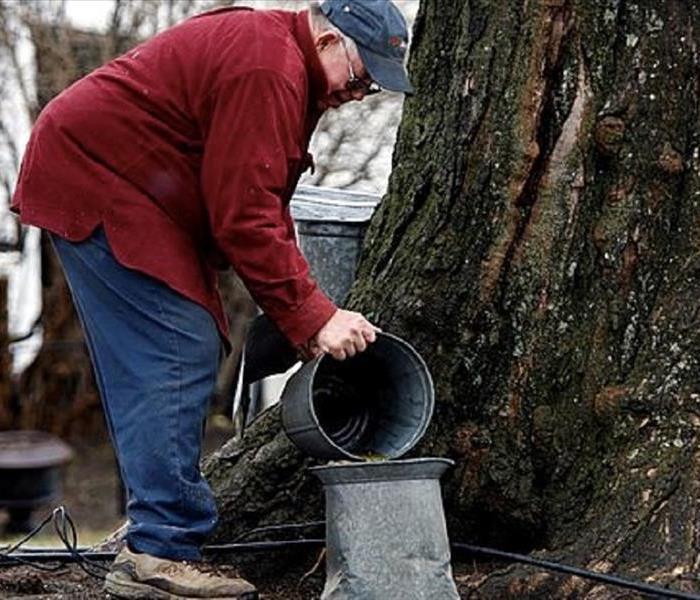 Buckets filled with sap are emptied by 4th generation maple syrup farmer, Ed Jillson in Sabbatus, Maine, at his maple syrup farm.
Buckets filled with sap are emptied by 4th generation maple syrup farmer, Ed Jillson in Sabbatus, Maine, at his maple syrup farm.
Persistent cold postpones maple syrup production in US
Copyright AccuWeather.com
Following one of the coldest winters in decades, the lingering impacts of this year's harsh winter are taking their toll on the maple syrup industry, as Mother Nature has showed no mercy in the month of March for many of the nation's top-producing states.
As the top maple syrup producer for the United States, last year Vermont made more than 1 million gallons of syrup, nearly 40 percent of the total U.S. production, according to the U.S. Department of Agriculture, or USDA.
Last year proved to be an ideal year for the industry, as all states showed an increase in production from 2011. However, this year's cold weather pattern across much of the Midwest and Northeast has halted the start of the tapping period, as a result delaying the start of the sugar season.
Before the start of the sugar season, typically spanning sometime between January and early May, the maple trees must be tapped. "Tapping is done prior to the sugar season which occurs whenever the nights are freezing and the days are thawing in the spring," Owner of Morse Farm Maple Sugarworks in Montpelier, Vt., Burr Morse said. "The optimal weather is nights in the mid-20s, the days in the mid-40s and wind from the west or north."
While nights have been freezing across the prominent maple syrup-producing states, the daytime highs have been problematic since it has been unusually cold. So far this March, temperature departures spanning from Minneapolis to Burlington have all been at least 4 degrees below normal. In Burlington, Vt., departures have been over 9 F colder.
"We normally would be making maple syrup sometime between the beginning of late February or the 10th of March, but it's just been too cold," Co-Owner of the family-owned Sugarbush Farm in Woodstock, Vt., Betsy Luce said.
Other major maple syrup-producing states, including Wisconsin and New York, are also experiencing challenges due to lingering wintry weather.
The outcome of the late cold is the delay in sap flow from the maple trees, and because it takes approximately 40 gallons of sap to make one gallon of pure maple syrup, some farmers are raising concerns not necessarily about the cold but instead the unusual snow pack. "The snow is still packed tight around the trees, normally you need to have it melt a little, so we need to get some warmth to get going," Luce said.
With snow still on the ground, and historically the majority of maple syrup produced in April, farmers can only wait for milder weather. However, the threat of a rapid spring warmup presents yet another worry.
"What we don't want to see is a quick transition from these below-average temperatures to above-average temperatures," Executive Director of the Vermont Maple Sugar Makers' Association Matthew Gordon said. A sudden warmup could cause the maple trees to bud and this will end the sugaring process. "We are somewhat dependent on the weather ahead," Gordon said.
On the other hand, if the weather cooperates with gradual warming during the day and freezing nights, maple syrup producers could experience another year of ample crop.
Scientist Predicted Washington Hillside Failure in 1999
3/27/2014 (Permalink)
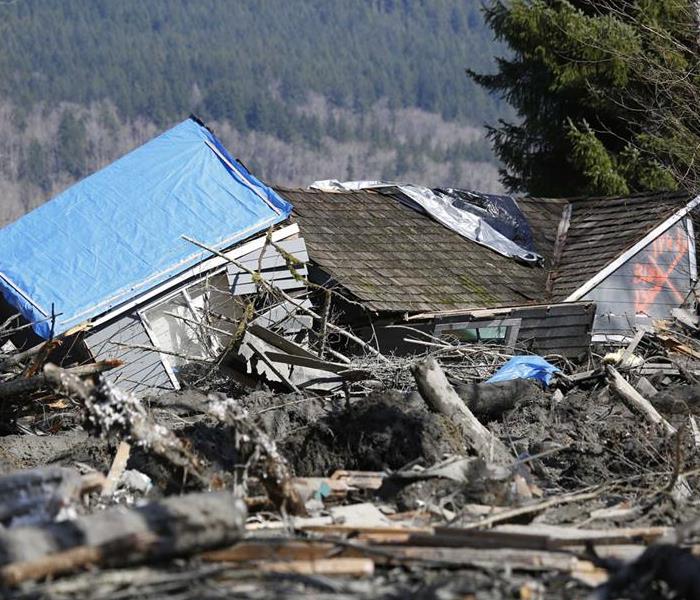 Oso, Washington - March 23, 2014
Oso, Washington - March 23, 2014
A scientist who documented the landslide conditions on a Washington hill that buckled last weekend in a massive mudslide warned in a 1999 report filed with the U.S. Army Corps of Engineers of “the potential for a large catastrophic failure.”
The Seattle Times reports that report was written by Daniel J. Miller and his wife, Lynne Rodgers Miller. Daniel Miller told the newspaper, “We’ve known it would happen at some point.”
Daniel Miller studies land formations and their changes. He also documented the hill’s landslide conditions in a 1997 report for the Washington Department of Ecology and the Tulalip Tribes.
He says he returned to the Snohomish County hill in 2006 within weeks of a landslide that plugged the north fork of the Stillaguamish River and was startled to see new homes being built.
Snohomish County Executive John Lovick and Public Works Director Steve Thomsen said Monday night they were not aware of the 1999 report. Thomsen says a slide of this magnitude is “very difficult to predict.”
Copyright 2014 Associated Press. All rights reserved
Spring Nor'easter: One more storm wallop for East before spring kicks in
3/24/2014 (Permalink)
Copyright © 2014 Heather Tooley
A spring Nor'easter is expected to wallop several states with cold temperatures and falling snow. NBC New York reports March 24 that fall will begin falling Tuesday night. Coastal areas along the Atlantic will see a lot more snow than tri-state areas on Wednesday.
New York City and suburbs located north and west will see snowfall up to an inch while sections of Long Island and Jersey shore could get two inches. Frigid cold and strong winds will also accompany snowfall.
The spring Nor'easter is expected to be the most extreme over the Atlantic Ocean as the storm moves through. By Friday temperatures should rise, hitting the high upper 50s.
As the report, emphasized, since December 2013, 57.4 inches of snow have covered Central Park. It's the city's seventh snowiest winter on record.
A spring Nor'easter is the last thing anyone wants this time of year. The first day of spring was last Thursday and cold temperatures and heavy snowfall is still coming in. Everyone hopes this is the last and final winter cold blast!
SERVPRO of Great Neck Port Washington Welcomes Spring!
3/17/2014 (Permalink)
 New York State Blue Bird
New York State Blue Bird
Spring 2014 begins with the vernal equinox on Thursday, March 20, bringing increasing daylight, warming temperatures, and the rebirth of flora and fauna.
The word equinox is derived from the Latin words meaning “equal night.” Days and nights are approximately equal everywhere and the Sun rises and sets due east and west. At the equinoxes, the tilt of Earth relative to the Sun is zero, which means that Earth’s axis neither points toward nor away from the Sun.
Spring is also the time when worms begin to emerge from the earth, ladybugs land on screen doors, green buds appear, birds chirp, and flowers begin to bloom. The vernal, or spring, equinox signals the beginning of nature’s renewal in the Northern Hemisphere.
Enjoy your day!
Forecasters expect El Nino ocean warming this year, may provide relief for US weather woes
3/14/2014 (Permalink)
(Associated Press reprint, originally published March 06, 2014)
WASHINGTON – Relief may be on the way for a weather-weary United States with the predicted warming of the central Pacific Ocean brewing this year that will likely change weather worldwide. But it won't be for the better everywhere.
The warming, called an El Nino, is expected to lead to fewer Atlantic hurricanes and more rain next winter for drought-stricken California and southern states, and even a milder winter for the nation's frigid northern tier next year, meteorologists say.
While it could be good news to lessen the southwestern U.S. drought and shrink heating bills next winter in the far north, "worldwide it can be quite a different story," said North Carolina State University atmospheric sciences professor Ken Kunkel. "Some areas benefit. Some don't."
Globally, it can mean an even hotter year coming up and billions of dollars in losses for food crops.
The National Oceanic Atmospheric and Administration issued an official El Nino watch Thursday. An El Nino is a warming of the central Pacific once every few years, from a combination of wind and waves in the tropics. It shakes up climate around the world, changing rain and temperature patterns.
Mike Halpert, acting director of NOAA's Climate Prediction Center, says the El Nino warming should develop by this summer, but that there are no guarantees. Although early signs are appearing already a few hundred feet below the ocean surface, meteorologists say an El Nino started to brew in 2012 and then shut down suddenly and unexpectedly.
The flip side of El Nino is called a La Nina, which has a general cooling effect. It has been much more frequent than El Ninos lately, with five La Ninas and two small-to-moderate El Ninos in the past nine years. The last big El Nino was 1997-1998. Neither has appeared since mid-2012. El Ninos are usually strongest from December to April.
Kevin Trenberth, a senior scientist at the National Center for Atmospheric Research, who wasn't part of NOAA's forecast, agreed that an El Nino is brewing.
"This could be a substantial event and I think we're due," Trenberth said. "And I think it could have major consequences."
Halpert said it is too early to say how strong this El Nino will be. The last four have been weak or moderate and those have fewer effects on weather.
Scientific studies have tied El Ninos to farming and fishing problems and to upticks in insect-born disease, such as malaria. Commodity traders even track El Nino cycles. A study by Texas A&M University economics professor Bruce McCarl found the last big El Nino of 1997-1998 cost about $3 billion in agricultural damage.
Trenberth said this El Nino may even push the globe out of a decade-long slowdown in temperature increase, "so suddenly global warming kicks into a whole new level."
Kunkel said if this El Nino is a strong one, global temperatures, probably in 2015, could "be in near record breaking territory."
Halpert, however, says El Ninos can be beneficial, and that the one being forecast is "a perfect case."
After years of dryness and low reservoirs, an El Nino's wet weather would be welcome in places like California, Halpert said.
"If they get too much rain, I think they'd rather have that situation rather than another year of drought," Halpert said. "Sometimes you have to pick your poison."
Australia and South Africa should be dry while parts of South America become dry and parts become wet in an El Nino. Peru suffers the most, getting floods and poorer fishing.
The climate event got the name El Nino, meaning the boy in Spanish, when it was first noticed off the coast of Peru and Ecuador around Christmas time and was named after Christ child, according to Trenberth.
House Passes Homeowner Flood Insurance Affordability Act
3/10/2014 (Permalink)
Targeted News Service
WASHINGTON, March 4 -- Rep. Tom Marino, R-Pa. (10th CD), has issued the following news release:
Today, the U.S. House of Representatives passed H.R. 3370, the Homeowner Flood Insurance Affordability Act, sponsored by Representative Michael Grimm (NY-11). U.S. Representative Tom Marino (PA-10) is one of 237 cosponsors and voted in favor of the legislation, which passed with strong, bipartisan support.
"Millions of Americans are facing dramatically increased flood insurance premiums through no fault of their own, and many low and middle class families are facing foreclosure," Marino said.
"While not perfect, the Homeowner Flood Insurance Affordability Act offers families and storefront owners considerable and immediate relief by repealing the most problematic provisions of Biggert-Waters that have resulted in these dramatically increased premiums, and enacting an alternative that ensures rates are both reasonable and reflective of actuarial risk."
"I am a cosponsor of this legislation not because it is a silver bullet, but because it is a step in the right direction. This bill is a solution for many policyholders in Pennsylvania's10th Congressional District," Marino added.
Specifically, H.R. 3370 repeals certain premium rate increases, restores grandfathered rates, and establishes annual rate increases and surcharges to ensure homeowners are paying rates reflective of what was disclosed at the time they purchased their property. It aims to reach market-based rates; however, it also institutes caps so the jump from prior rates and market rates is a slow, gradual one.
Additionally, the bill requires the Federal Emergency Management Agency (FEMA) to conduct an affordability study and issue a report within two years of the bill's enactment. The report will look at various factors to determine how property owners can maintain affordability if premiums continue to increase and must offer options for enhanced mitigation assistance and means-tested assistance.
"We - Congress - enacted the law that unintentionally resulted in this devastating burden. Now, it is our responsibility to fix it," Marino said.
Marino, who has been leading efforts to repeal the Biggert-Waters Flood Insurance Reform Act of 2012, hosted multiple townhall meetings for affected constituents in recent months and has maintained open lines of communication with key stakeholders, including county officials, insurance agencies, realtors associations, small business owners, and community leaders.
SERVPRO® Joins PGA TOUR Official Marketing Partner Program
2/28/2014 (Permalink)

PONTE VEDRA BEACH, Fla. (February 17, 2014) – The PGA TOUR and SERVPRO®, a national leader in property cleanup and restoration, have announced a new four-year official marketing relationship.
By joining the TOUR’s Official Marketing Partner program, SERVPRO receives the designation as “Official Cleanup and Restoration Company of the PGA TOUR and Champions Tour.” SERVPRO will have the opportunity to have a brand presence at tournaments on both Tours and promote its official affiliation using the PGA TOUR and Champions Tour logos.
Based in Gallatin, Tenn., SERVPRO specializes in fire and water cleanup and restoration services, helping both commercial and residential customers recover from property damage emergencies.
“We take great pride in the quality of our sponsors, and SERVPRO is not only recognized as the brand leader in its own industry, but also one of the top franchises in the country,” said Jay Monahan, PGA TOUR Chief Marketing Officer. “We are extremely pleased to announce our new marketing relationship with SERVPRO and look forward to working together to maximize its sponsorship with the PGA TOUR and Champions Tour.”
SERVPRO recently was listed among the Top 10 of Entrepreneur magazine’s Franchise 500 rankings for the fifth consecutive year. Of the 853 companies qualified for the rankings, SERVPRO earned the No. 7 spot overall for 2014 and No. 1 in the cleaning and restoration industry for the 11th consecutive year.
“Our customers and our Franchisees love golf so we are thrilled to be a PGA TOUR Marketing Partner. The PGA TOUR partnership is a perfect way to expand our brand awareness and thank our clients for allowing SERVPRO to help make it ‘Like it never even happened,’” said Sue Steen, CEO of Servpro Industries, Inc.
About SERVPRO
Founded in 1967, the SERVPRO Franchise System is a national leader and provider of fire and water cleanup and restoration services and mold mitigation and remediation. SERVPRO’s professional services network of more than 1,600 individually owned and operated Franchises responds to property damage emergencies ranging from small individual disasters to multi-million dollar large-loss events. Providing coverage in the United States and Canada, the SERVPRO System has established relationships with major insurance companies and commercial clients, as well as individual homeowners. For more information, visit www.servpro.com.
About PGA TOUR
The PGA TOUR is the world’s premier membership organization for touring professional golfers, co-sanctioning more than 130 tournaments on the PGA TOUR, Champions Tour, Web.com Tour, NEC Series-PGA TOUR Latinoamérica, PGA TOUR Canada and PGA TOUR China. The PGA TOUR’s mission is to entertain and inspire its fans, deliver substantial value to its partners, create outlets for volunteers to give back, generate significant charitable and economic impact in the communities in which it plays, and provide financial opportunities for TOUR players. Worldwide, PGA TOUR tournaments are broadcast to more than 1 billion households in 225 countries and territories in 32 languages. Virtually all tournaments are organized as non-profit organizations in order to maximize charitable giving. In 2013, tournaments across all Tours generated more than $133 million for local and national charitable organizations and in early 2014 the TOUR’s all-time charitable contributions surpassed $2 billion.
The PGA TOUR's web site is PGATOUR.COM, the No. 1 site in golf, and the organization is headquartered in Ponte Vedra Beach, FL.
SERVPRO® EARNS FIFTH CONSECUTIVE YEAR ON ENTREPRENEUR'S TOP TEN FRANCHISE LIST
2/28/2014 (Permalink)
Cleanup and restoration franchisor locks in #7 position on prestigious annual ranking
Roslyn Heights, NY- Entrepreneur magazine recently announced its annual Franchise 500 rankings, naming SERVPRO®, a cleanup and restoration franchise company, to its Top 10 list for the fifth consecutive year. Of the 853 companies qualified for the rankings, SERVPRO® earned the No. 7 spot overall and the top spot in its own industry for the 11th consecutive year. According to Entrepreneur, the Franchise 500 selection processis driven by “objective, quantifiable measures of a franchise operation,” with some of the most important factors being “financial strength and stability, growth rate and size of the system.”
“It's an honor and a privilege to be a part of the SERVPRO® Brand in the Great Neck/Port Washington area,” said Daniel Wallace, owner of “SERVPRO® of Great Neck/Port Washington. “As a leading cleaning and restoration Brand in America, we have a responsibility to serve each and every customer with excellence.”
SERVPRO® specializes in fire and water cleanup and restoration services, helping both commercial and residential customers recover from property damage emergencies. From small one room home disasters, to large commercial facilities, or statewide storm response situations, SERVPRO® helps make property damage ‘Like it never even happened’.
“At the end of the day, every SERVPRO® Franchisee is an individual small business owner who lives and works in the community he or she serves,” said Wallace. “When the unexpected happens, local home and business owners know that they can turn to us to help them put their lives back on track as quickly and painlessly as possible. As this year’s Entrepreneur rankings demonstrate again, this is both a responsibility and a privilege that each SERVPRO® Franchisee takes very seriously.”
For more information about SERVPRO® of Great Neck/Port Washington, please contact (516) 767-9600, servpro9497@optonline.net or visit www.servproofgreatneck.com.
SERVPRO Signs On as National Sponsor for American Red Cross “Ready Rating" Program
2/28/2014 (Permalink)
GALLATIN, Tenn. (Grassroots Newswire) – SERVPRO, a disaster recovery and cleanup Franchise System, has signed on as a national sponsor of the American Red Cross Ready Rating™ program, a free, web-based program designed to help businesses, organizations and schools become better prepared for emergencies.
"This partnership just makes perfect sense," said Rick Isaacson, Executive Vice President of Servpro Industries, Inc., "and truly completes the readiness equation for businesses and other property owners. The Red Cross Ready Rating Program allows individuals to assess their readiness for a disaster, so they can take all necessary steps before disaster strikes to protect their property from damage and loss. But, when disaster does strike, knowing what to do and who to call saves time – and fast response is key to minimizing damage and downtime. That’s where SERVPRO’s Emergency READY Program can help. Together, these two programs offer maximum peace of mind to businesses and other organizations."
"Through the generosity of SERVPRO, the Red Cross will help empower workplaces to re-open more quickly after natural or man-made disasters such as water main breaks, medical emergencies, power outages, tornados, floods and hurricanes through the Ready Rating Program," said Tom Heneghan, manager of Business Continuity Programs for Red Cross.
"Up to 40% of businesses never re-open their doors after such disasters; SERVPRO’s partnership will enable more businesses, schools and organizations to become better prepared. We are excited to have SERVPRO join us in community outreach efforts to educate and highlight the importance of community preparedness in neighborhoods across the country."
With the approaching spring season comes the threat of severe weather – such as high winds, downpours, flash flooding, fires caused by lightning strikes and even tornadoes spawned by thunderstorms. SERVPRO urges all property owners to visit the Red Cross Ready Rating website now at readyrating.org to complete a 123-point self-assessment of their level of preparedness for weather-related or other emergencies. Aligned with the federal government's Private Sector Preparedness standards, the Ready Rating assessment offers businesses, organizations and schools access to tools, tips and best practices to help improve their level of preparedness.
Isaacson says key to the program are the following Five Essential Steps to Preparedness – the cornerstones of the Ready Rating program:
1. Commit to Preparedness
2. Conduct a Hazard Vulnerability Assessment
3. Develop an Emergency Response Plan
4. Implement your Emergency Response Plan
5. Help Your Community Get Prepared
"The time to prepare for a disaster is before it happens," said Isaacson. "Taking steps to make your property as secure as possible, then having a plan to deal with the aftermath if disaster does strike is just good business and common sense. Our SERVPRO disaster cleanup specialists can help you create a disaster recovery plan now, specific to your facility, so that – if you need us – we can help you get back in business fast."
SERVPRO specializes in disaster restoration, cleanup and repair services, helping to remediate damage, making it "Like it never even happened," for both commercial and residential customers. For information on readiness resources including SERVPRO’s free Ready Plan Mobile Application, available on all smartphones, please visit www.SERVPRO.com. For more information about the Ready Plan Mobile Application, visit servpro.com/ready.
For more information on the Red Cross Ready Rating program, please visit readyrating.org.




 24/7 Emergency Service
24/7 Emergency Service


